




Hello,
We have been working hard on issue 10 of Rarity Life magazine these past few months, and hope that you enjoy reading it as much as we have enjoyed the process of bringing it to life. It is an honour and a privilege to be entrusted with your stories, and the stories we share are just that; your stories.
Summer is the perfect time to get out and to explore, for ideas and inspiration read our ‘Summer Days’ article, as well as our Accessible Travel guide to the stunning island of Malta. Our cover star is the incredible and tireless advocate Jono Lancaster, who shares not only his experiences but showcases a bold new look in our regular Style section. We also share the stories of three strong women with visible facial differences, Lucja, Amba and Theresa, as well as an interview with Jenny Whitman, the Executive Director of the Moebius Syndrome Foundation. Sport and the positive and powerful opportunities it can unlock is another theme that is woven throughout this edition, from our interview with the Special Olympics GB through to our feature on ‘Adaptive Fitness.’
As ever, we’re so grateful to everyone who contributes their time, effort and stories to this magazine and to Same but Different. Thank you for taking the time to read #RarityLife and please do share it far and wide. We welcome your thoughts and ideas for future issues, so please do get in touch - we love hearing from you!
Same but Different

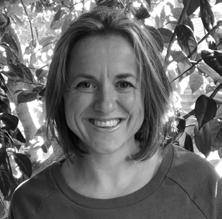

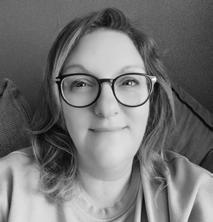
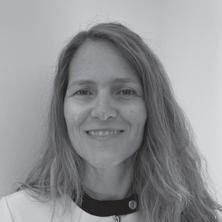
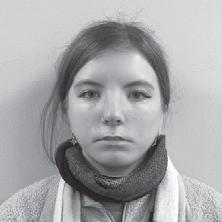
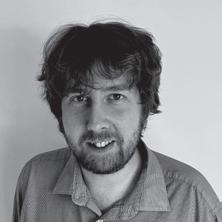
Anger and Heartbreak
guide to supporting bereaved children
Embracing Wholeness: A Journey of Mind, Body and Nature Connection In conversation with Rachel Barker, nature-based Health Facilitator and Yogi
Dare to be Different this summer with a fresh take on the classic white shirt. Choose simple bright colours or bold designs, or opt for a jacket as modelled by our brilliant cover model Jono Lancaster. Shirts are the foundation to a good wardrobe, versatile, timeless and effortlessly smart. They are appropriate for almost every occasion, a truly stylish staple piece.
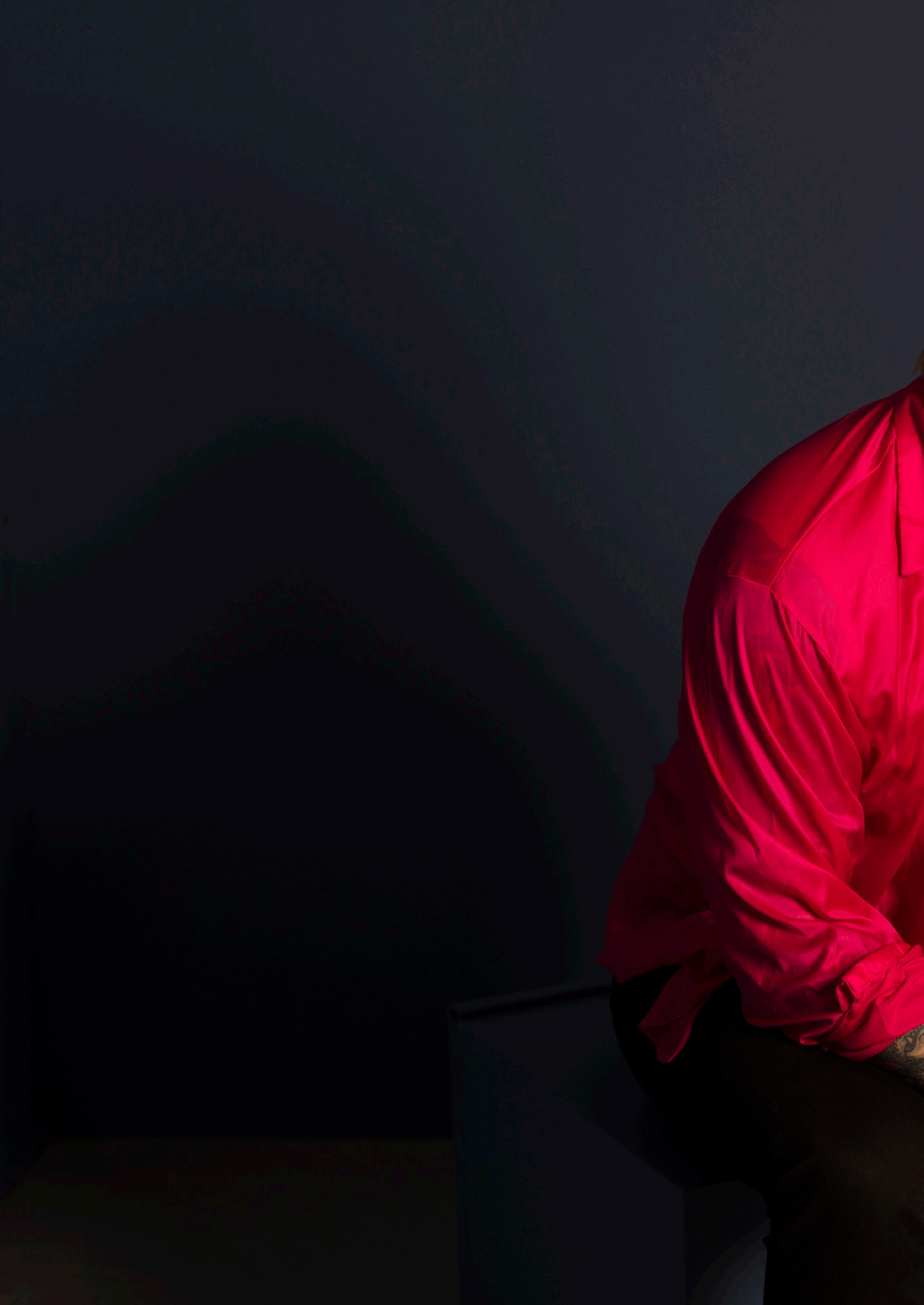
All photographs by Ceridwen


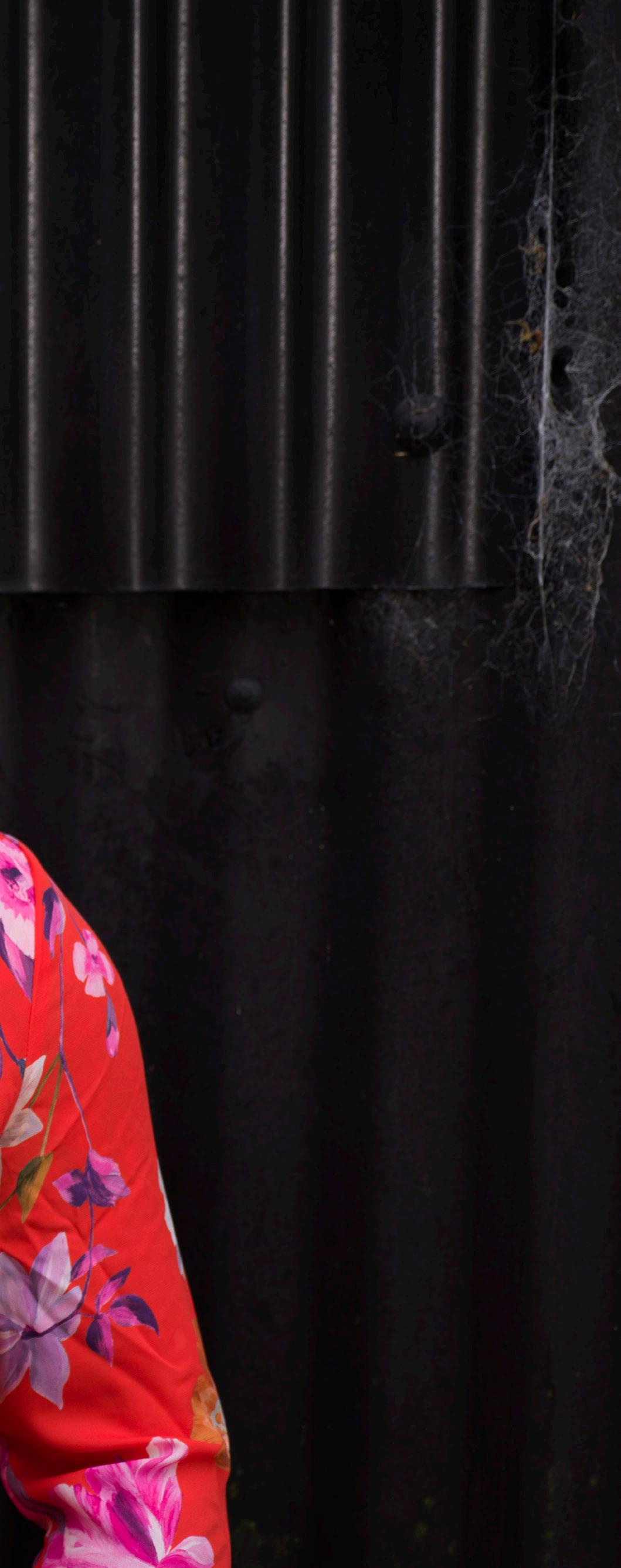
“Representation
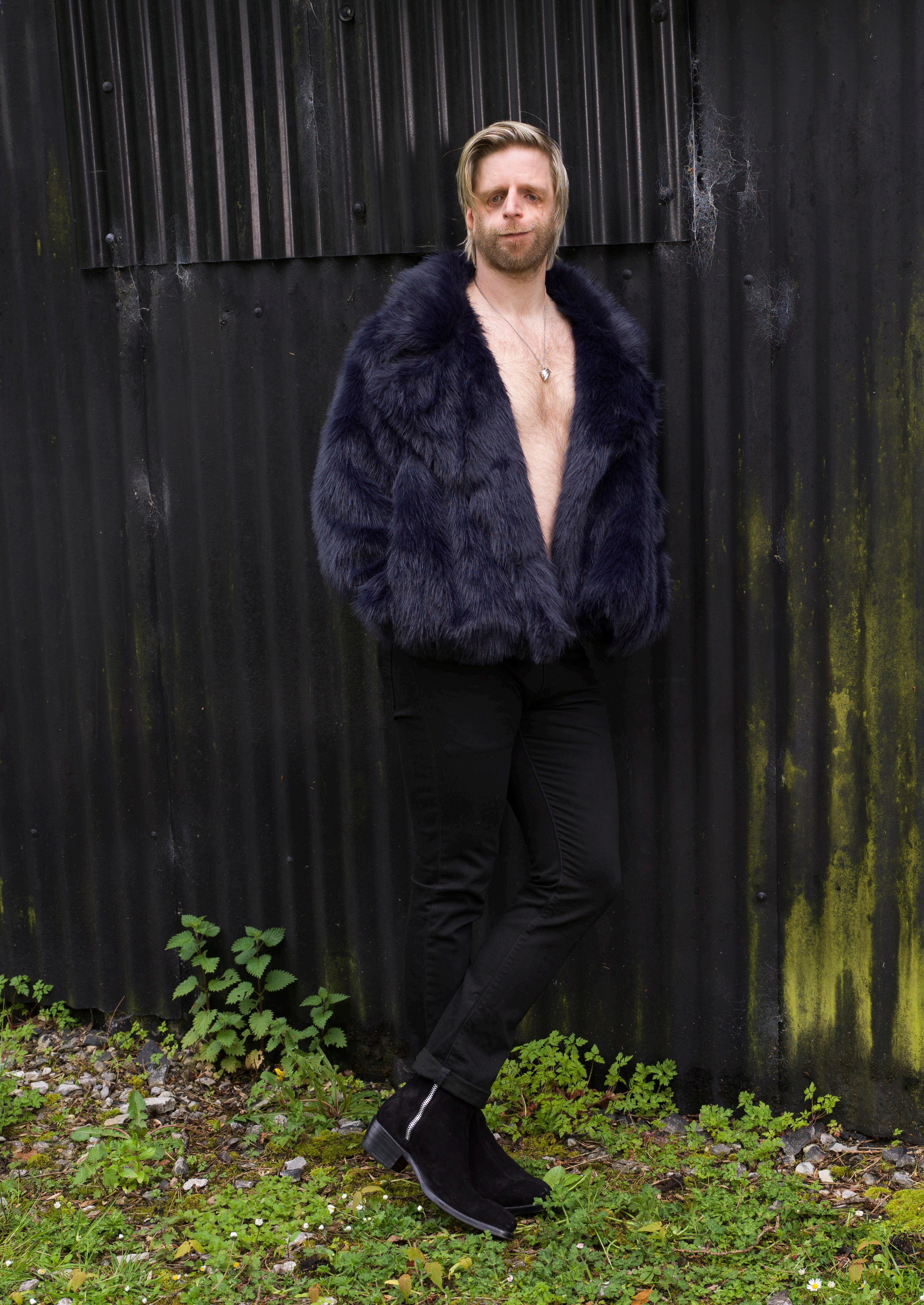
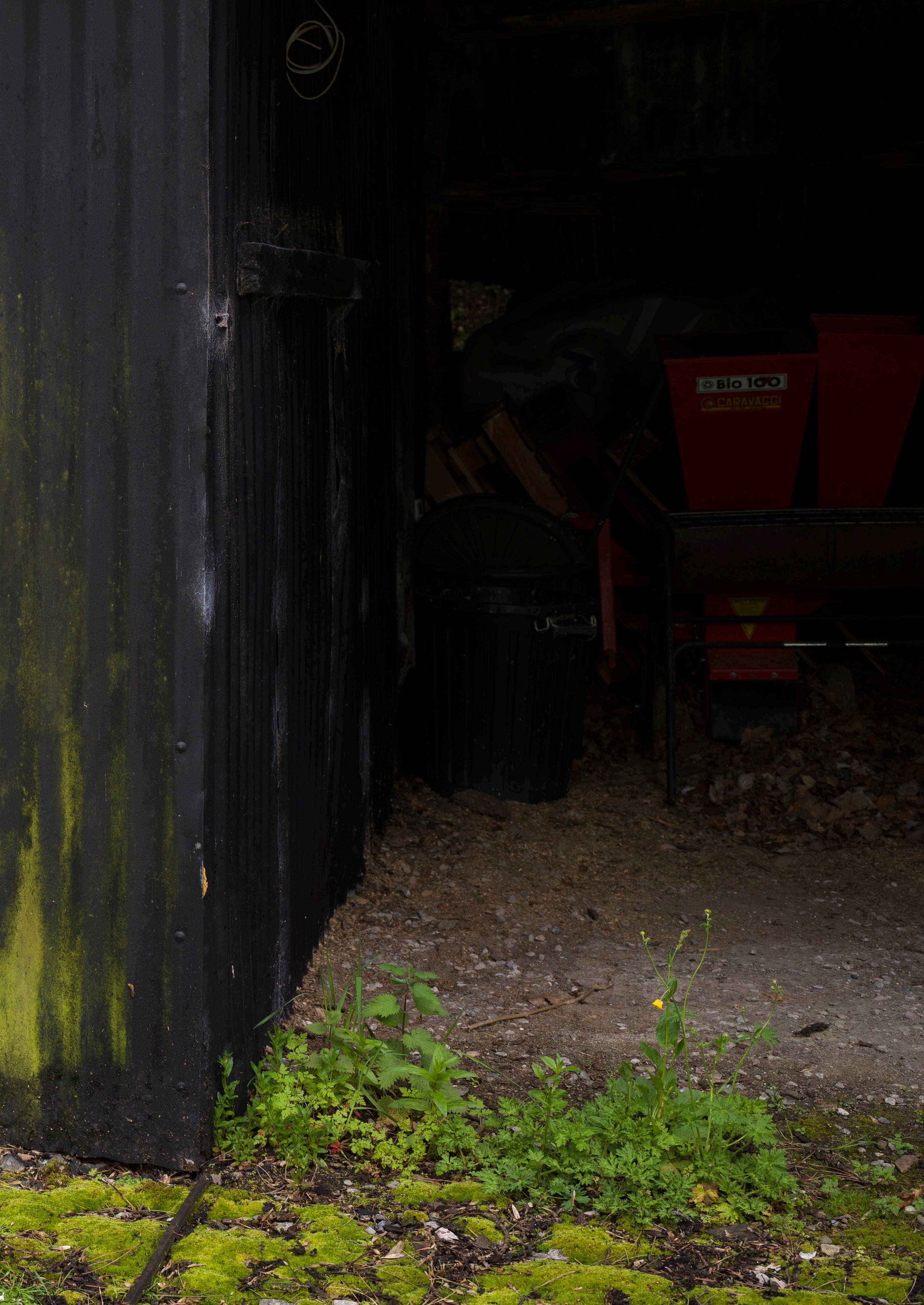
“Growing up there were times when I was feeling very vulnerable, very scared, and I questioned what my future would look like with a visible difference.”
Author, advocate and inspirational speaker
Jonathan ‘Jono’ Lancaster was born with Treacher Collins syndrome, a rare genetic condition which causes facial differences. From a young age he knew his appearance was markedly different from that of anyone he knew or had seen.
Growing up with a facial difference has led him to the path he walks proudly today, helping and supporting others worldwide, but he wasn’t always as accepting of his condition. “The more I struggled, the more I started to look everywhere for people with visible differences. However, I didn’t see anybody. I questioned constantly, why do I look like this? Am I ever going to find love? Am I ever going to find happiness? When all you see out there are negative images or negative stories attached to people with visible differences, you start to believe your future is negative.”
The absence of people with facial differences in the media can intensify feelings of isolation and negativity. Worse still, the rare representations of those with facial differences are often relegated to villainous characters, perpetuating a narrative steeped in negativity and fear rather than acceptance and understanding. The stark underrepresentation is still obvious today. Jono is a huge believer in changing things and providing positive role models.
“Representation matters. If we’re putting a filter on that, not showing a broad section of society, we are not giving anything a true representation.” The lack of differences are even more apparent to those searching for them.
It is not only TV that is filtered to an unrealistic beauty standard today: the digital landscape is dominated by filters in the pursuit of unattainable aesthetic perfection. This further complicates the quest for acceptance, diversity, and inclusivity. Social media platforms, equipped with tools and filters that alter any perceived imperfections, promote a homogeneous beauty standard. Every
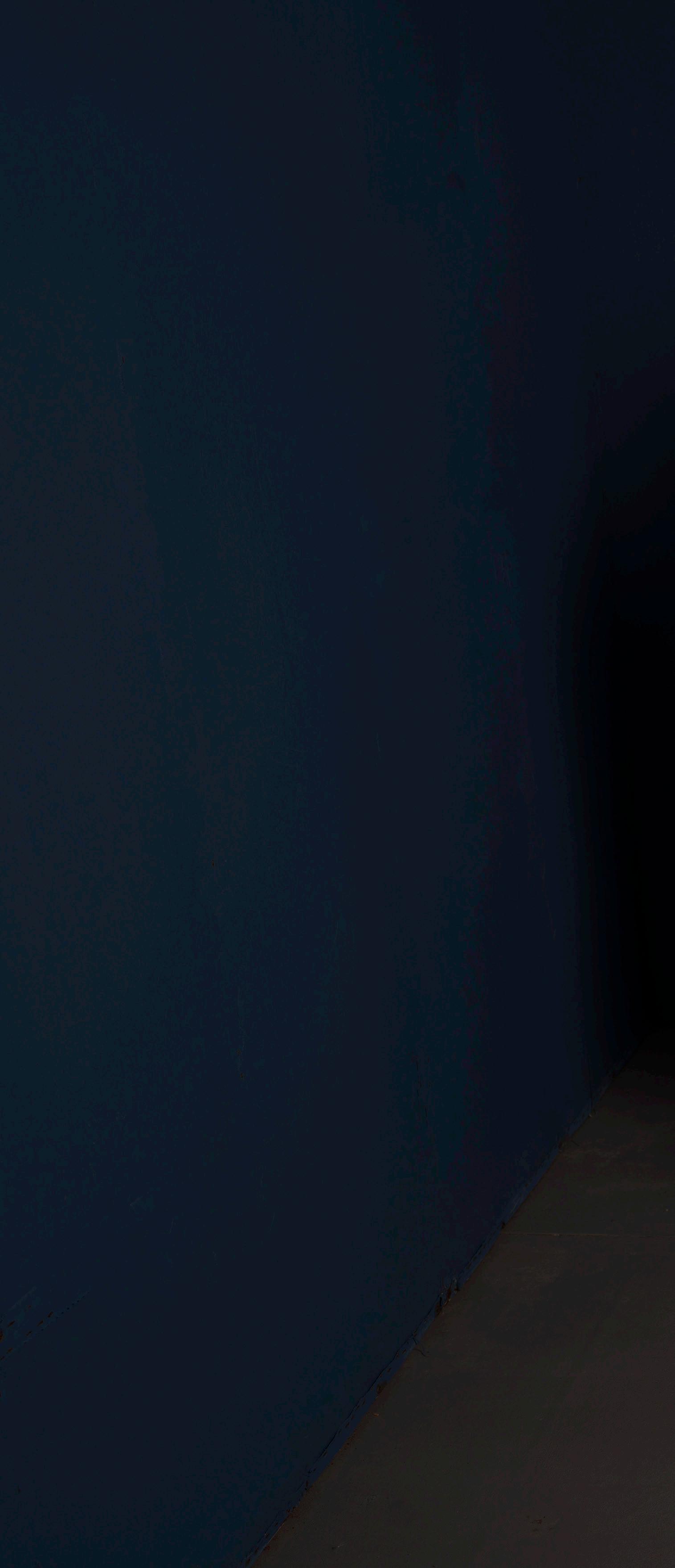
click of the filter button, while seemingly innocuous, perpetuates a cycle of erasure—a denial of the unique beauty inherent in everyone. This provokes strong feelings for Jono.
“When it comes to filters, there’s two emotions that I have. When an industry, photographer or brand filter something that frustrates me, it angers me. We need to see realness. Then when an individual attaches a filter to their photos, that saddens me because already, they’ve got this learned behaviour to hide their uniqueness, and yeah, that really saddens me.”
It’s disheartening for him in the work he does in helping others. The virtual alteration of reality not only distorts public perceptions of beauty but also impacts individual self-esteem. It encourages a culture of hiding rather than celebrating individuality and unique traits, fostering insecurities and dissatisfaction with natural appearances which will affect people, especially young people growing up in today’s society. To look in the mirror and not see our filtered images staring back can continue to decrease the self-esteem, confidence and mental health of society.
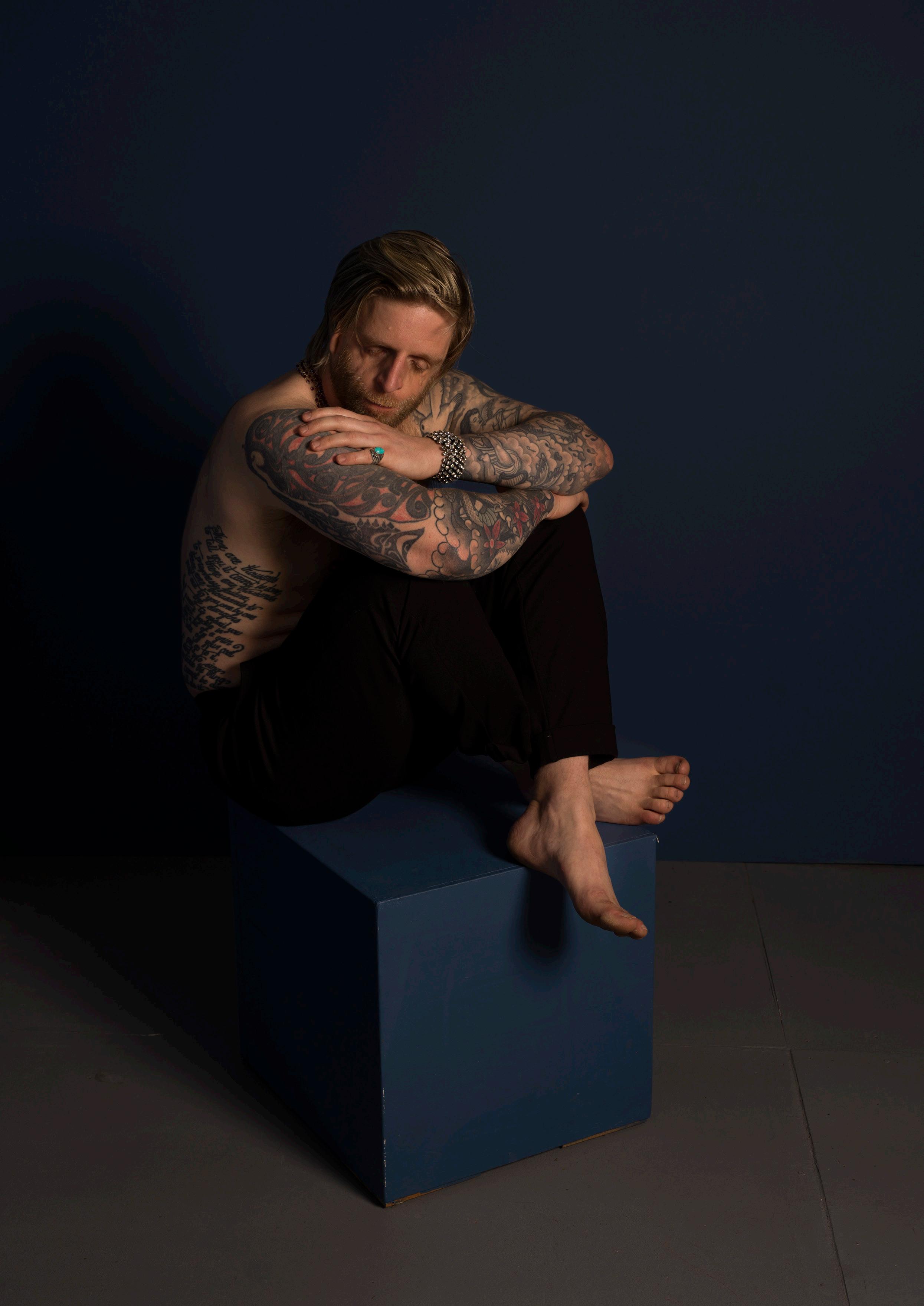

“When it comes to our faces, I think every single one of us should just try and get into that routine of saying ‘this is a photo, and I’m going to share it and that’s it.’ I think we put too much on the finished article, the finished product, it’s got to be at the right angle, it’s got to be the right lighting, and don’t get me wrong, it’s fun to take photos with the right angle with the right light and you can have fun behind it, but when that becomes a must for all your photos, then we’re on dangerous ground there.”
It’s important to him that projects strive to include people with facial differences in historical and contemporary narratives; they’re not just necessary but long overdue. Recently he has agreed to participate in Same but Different’s Rarely Reframed exhibition where the aim is to provide visibility and expression and challenge long-standing stereotypes. Awareness, acceptance, and equality is something that he is passionate about.
“The reason why I’m passionate about campaigns like Rarely Reframed is because it has a powerful message that people with visible differences need to be seen. They should have been seen all those years ago, they shouldn’t have been hidden. I know some cultures and countries still hide people with visible differences and that’s heartbreaking.”
Today is a long way from his childhood and his confidence, determination and empathy drive a lot of what he does in making the world a more accepting place, working with others to help them build up their confidence, be themselves and be proud of who they are. “I love having my photo done. I love dressing up. I love working with a camera it’s something that I enjoy. In the past having my photograph taken used to terrify me and the fact that I’ve just had a photoshoot, you know, chest out, hairy, not been to the gym in a while, I have just turned up as me, authentic and vulnerable, and I love it.”
Not only is Jono a role model for people with visible differences but he inspires many to just be themselves and know their own selfworth, something, at times, we all could do with remembering. There is no such thing as perfection, and you are the only you there is in the world. “So, for us all, relax your shoulders, look up, make eye contact with people and smile. Think, this is my face. I’m going to show it and if you do, that is amazing. That base level of ‘this is me.’ That’s massive.”
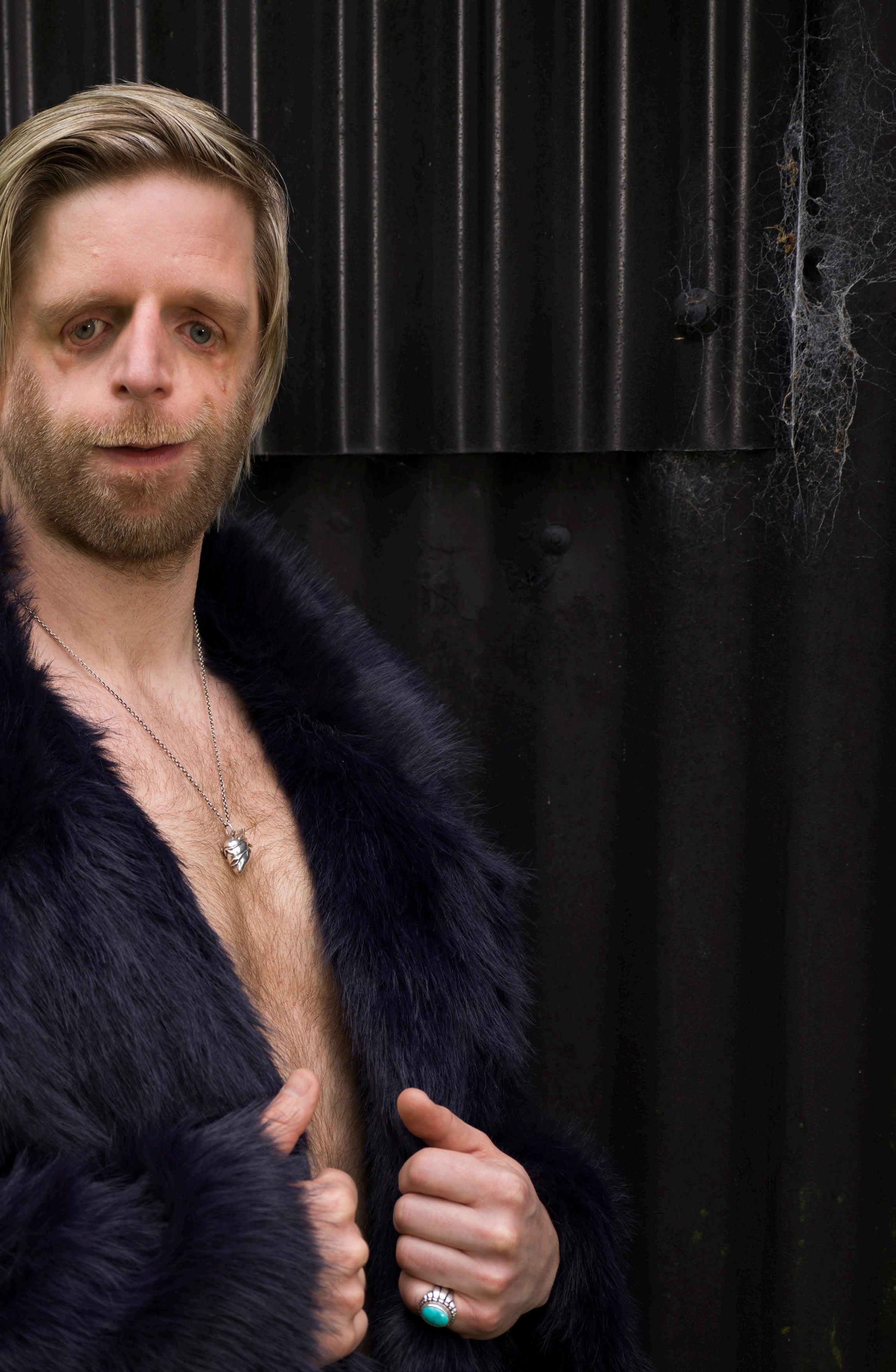
Treacher-Collins syndrome, also known as mandibulofacial dysostosis, is a congenital condition affecting facial bones and tissues. It’s caused by mutations in genes, that are crucial for bone and tissue cell development during pregnancy. The syndrome is usually inherited in an autosomal dominant manner, meaning a child only needs to inherit the faulty gene from one parent to develop the condition but, over half of the cases arise from sporadic mutations. Symptoms vary greatly but commonly include a characteristic facial appearance due to underdeveloped cheekbones, jaw, and eye sockets, which can lead to breathing and feeding difficulties. Some children may also have a cleft palate, coloboma, and hearing impairment due to underdeveloped or absent ears. Find out more
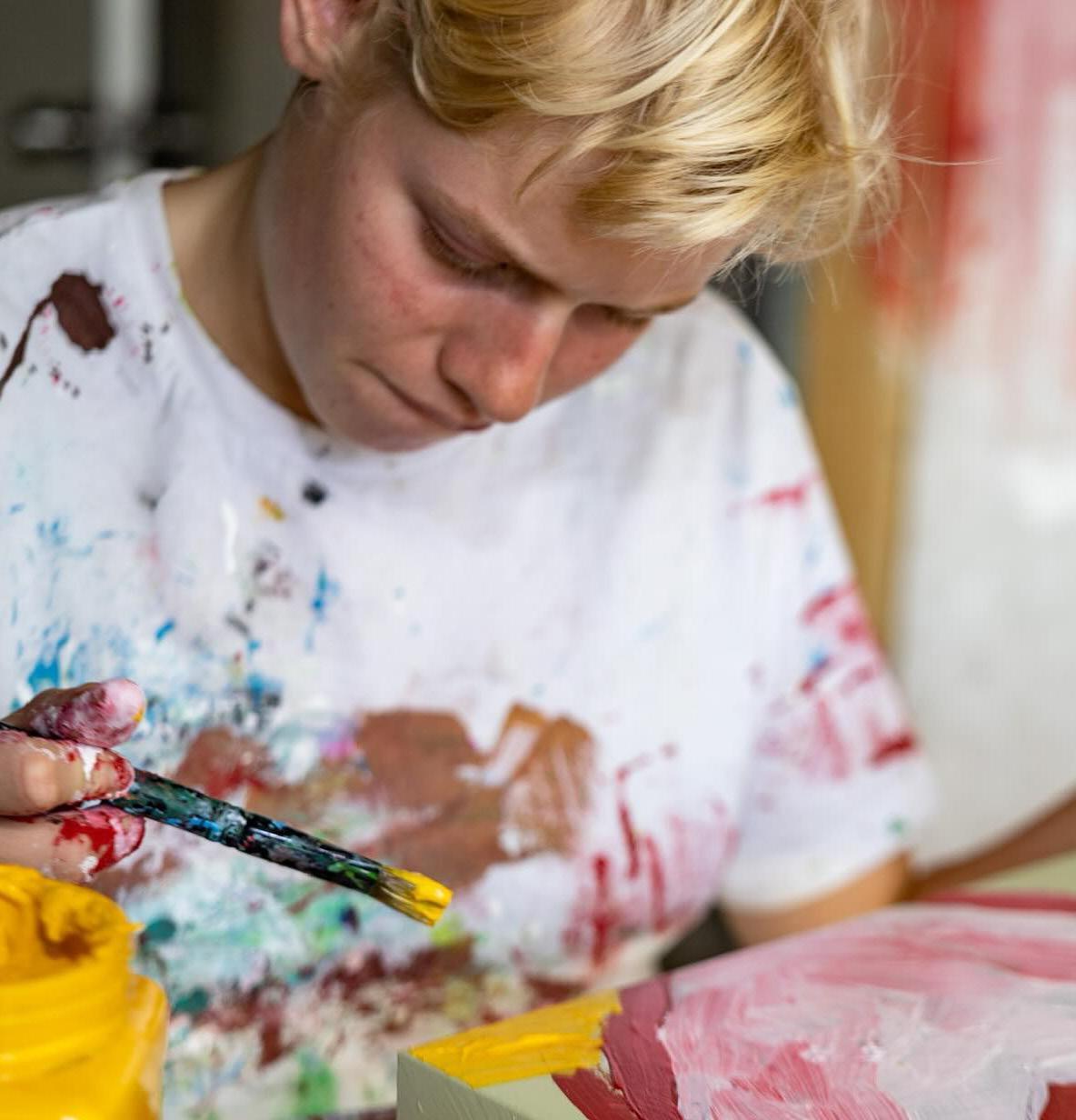

In conversation with Betina Genovesi
“This ‘yes’ changed our lives forever.”
Clara Woods has just turned eighteen years old, and celebrated in style by hosting an exclusive birthday party at the Rouge Collective in Newport Beach California. The party marked the launch of her newly curated art exhibition which featured her 1000th piece of art, and at which the groundbreaking new ‘Inclusion Matters’ wall was built. Clara’s special day was truly one of celebration; the celebration of life, of acceptance, of hope, of saying ‘yes’, of the power of art, and the beauty that is to be found in true inclusion.
Clara was born in March 2006 in Italy into a truly cosmopolitan family, which partly explains her incredible ability to understand English, Italian and Portuguese. Her mother Betina was born in Brazil, but moved to Italy, the country her father was from, in her early twenties. It was here that she met Carlo, who although he was born and raised in Italy, had a Canadian father and a Dutch mother.
Betina and Carlo married and settled in Florence, and it was here that Clara was born. Betina explains that Carlo had been married previously and was the proud father of two grown up daughters, the youngest of whom lives with muscular atrophy. After Clara
was born they noticed that “her right hand was always closed, and that she couldn’t move during the night and so she was always in the same position when she woke up.” Initially, Betina recalls, the wider family thought that she likely also had muscular atrophy, but during early visits to the doctors her concerns were dismissed and she was told that “each child has their own time.” On a trip to Ikea however, when Clara was around a year old, everything changed for Betina. “I saw a baby like Clara, but she was doing everything and then I said ‘Okay, something is really wrong.’
“She has a big community that can follow her with whatever she will go on to do, because a lot of people see her as a role model, who is motivational and inspirational so I think she will have opportunities.”
Then we started investigating; first they did the muscular atrophy gene testing on me to see if I had it, and then as I didn’t they said that Clara could have scarring in the brain.”
After an MRI scan (an MRI scan refers to magnetic resonance imaging, which is a type of scan that uses strong magnetic fields and radio waves to produce detailed images from areas that are inside the body) of the brain Betina and Carlo were given the devastating news that they had found some significant areas of damage, and her future prognosis was very poor. “They said that she will not be able to process and organise information, mostly to do with walking and speaking.” But, when faced with this potentially devastating news Clara’s parents decided that they would continue to treat their beautiful daughter normally, just as they had up until that point.
“We decided to accept
it. Our word I always say is acceptance, because we were not interested in thinking ‘why did it happen?’ We just said ‘Okay, let’s always live like she’s normal.’ We never let her disability dictate her life you know, we don’t say ‘you can’t do this or do that’.”
Over the next few years as Clara, who had been enrolled on a neuro rehabilitation program, thrived, and despite the bleak prognosis she had been given in those early days she learnt how to walk. However, despite her parents’ determination that Clara be allowed to live a normal, active and fulfilling life as she grew older certain areas of her development did not progress as they’d hoped, mostly notably with her ability to organise language output and although she can understand three languages she cannot speak, read or write. Betina
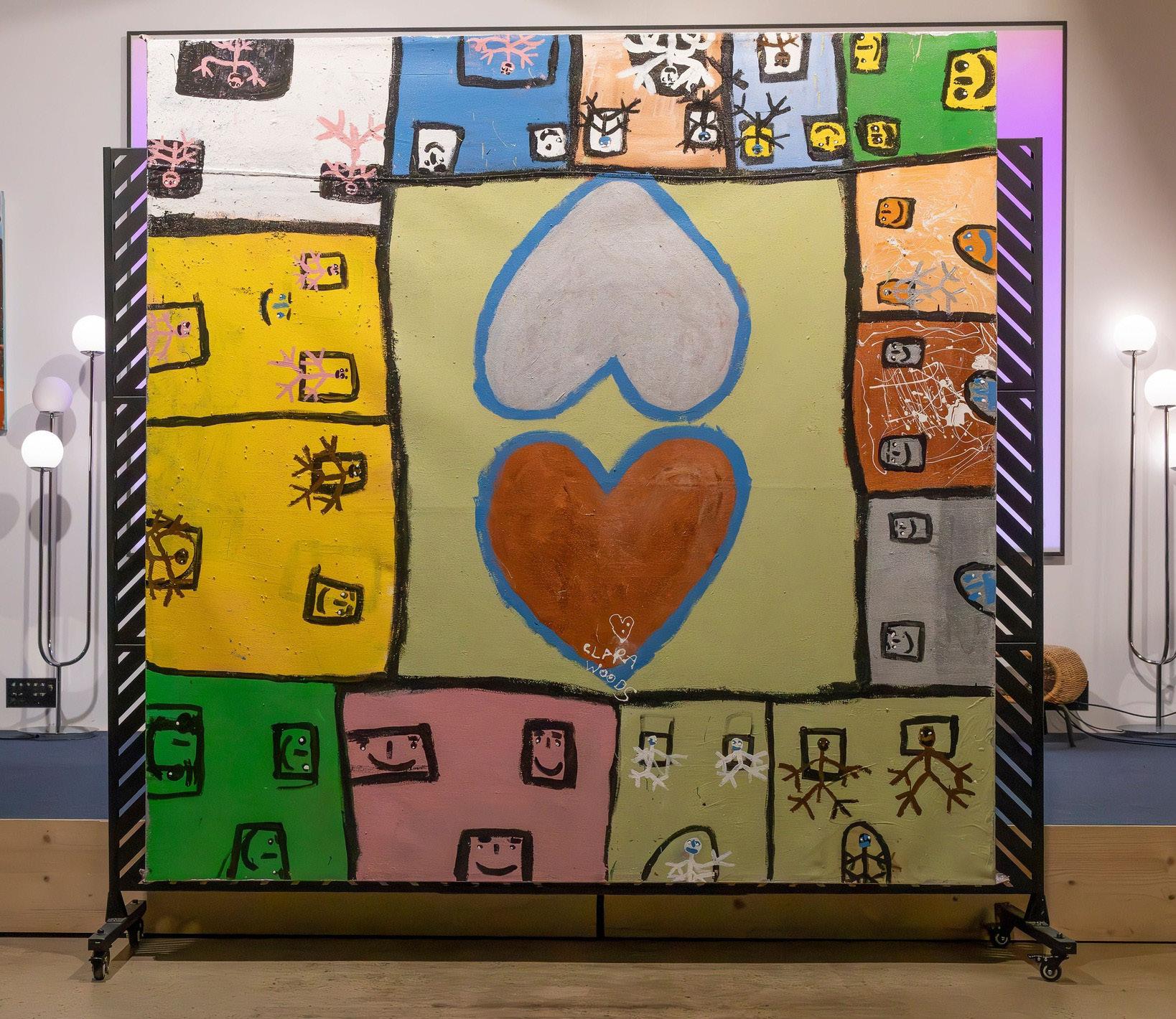
“Everyone has their problems, and if you just look to these, you will live a miserable life, but you can take the opportunities God gave you, because it is your strength and spirit that brought us here.”
explains that “for Clara it’s difficult because her problem is in the output of the information, so she can understand the language but she cannot organise it to speak. But she can communicate using her own signs and her own language. She also has AAC software that she hates to use, but I’m sure that if she started using it a lot she would be able to create output using photographic memory, for example she has been using WhatsApp and iMessage and she has learnt the words/ symbols for actions like video call.”
But without the ability to be able to make herself easily understood in the world it became harder for Clara’s parents not to worry about her future, their main fear lay in the lack of meaningful opportunities for people living with a neurological disability. “I was worried about what Clara will do when she grew up, about what her job might be.” It was this fear of the possibility of a future with no real or meaningful work prospects that led to Betina and Carlo to
where they are today, working alongside Clara in her journey as both a digital influencer and an artist.
Betina’s background was in marketing and branding, and her familiarity with the use of social media to effectively create a powerful platform saw her launch Clara’s social media profile, initially on Instagram, when Clara was 10 years old. At this time Clara was also discovering a passion for painting; “initially she was painting for fun, and in the beginning she would destroy every painting, painting everything black… but then we started seeing a lot of nice paintings, with colours and forms, and when she was painting she was more calm and relaxed.” In painting Clara had found her home, a way to share and channel her emotions, and her experiences of the world.
It was on a work trip that Betina first bought Clara an illustrated book about the artist Frida Kahlo, a book that, just like the fateful Ikea trip years earlier, changed everything. One day Clara showed Betina the page which told the story of Frida visiting New York for the first time to visit an exhibition of her work there, and told her that she wanted to do that too. “And I said ‘okay, let’s try. It will be hard, there will be a lot of challenges but we can do it. I always

say that yes, changed my whole life. Because I could have said ‘no, what are you saying, it will never happen because you have a disability’ but I said, you know what? Let’s try.”
They did try, and what happened over the next few years was truly the stuff of fairytales. After hosting her first art exhibition at the age of just twelve years old in Florence in March 2018 Clara has gone on to exhibit her paintings in major Italian cities, and has also held exhibitions in Japan, London, as part of the broader Art Basel celebrations
in Miami (Art Basel is a world famous international art fair staged annually in Basel, Switzerland; Miami Beach; Hong Kong; and from 2022, Paris) and across the US.
Alongside her exhibitions Clara has a website where she sells prints or limited editions of her artwork as well as accepting commissions, making her work accessible to an audience that extends far beyond those people who visit exhibitions. Her work is vibrant, colourful and often full of exuberance and joy. Betina explained that recently, “one client bought a print and then she said ‘I never cared for art. I never understood art, and I bought this from Clara and I was just staring at it for hours’.”

Clara also has a number of social media channels which help create an engaging and interactive platform for people to connect with Clara and her work in new and different ways.
“I saw a baby like Clara, but she was doing everything and then I said ‘Okay, something is really wrong.’ And then we started investigating; first they did the muscular atrophy gene testing on me to see if I had it, and then as I didn’t they said that Clara could have scarring in the brain.”
Behind this incredible success lies not only the talent and joy that is evident in Clara’s work, but also the hard work and dedication of her family. Betina and Carlo decided early on that if Clara was to be successful it had to be because of what she could do, and not who she was. Most crucially, that her talents and her work should serve to support her, and to offer her the opportunity to live a life filled with meaning and purpose.
“After Clara’s first exhibition went viral in Italy, we asked a judge for permission to open up a company for her, she was the first kid to have her own company in Italy. We decided not to set it up as a nonprofit, because if you like her art, you buy it for its artistic value, and not because you are ‘helping’.” Over the years it became clear that continued efforts were needed to support Clara’s dreams. Alongside trying to run
her own business, looking after both Clara and her younger brother Davi was simply too much for Betina and she made the tough decision to sell her business and fully invest both the proceeds, as well as her time and efforts, into nurturing and growing Clara’s company. Around the same time they applied for, and were granted, an ‘Extraordinary Talent’ visa for Clara to live in the USA, with her family moving with her as her dependents. This was a huge step for the family, but it brought with it the opportunity to fully embrace the American mindset that “if you have a dream, you can go and do and if you fail, it’s okay.”
One of the questions Betina and Carlo have been asked, and have often reflected on over the years is if following Clara’s dreams is the right thing to do, both for
Clara, her brother and also for themselves? The simple truth is, in focusing their family life in this way they can find a way to be together, and to create the space both Clara and Davi need in order to grow and develop. “We do not take it for granted that we should do this, most parents are not doing anything like this but instead they have their jobs. We realised that if we have this job with her, we can work together and also be and do things together. Otherwise we will have our jobs, and she would be with a carer, or maybe working, but I don’t know where, or how that would be possible.”
Betina is clear that whilst their work is currently focused on creating, managing and growing Clara’s brand they do this with Clara’s needs and wishes kept firmly at the heart of each decision.

“We respect her limits, and her needs. But if a child wants to be the best sports player in the world, then their parents will bring them to hours and hours of training, they will make them eat well, and they will support them. It is the same with Clara, I think she can be the best artist in the world. After all she has already showed and sold more than 800 paintings worldwide! Which other artists did that at just eighteen years old? She has potential so we will embrace this life, if it’s what she chooses to do.”
And, if she chooses not to then she has the opportunity to find something else to do. Opportunities that she likely would not have had if her family had not decided to change their lives to follow her dreams, and to create a world in which she can not only participate but thrive. “She has a big community that can follow her with whatever she will go on to do, because a lot of people see her as a role model, who is motivational and inspirational so I think she will have opportunities.”
But for Clara, like for so many teens, life is not always easy. She struggles with questions about who she is, and her place in the world. Whilst she might work hard to create a world that is truly inclusive, without barriers or discrimination, navigating a world where you can understand but not communicate freely is hard. Betina explains that Clara longs to have friends, a boyfriend maybe, and to live the life she can see others around her living so much more easily. She can see and understand that her disability at times creates a barrier to inclusion, and that is a hard thing to carry, for anyone, but especially for a teenager on the cusp of adulthood. “I say to her ‘you are eighteen, you have what a lot of kids want to have, you have work. You have people that value you, that like you. You have a company. You cannot just see your disability. Everyone has their problems, and if you just look to these, you will live a miserable life, but you can take the opportunities God gave you, because it is your strength and spirit that brought us here’.”
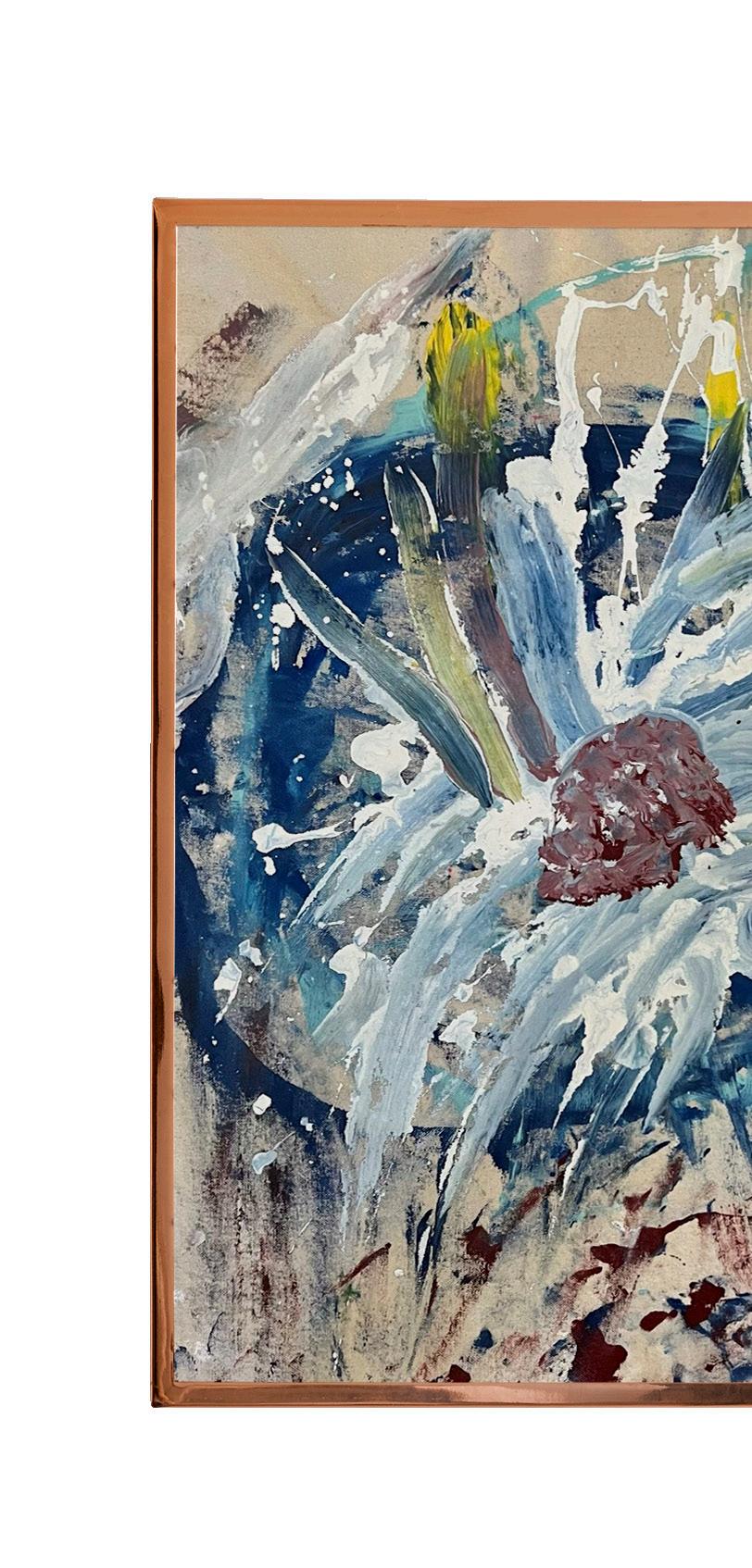
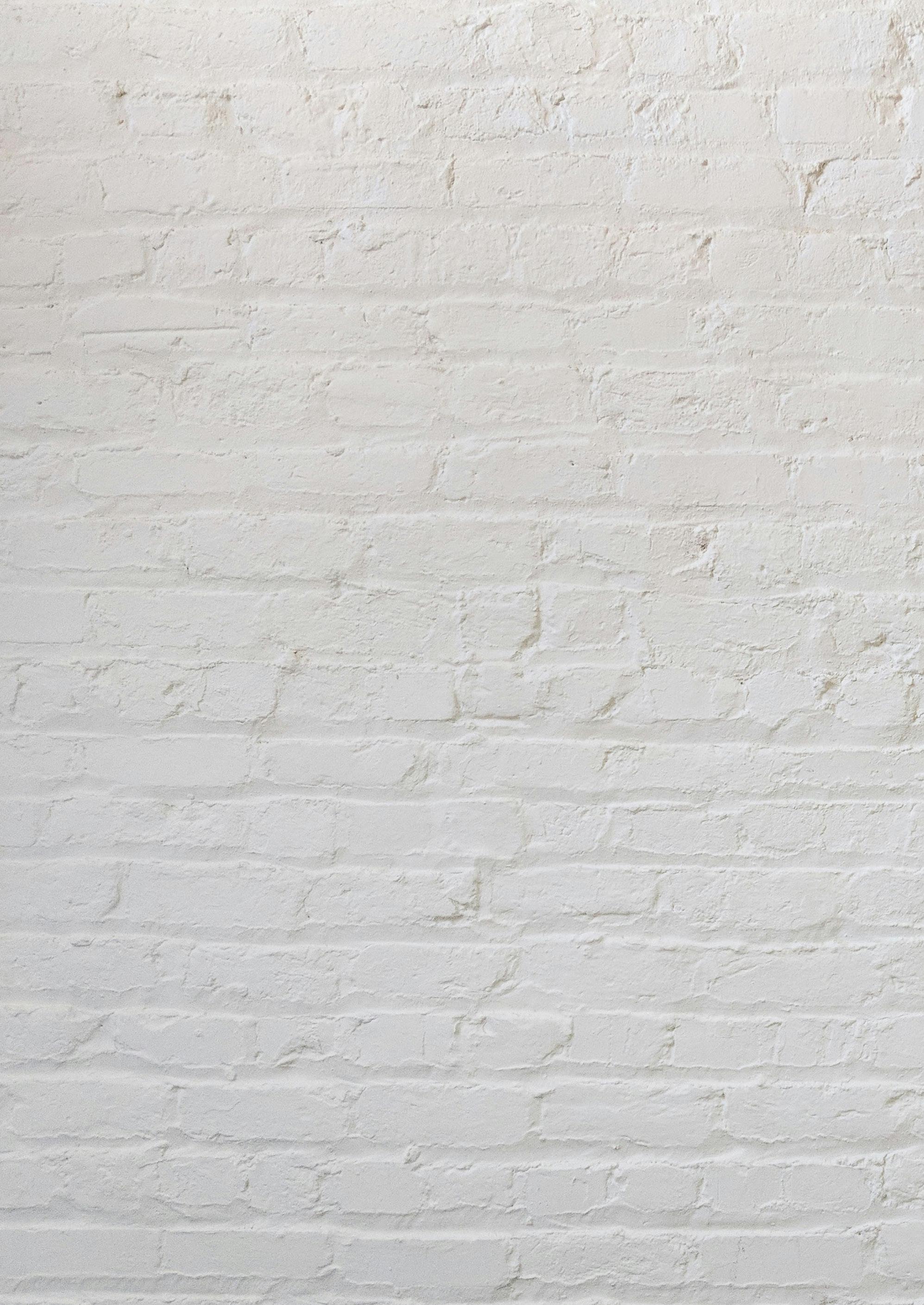
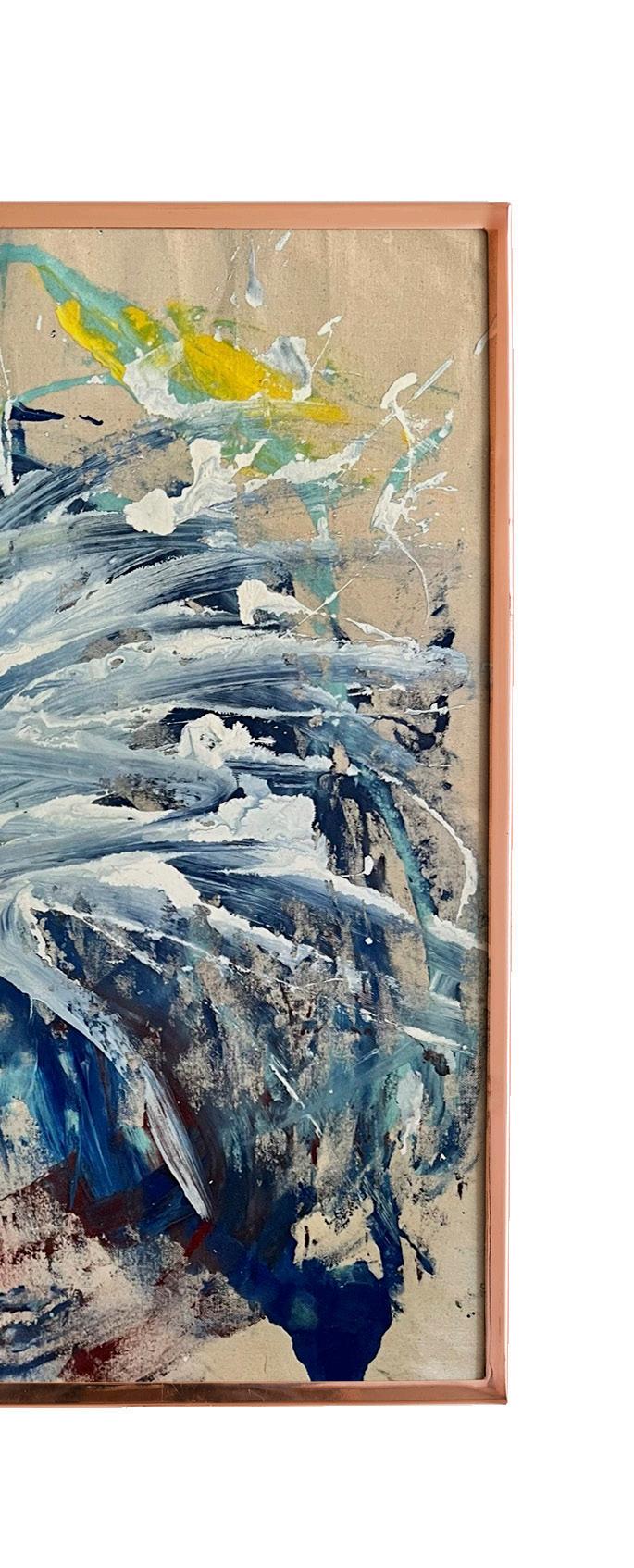
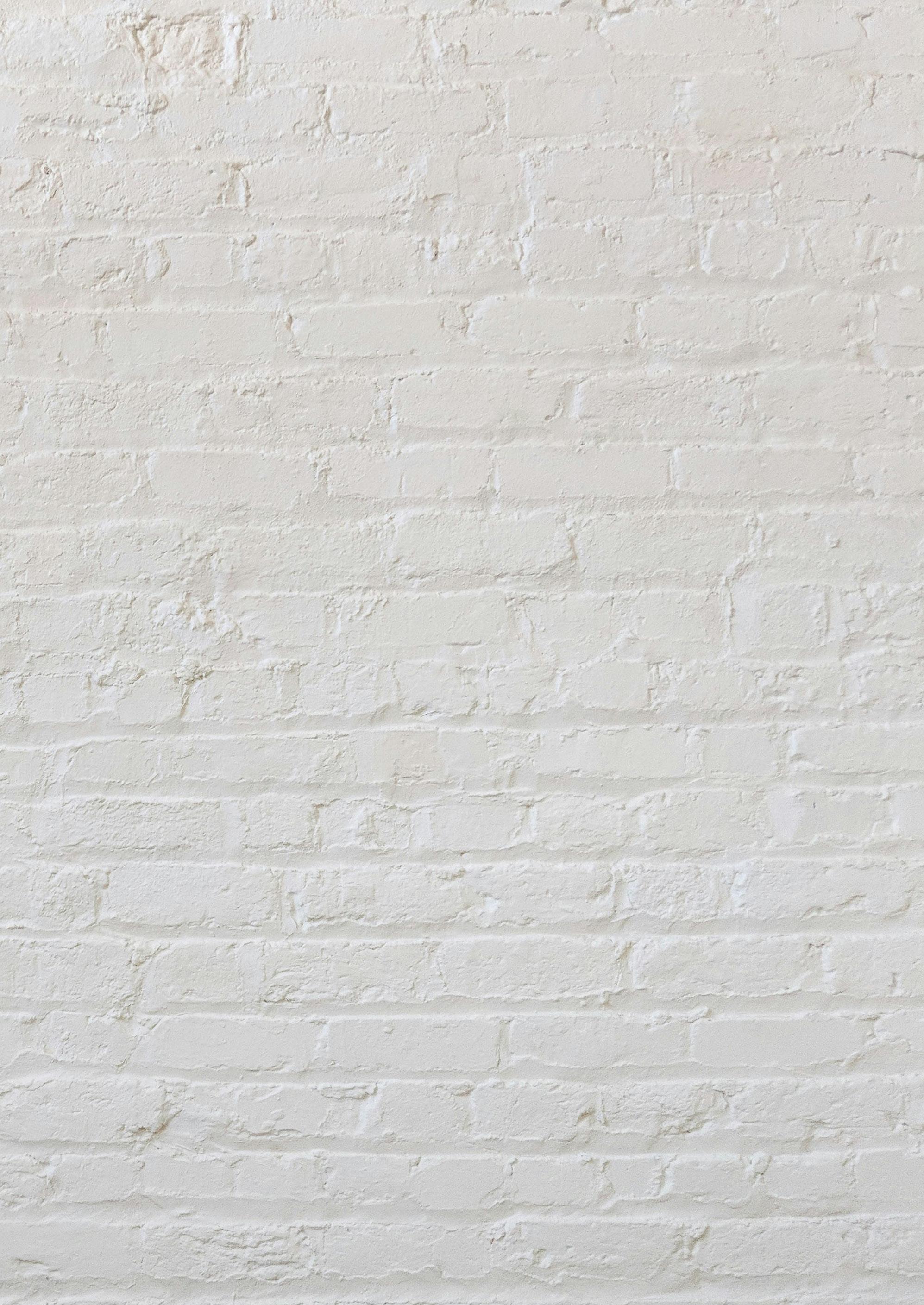
Typically strokes occur in adults, but they can also occur children and in babies, although this is rare. A baby can have a stroke in utero (whilst still in the womb), or shortly after birth, these are referred to as pre or perinatal strokes. A stroke is what occurs when a blood vessel which carries oxygen to the brain either bursts or is blocked, which means that parts of the brain might not get the blood and oxygen that it needs, causing the cells in that area to die. The stroke is the resulting brain damage, and it is both this damage, and the extent and location of it, that may affect the child.
Although there are many reasons why a baby can have a stroke it is not always possible to find out why it happened. Likewise there are different types of perinatal stroke which would have different underlying causes, but many of these causes are only partially understood currently.
It is fairly likely that a family will not know that their baby has had a stroke, as this is not something that is routinely tested for after birth. Typically it is only discovered when there are delays or issues with the child’s development which lead to investigations including an MRI scan (brain imaging). For example, the child might have difficulties with their motor movements, and go on to receive a diagnosis of hemiplegia or cerebral palsy. Or they might have seizures and go on to receive an epilepsy diagnosis. They may also have learning difficulties or a communication delay, and some children may have vision problems.
According to the Child Neurology Foundation website ‘most children who experience perinatal stroke have long-term neurological problems. They may require treatment for physical, developmental, and psychosocial complications.’
For more information and support visit the websites below:
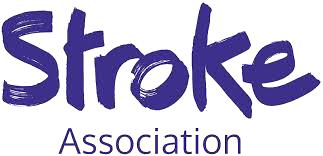
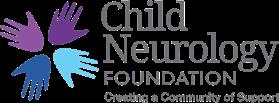 Stroke Association
Stroke Association
conversation with
Jenny Whitman, Executive Director of the Moebius Syndrome Foundation“I would like to change people’s perspectives on what the Moebius Syndrome Foundation is. We support everyone through all aspects of their lives, we want people to feel like they belong.”
Knowing what to focus on when managing a small but very busy non-profit is a complex theme that Jenny
Foundation (MSF), has often had to consider. We were lucky enough to chat with her about her path into the charity sector, the past, present and future research goals of the MSF, and what new directions they will be taking going forward towards a more accepting society.
Jenny grew up in Texas
a sister who has a cognitive and mental disability, so we grew up with a lot of challenges with her. I think because of these experiences I had a natural feeling of wanting to help people. I know it can be a struggle growing
up as a sibling and I saw the impact on my parents having a child who has disabilities.”
Jenny also saw the issues faced by two of her friends growing up; one who had been involved in a car accident, and the other who experienced a surgery that damaged facial nerves, leaving them with scarring and partial facial paralysis.“I saw what it did to their selfesteem and how it affected so many aspects of their lives.” This gave her an insight into how the lives of many people with facial differences are affected, which was highlighted further when Jenny herself experienced two mild strokes in her early 30’s.
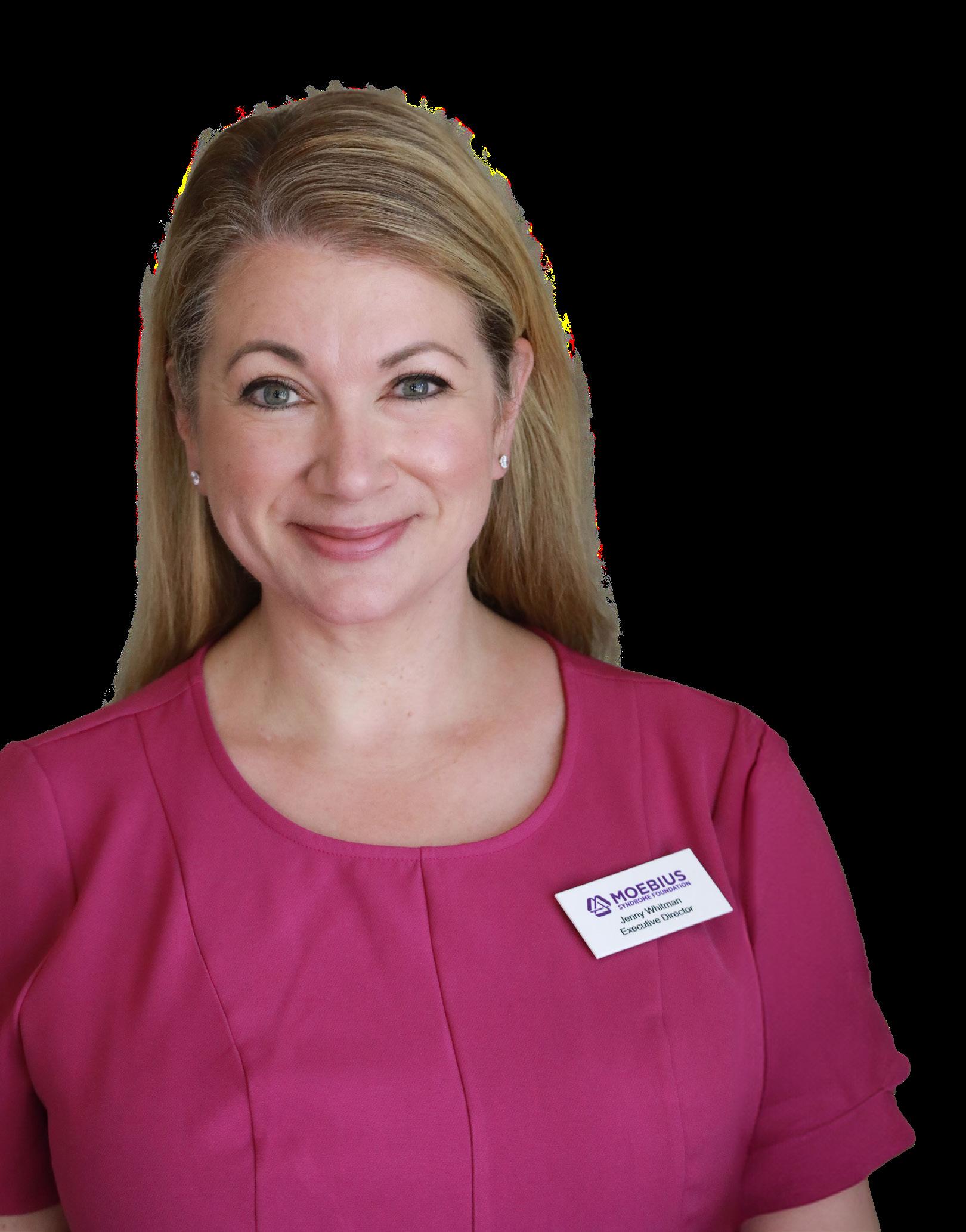
“The right side of my face was very slightly paralysed. I know how that made me feel and I realised how insecure it made me feel.
Working with the MSF helped to change my perspective, and it made me have more appreciation for myself and my slight facial differences, as well as the differences of other people.”
All photographs courtesy of the Moebius Syndrome Foundation. Special credit goes to Rick Guidotti with Positive Exposure.
Jenny was recruited over six years ago for her international event planning experience and skills, but she recalls the first national conference she was a part of for the Moebius community with great fondness. “I’d planned conferences and events for people all over the world, but it was the first time I’d ever been to a conference where people were so overjoyed to see each other. There was a lot of hugging and tears. Many people had never met another person with Moebius before. I was just overwhelmed with the amount of support and positive energy. I realised that what I was doing was more than a job. It was potentially life-changing to a lot of people. I knew I wanted to be a part of this movement.”
MSF conferences and meet-up events are important for creating a safe space where those with shared experiences can meet and support each other in a non-judgemental and understanding environment. The foundation is starting to branch out in their offerings
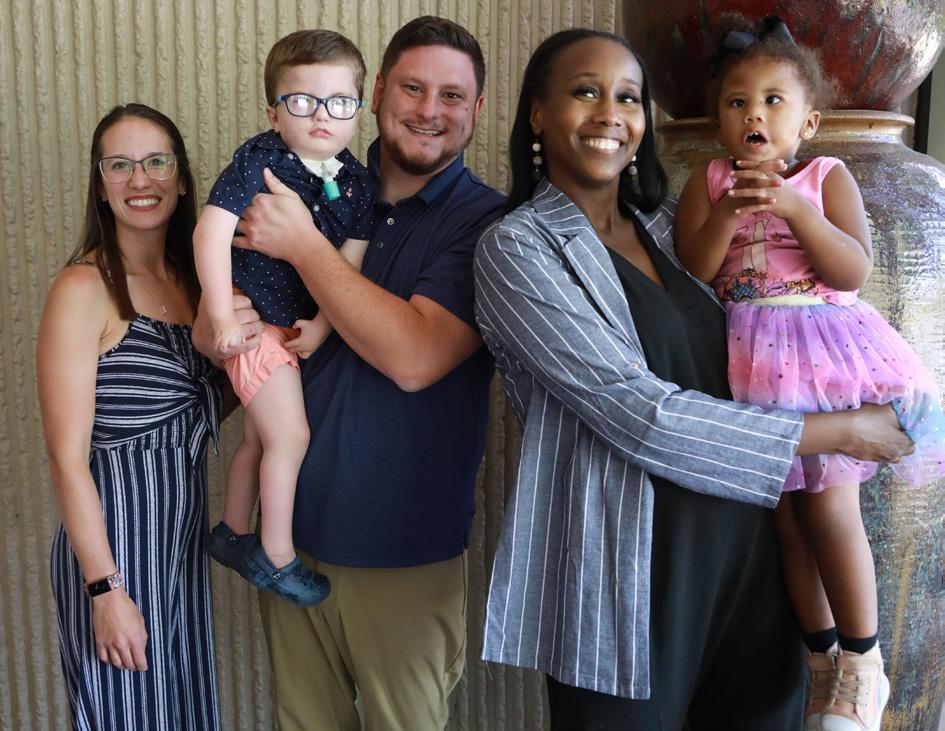
of opportunities for those with Moebius to connect with each other. One of those is the opportunity for adults with Moebius to join one another on a cruise.
“This is our first time trying it. We expect a small group of about 20 adults. I am interested to see how it goes! It is wonderful that they’ll get to be together, to meet up for dinners, excursions and social times but, they’re also going to be in a public environment with other people around. I think it takes a lot of confidence, and a little bit of courage, to put yourself out there. Some are born with this inner confidence, or they’ve learned how to be confident with their difference, but it’s not easy for everyone.”
Jenny hopes the excursion might inspire some positive interactions with the public and for those travelling. “Hopefully it’s an opportunity to spread awareness for people who feel comfortable doing so. Seeing a group of people who look a little different, maybe it’ll start positive conversations.”
The MSF has also been working on research into the condition. “In the early days of the
organisation, in addition to connecting families and individuals, the primary focus was on research because it was founded by parents who wanted answers about the condition. Much of the research was genetic based trying to understand the causes. We’ve invested around $1.4 million in research studies, a lot of it genetic-focused, and we still don’t have all the answers. We have hosted nine research sympsiums and invited medical professionals and scientists from around the world and have been collaborative in sharing our research updates, and vice versa. We’re all on the hunt for answers and trying to figure things out that will benefit people living with Moebius and future generations.”

In 2020, the MSF partnered with Dr. Gregory Borschel to begin research into surgical treatment to enhance dynamic eyelid closure, which in more simplified terms, is referred to as blinking surgery. Most people with Moebius syndrome do not have the ability to blink, which can lead to eye problems later in life.
“When Dr. Borschel approached us with the concept of creating a surgery technique that could help people have the ability to blink, we were very excited about the potential benefits this could provide our community members. It might help someone with Moebius have a more natural looking eye appearance that reflects a smile, as well as support better eye health.”
“This is a very personal choice. Having any type of cosmetic surgery is not for everyone, and it’s not something we advocate, but some people in our community may choose to have it and find some benefit. Our focus is on providing opportunities and better treatment options as a choice. It’s not a focus on the cosmetic, but on quality of life. Being able to blink is going to help, hopefully, to preserve eye health later in life. We hope the research we do provides answers that enable us to provide better treatment options worldwide.” The final results of the dynamic eyelid closure study should be completed by the end of 2024.
Jenny can see the widening in research aims, which now includes studies that can help achieve better care and outcomes for individuals and families living with Moebius syndrome. “For over a decade, we did a comprehensive research study into genetic studies, and although this continues to be important to many, it is also clear that there are other research endeavours that also need to be a priority. Once a child is born with Moebius, parents want to know how to best support their child. The MSF has invested in mental health, smile and now blinking surgeries, oral-motor therapy, and other relevant studies. “We welcome ideas from our Scientific Advisory Board, as well as our community members, on ideas that will help promote greater health and well-being options, in addition to understanding the causes of Moebius syndrome and similar conditions.” The MSF is currently offering seed money grants to new investigators who are interested in advancing the understanding of Moebius syndrome.
The MSF is currently working in partnership with the National Organization of Rare Disorders (NORD) to create a new registry platform. “We can develop our own systems using their platform and once that’s launched, hopefully in early 2025, people with Moebius and healthcare providers from around the world will be able to contribute. That will help us have more data
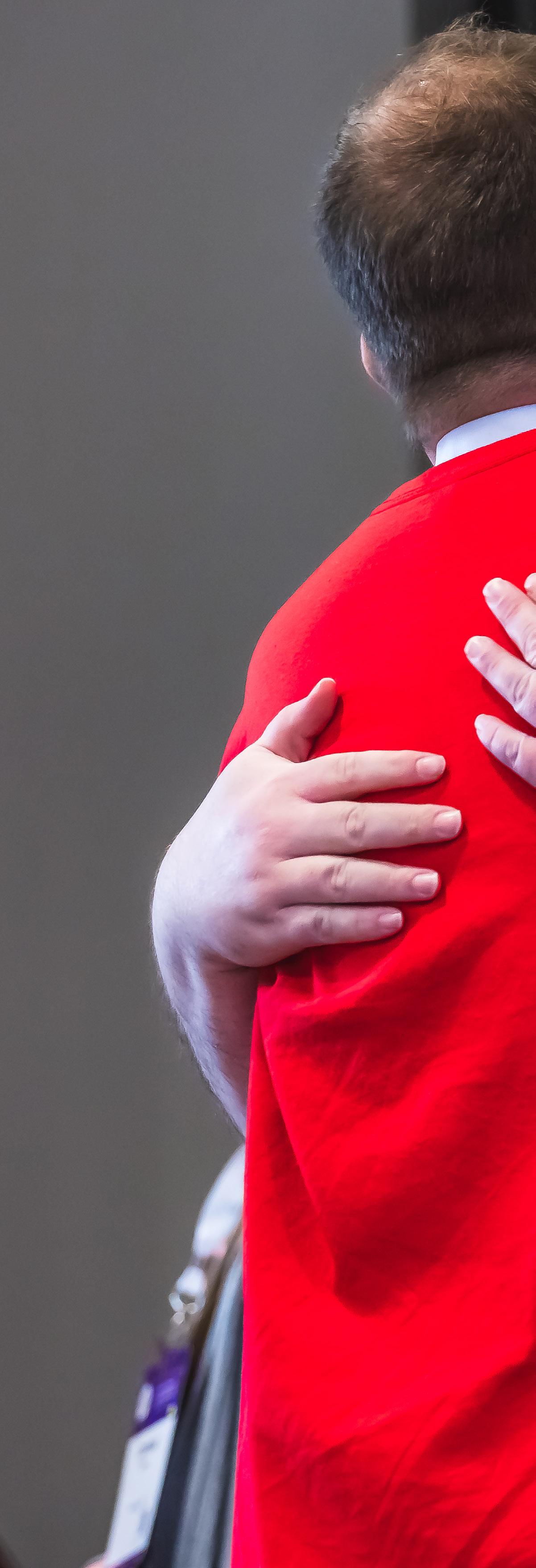
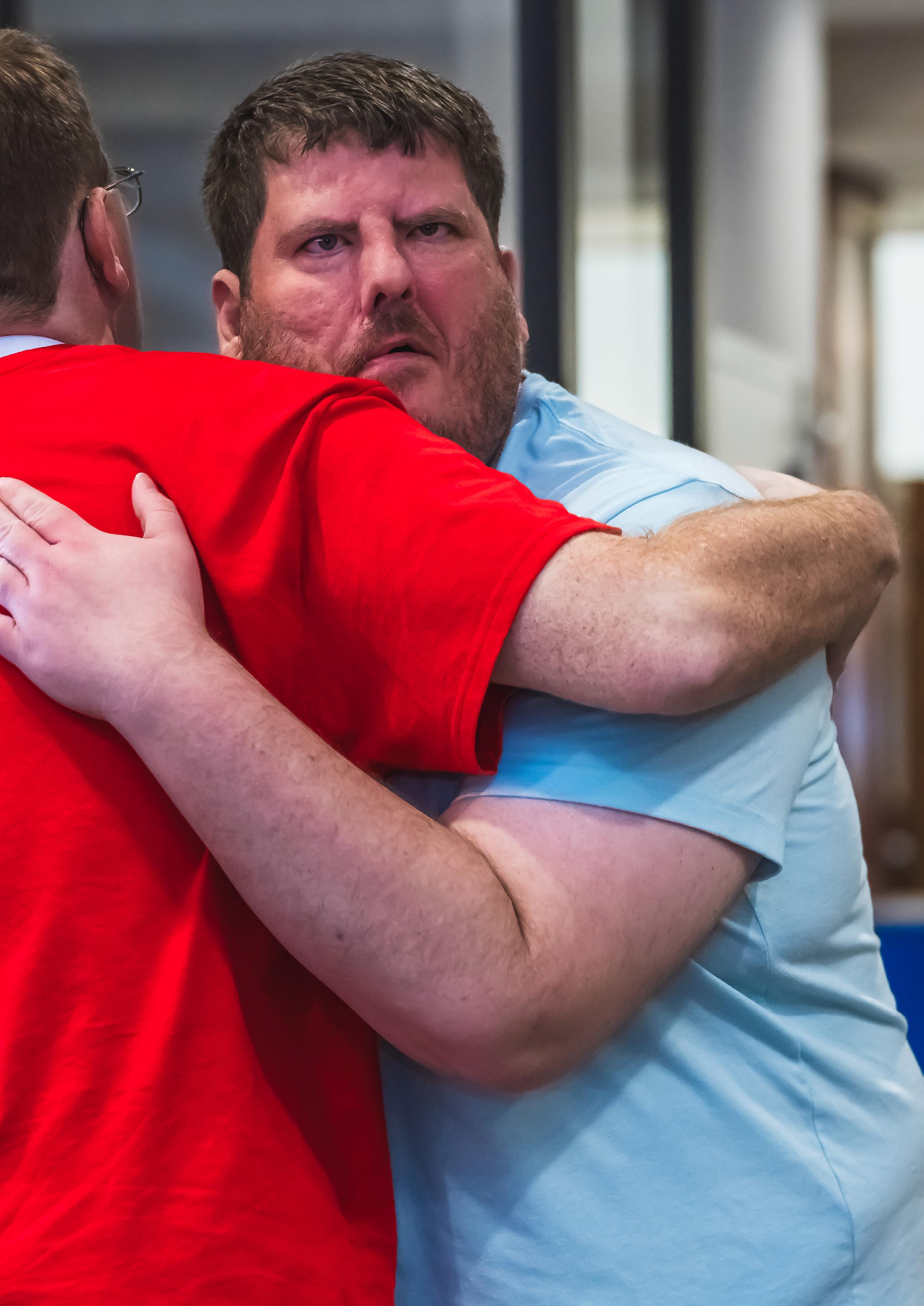
which will help us find more solutions and answers. We often get questions, like ‘how many people in the world have Moebius’ and we don’t know. I think there are a lot of people out there who we don’t know about who are living with the condition.”
The database will ultimately help collate data worldwide to build a bigger picture.
“Ultimately, we are a US-based nonprofit, but I would love to be much more of a global presence. I think the most important part of our mission is to improve the wellbeing of our community, support people and help create those crucial social connections and opportunities. I would like to change people’s perspectives on what the MSF is. In the past, I’ve heard that the MSF’s main focus is on research, or on supporting children and families. Those are only part of what we do. We want to help support everyone in our community through all aspects of their lives; we want people to feel like they belong. We are branching out with free virtual events for parents/adults with Moebius, LGBTQI+ groups etc., for example. One of our slogans is that ‘We are the home for the Moebius community’, some people are told they have Moebius when they have some other rare facial paralysis condition, and we want those people to realise it
Moebius syndrome is an extremely rare neurological disorder which is present at birth. The exact incidence is unknown. It is characterised by weakening or paralysis of the muscles in the face which control expression and lateral eye movements. People born with Moebius syndrome are unable to smile or frown, blink their eyes, or suck, although sometimes only one side is affected. Predominantly the sixth and seventh cranial nerves are involved but other nerves may also be affected.
For more information visit: Moebius Syndrome Foundation
doesn’t matter if you have Moebius or not if you need a place to connect, a community, everyone is welcome.”
Jenny concludes by elaborating on what matters most to much of the community the MSF supports. “Spreading awareness is important for those with Moebius and those with facial differences. I wish there were requirements in college for human resources professionals, and in mental health, healthcare and medical focused degrees for students to develop a better understanding of people born with rare conditions and with facial differences. It’s heartbreaking to hear stories where people have been dismissed and judged for the way they look. I feel like as a society we’ve come a long way; the disability movement has been in the news in the past few years and it’s our time to raise awareness and create more understanding, compassion and respect for the facial differences community. People with Moebius, with facial differences, they’re just people. They are just as smart – they can go on to be anything. We have scientists, doctors, PhD students in our community. People live full lives so don’t feel sorry for someone who looks different because that doesn’t mean they’re not having a fantastic life. Don’t be sorry for people who have differences, be respectful.”



The ‘Rarely Reframed’ exhibition takes inspiration from the renowned works of the Golden Age Dutch Masters, such as Vermeer and Rembrandt, to portray visible differences. The aim is to subtly yet assertively challenge our perceptions of perfection and how these can shape our biases towards the perceived perfection of the contemporary face.
Art has always been a potent conduit for expressing the human experience. Yet it has historically neglected those with visible differences, who only rarely saw themselves positively represented in mainstream cultural portrayals. Ceridwen Hughes, photographer and art director, along with the team at Same but Different, is striving to rectify this imbalance through creating the ‘Rarely Reframed’ exhibition. Through the lens of photography, they are advocating for greater inclusivity and representation in all areas. Every individual’s narrative underscores the vital role of visibility and diversity in art and beyond.
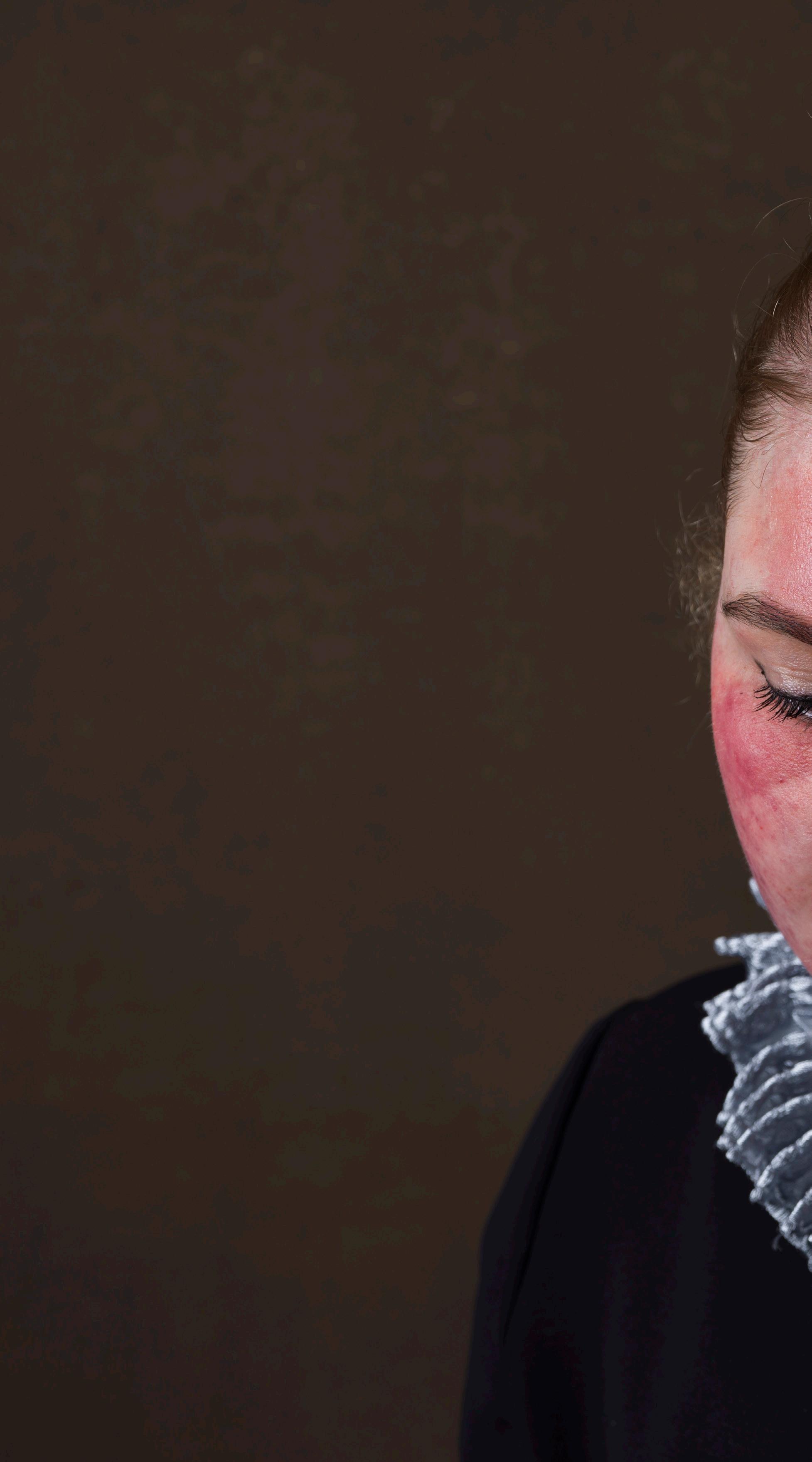
Amba is one participant in the exhibition; her condition, Sturge Weber Syndrome, means she is covered by a birthmark that stretches from her face to her toes. Now aged 22, she has grown up with being singled out as different. She has turned her skin into a living canvas by pursuing a university degree in Special Effects makeup. Her makeup transcended its role as a tool for conformity and became an avenue for artistic expression and personal empowerment.
Amba defies conventional beauty standards and underscores the need to represent all kinds of bodies and faces in art. Her work not only fosters acceptance but also celebrates the distinctiveness of individual narratives, encouraging the art community to expand its perception of beauty. Recently Amba has been chosen to take part in Collection Cosmetic’s real life beauty campaign.
Amba shared, “I used to use camouflage from the age of seven as play makeup and on special occasions. Then at the age of twelve I began wearing my camouflage
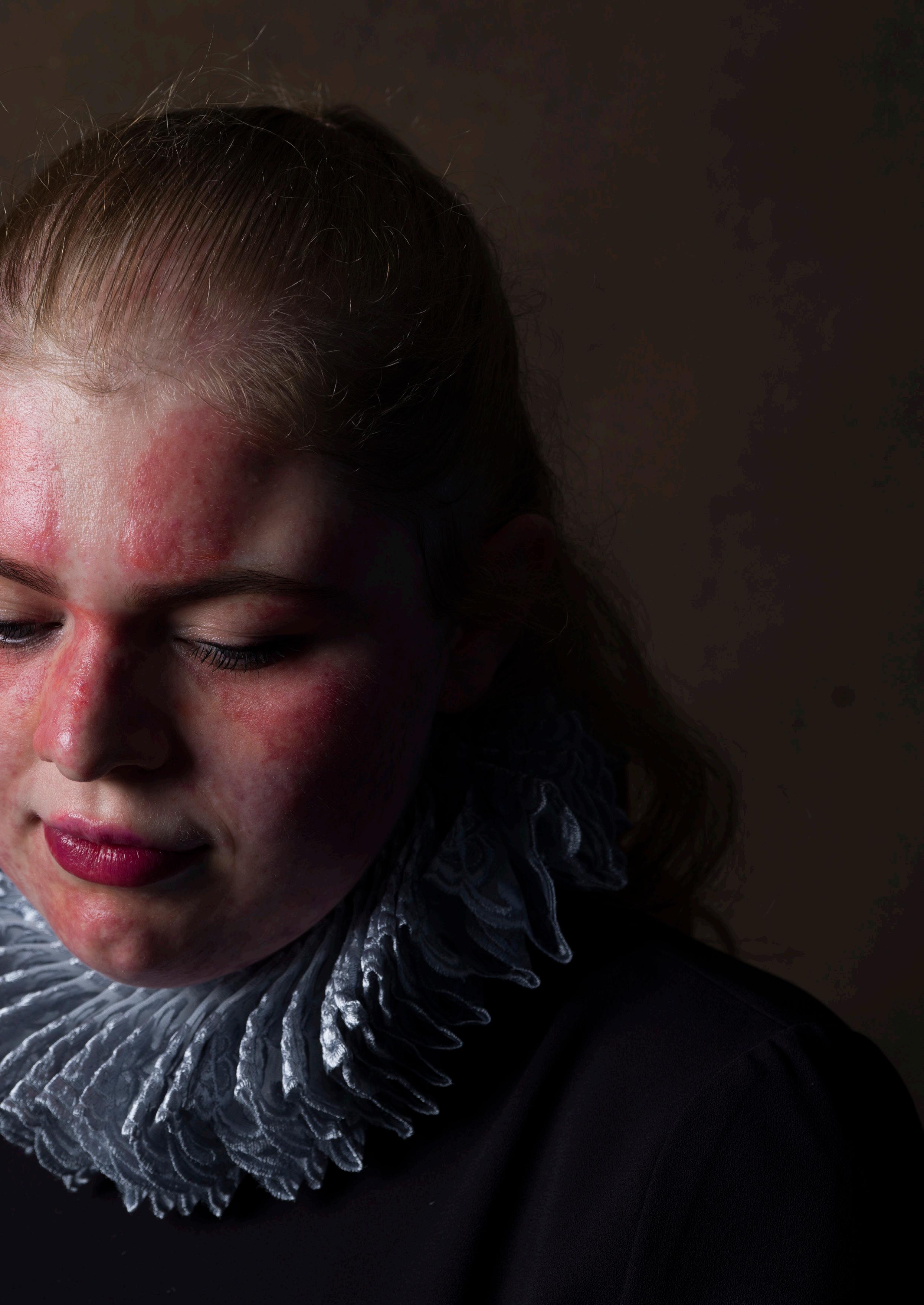
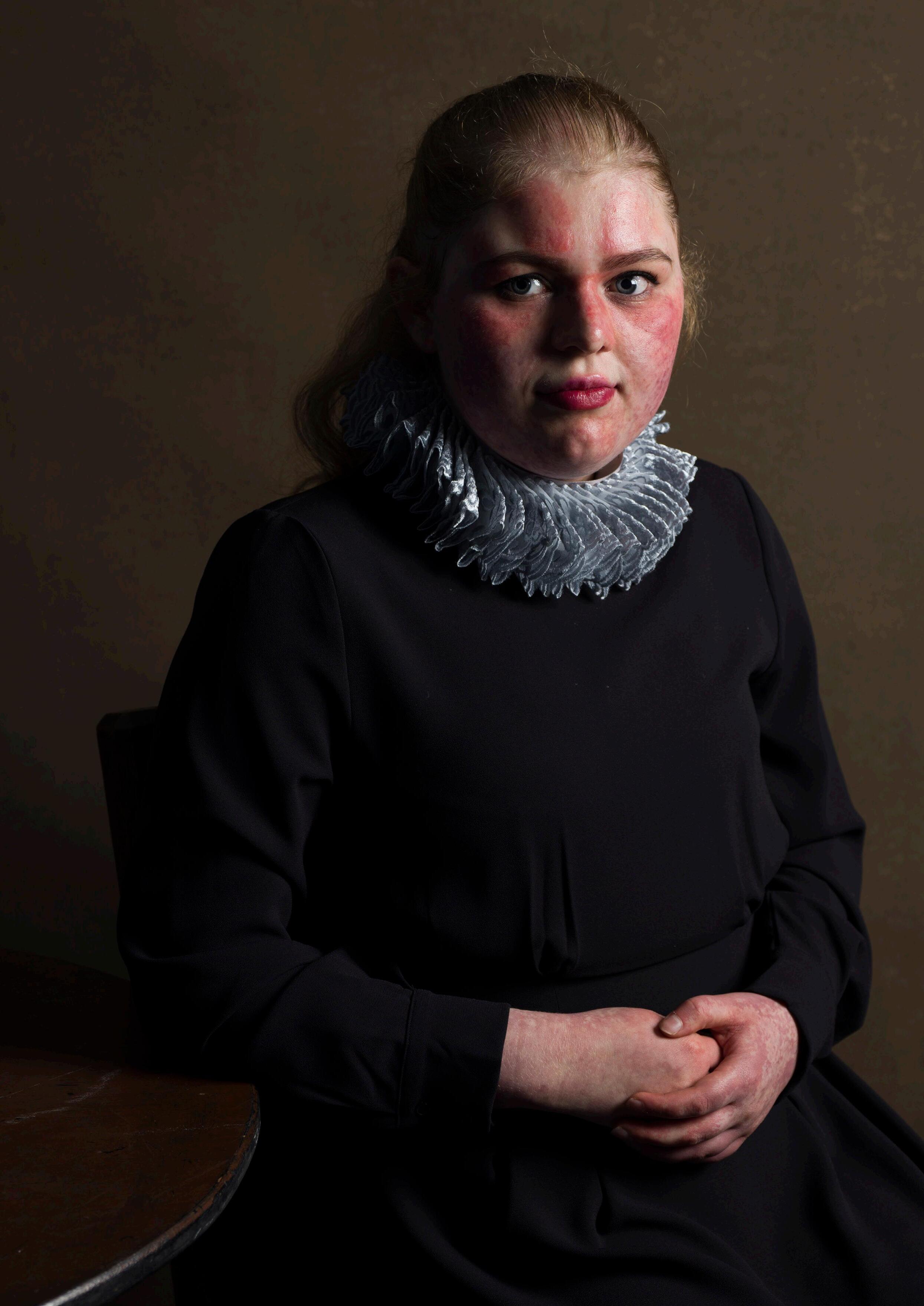
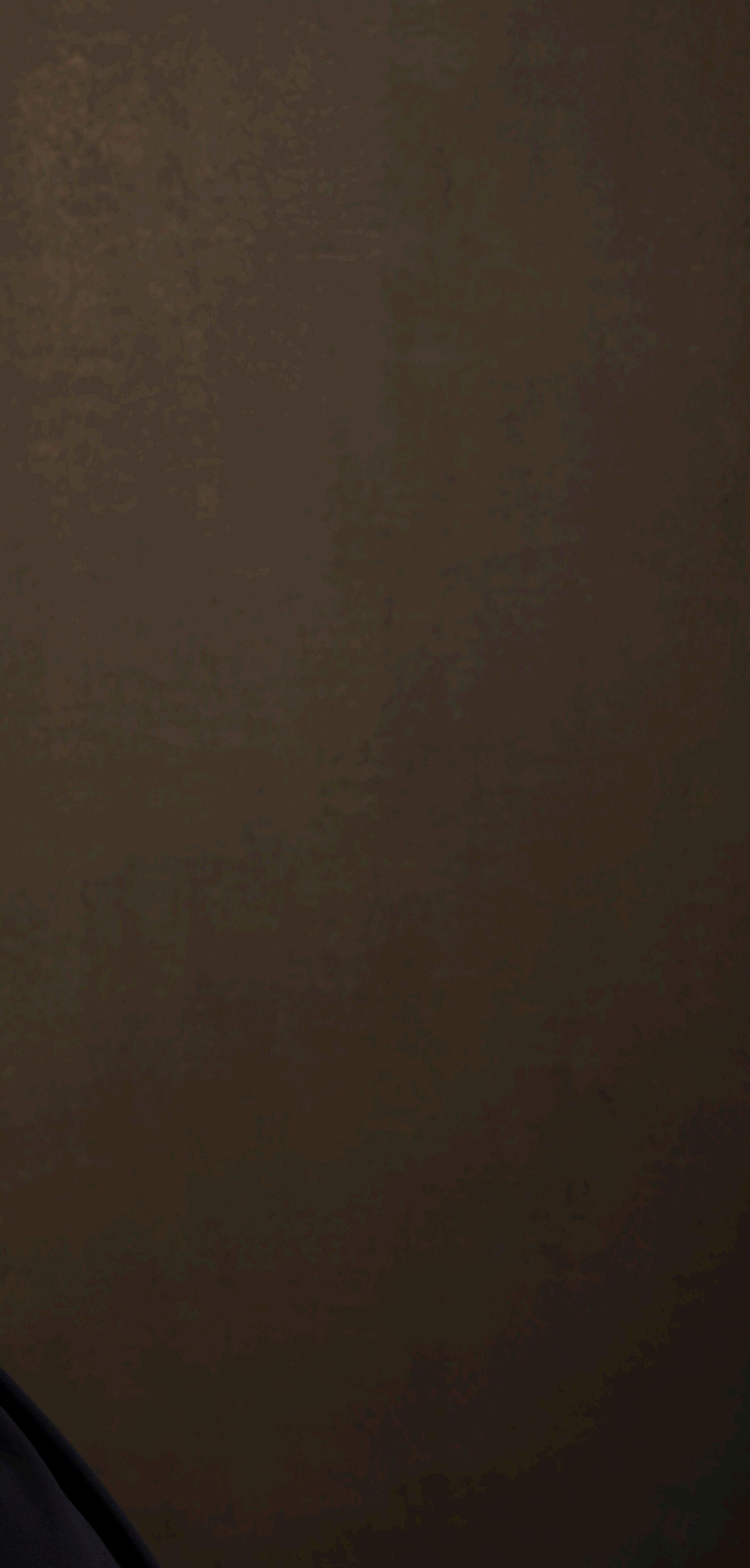
makeup full time, it’s quite a long time. I love the fact that makeup can change and transform a person into something completely different. I think during my teenage years, when I was covering the birthmark on my face I believed I could transform into being confident and beautiful and I could thrive each day. Whereas if I didn’t wear makeup, I’d be the complete opposite, that’s what I thought at that time. Looking back now I just realised that makeup is just a mask. I’m still the same person underneath with makeup or without makeup. I think it’s more my determination to push through with whatever challenge there is to succeed.”
Awareness is the key and something Amba wants more of. “I started sharing my story because I wanted just one young person not to go through what I had to go through at that age. I know I’ve already achieved that. It’s just so great to see the impact my story has had on others across the world. I’m pleased that I’m doing this for them, but also for my younger self, because I didn’t have a role model to look up to during difficult times or know how to deal with bullying, I’ve had to learn on my feet. Whereas now there’s so much out there, so many resources and different charities, I think it’s great. I think it’s a turning point for this generation, and it can only go up.”
This exhibition highlights a wider societal requirement: the inclusion of diverse appearances in artistic and cultural narratives. As we advocate for a more inclusive world, it’s essential to remember that every brushstroke, every image, and every story contributes to a more holistic understanding of the human experience. By embracing and representing diversity, the arts can pioneer a society that values every individual, not despite their differences but because of them.
About Sturge-Weber Syndrome (SWS)
Sturge-Weber Syndrome (SWS) is a rare neurological disorder that impacts the skin and nervous system. It is often characterised by a facial birthmark known as a port-wine stain, which is caused by enlarged blood vessels beneath the skin. Additional symptoms of Sturge-Weber Syndrome include a port-wine stain, typically on the face, seizures that can be challenging to manage, headaches, paralysis or muscle weakness on one side of the body, developmental and learning disabilities, glaucoma, and hypothyroidism. Find out more here:
Visit Sturge Weber UK
About Amba Amba is an Ambassador for the Vascular Birthmarks Foundation charity, and a Social Media Speaker for Changing Faces UK.
Visit the Vascular Birthmarks Foundation
Visit Changing Faces UK
About Rarely Reframed
Rarely Reframed will launch very soon.
View the exhibition online

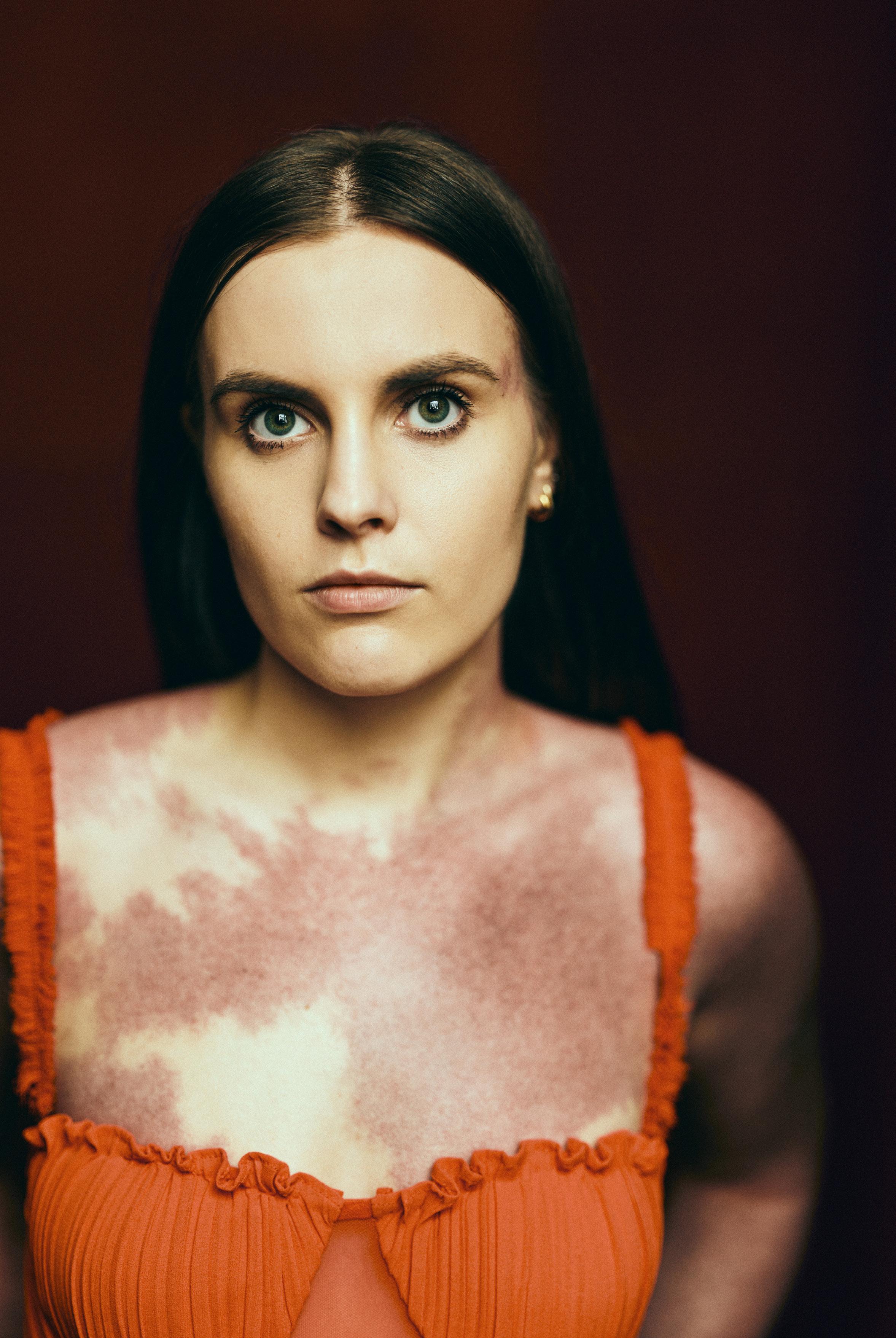

I have always been drawn to the concept of rarity because of the particular value in its uniqueness. That there is no one thing that is the same, there is no one person out there that is you. Ever since I was a little girl, my parents said that I was kissed by an angel, and what a hell of a kiss it was, taking up my hands, arms, head, one leg, chest and back. My parent’s saying and the fact my mum used to call me her ladybird made me look at my birthmark in a positive light, implying a talisman of luck and specialness in my skin difference. That is what made me love my birthmarks and it was not something I wanted to get rid of.
When I was young, I was always aware of my birthmarks and I still very much am, though not because I was self-conscious about them. People often assume that I was bullied due to my birthmarks and are often surprised when I reveal that I wasn’t. These assumptions are what aggravates me about skin ‘abnormalities’, and yes, I called them ‘abnormalities’. Ultimately, skin ‘abnormalities’ are ordinary. This is not to take away the concept of rarity or uniqueness, but mutations in the body are natural, so, it doesn’t take confidence to walk out of your house with a skin difference. However, these differences are often used in a negative sense. Television often portrays people with ‘differences’ in the ‘evil trope’ or in ‘good scars and evil scars’. Abnormalities are rare and that should be viewed as unique and valuable. This is true of people who are born with skin differences such as birthmarks, vitiligo and many more, and also true of people
who develop skin differences later on in life, whether through medical conditions or unfortunate acid attacks causing scaring of their skin tissue. People’s experiences differ greatly and this makes it all the more rewarding to listen to the voices of those with such experiences.
What about the option of laser surgery? To me, my experience of life with birthmarks is ordinary, as life with birthmarks is all I have ever known. My birthmarks have made me who I am today; I could never get lost in a sea of so-called “normality” because there is no one else exactly like me. It is my unique selling point and I will use it to my advantage. Parents of children born with port wine stain birthmarks are expected to subject their children to laser surgery, which the NHS provides free for children under the age of 16 in the UK. This is traumatic for both parents and child. I was seven when I first had the procedure. I was put under general anaesthetics for surgery. Not only was the build-up intimidating, I would wake up cold and covered in ice-packs, unable to exercise for two weeks for fear of scratching and scarring the healing process. When I was ten years old, I told my parents I no longer wanted to have laser surgery on my birthmarks. Today, I see the procedure as deeply problematic. Why are we teaching children that their differences need to be covered and even erased?
Each individual is entitled to define their purpose and beauty standard regardless of what others think they ought to do, such as removing or hiding their birthmarks.
I spend a lot of time thinking about society’s attitudes to eugenics, differences and the idea of ‘normal’.
As a third-generation Holocaust survivor, I strongly believe it is important to show and celebrate rarity. Members of my family were victims of Nazi eugenic experimentations. During world-war two, Nazi doctors such as Joseph Mengele experimented on a select group of people, ranging from sterilisation, changing skin and eye colours, injecting them with diseases to see how the body reacts and much more, many victims including Roma and Sinti, Jewish people and Slavic women.
In today’s world, in which we supposedly value bodily autonomy, society continues to have a passive perception of what bodies should look like. Unfortunately, this still leads children to be subjected to medical traumas that they don’t need to be subjected to, such as being put on an operating table for aesthetic and unnecessary reasons. Difference and rarity remain stigmatised.
How are birthmarks represented in the society?
The concept of rarity is a great recognition of a person’s differences, yet for an individual who has skin differences, in my opinion, it is their normality in life. It is
important for the skin difference community to see how we feel about
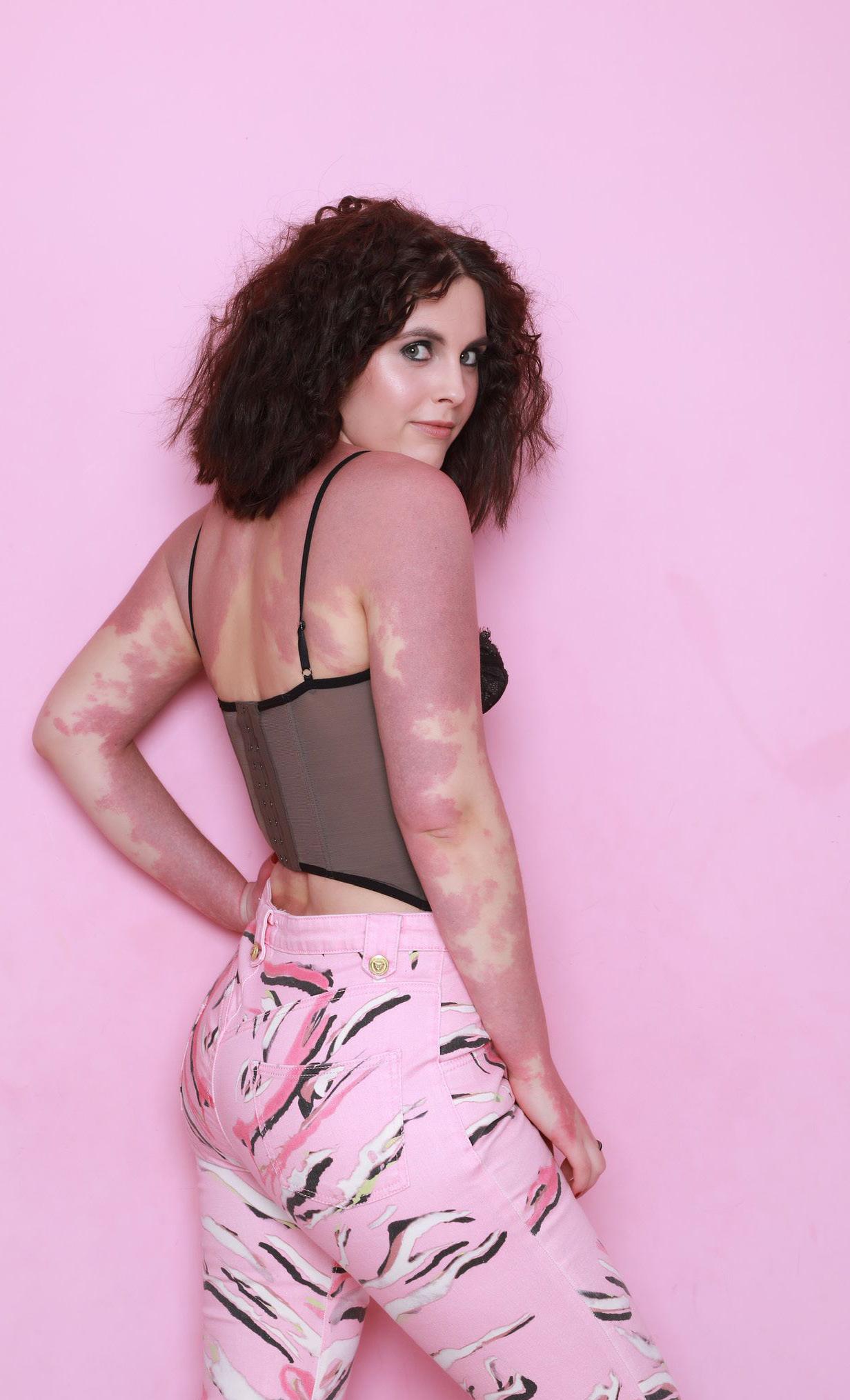 Photograph supplied by Lucja Jastrzebska
Photograph supplied by Lucja Jastrzebska
our differences and how we are represented, but it cannot just stay there. We need to make sure that these representations get through into the wider society. The important conversations we’re having in magazines, such as on the concept of rarity, are significant as they can be taken forward and make a positive difference in mainstream media, not as disfigurements but as normality.
The world is made up of individuals with multifaceted identities that defy categorisation. I myself have multiple areas of interest. I work as a human rights campaigner, on women’s, refugee’s and asylum seeker’s rights in the UK. I also use my Instagram platform to raise awareness about skin differences, reaching out to mainstream media as well as more specialised audiences. I hope that my work as an actor will serve as a visible presence in the arts and media for people with skin differences to see themselves represented.
Let’s claim ownership of our differences in mainstream publications. We should not be confined to a restrictive category but integrated throughout society. Let’s show that differences can be accepted and a ‘normal’ part of everyday life.
A port wine stain (or port-wine stain) is a birthmark in which swollen blood vessels create a reddish-purplish discoloration of the skin. It is also sometimes referred to as a capillary malformation, and in very rare cases can be a sign of Sturge-Weber syndrome or KlippelTrenaunay-Weber syndrome.
A port wine stain is caused by the abnormal development of tiny blood vessels in the skin, and the change in the blood vessels is caused by a genetic mutation, typically occurring quite early on in the pregnancy whilst the baby is still developing in the womb.
Over times the port wine stains can change, in the early stages they are usually flat and pink, but over the years the stain grows with the child and the colour can change to a dark red or purple. Although they occur most often on the face they can appear anywhere on the body.
For more information, including a great fact sheet, visit the Vascular Birthmarks Foundation
You can find Lucja’s website
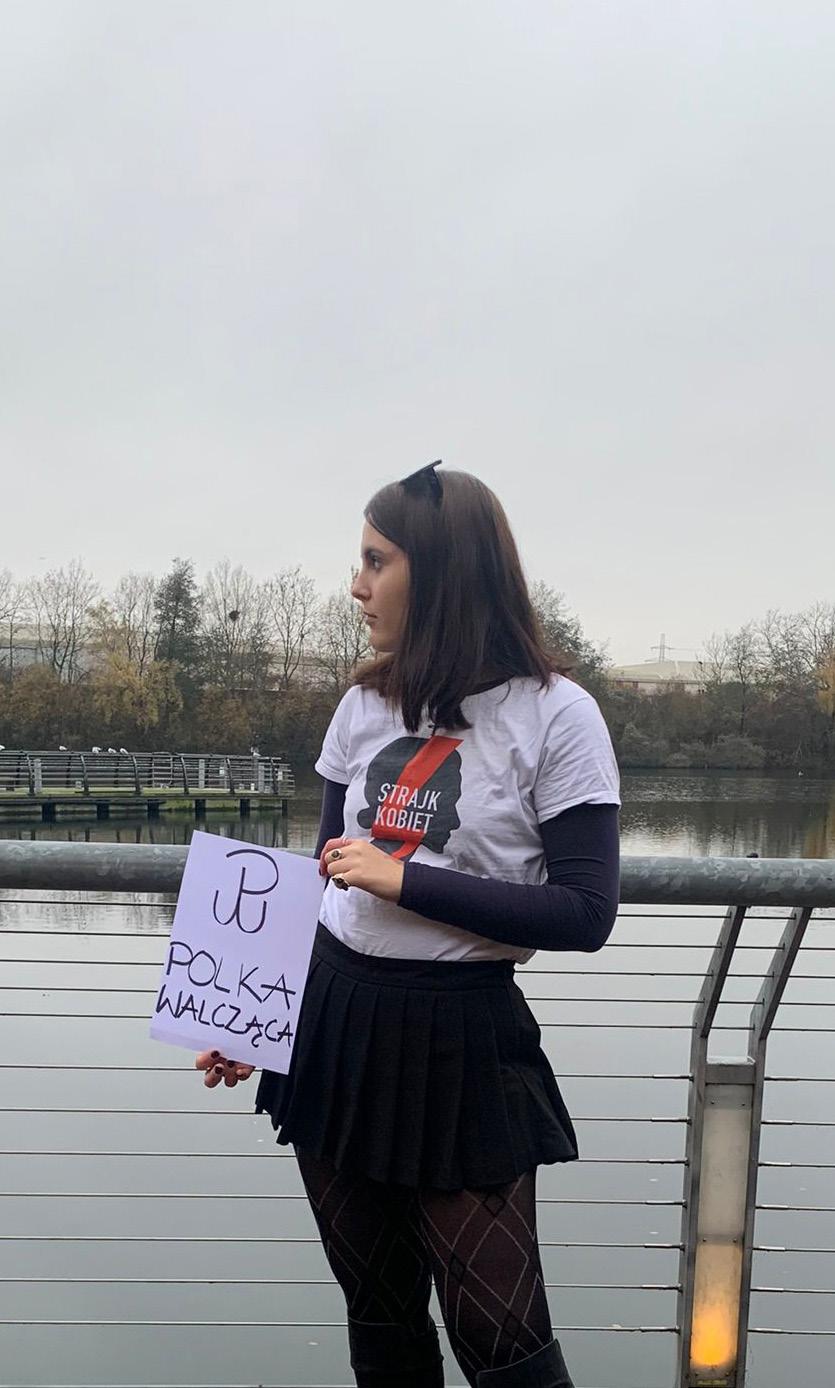

“I wanted the barriers people with disabilities face when it comes to finding a way to move their body to be nonexistent. Therefore, I created AMG Fitness to be at home, free of cost, with three different programs, to have a place where everyone can find something and feel good about working out and getting stronger and healthier.”
Alyssa Gialamas, Founder of AMG Fitness (Adapt, Move & Gain)
The physical and mental health benefits of staying as fit and active as possible have been widely documented, but fitness and exercise can feel inaccessible to many, for many different reasons. If you need to exercise from a seated position it can be especially hard to know where or how to start, but, sometimes of course, it is making a start that is the hardest bit of all. We’ve done some research to help inspire you to get going!
Not everyone wants to go to a gym, to try a new sport, or to commit to a crazy and impressive challenge. For many, if not most of us, finding ways to improve our fitness at home is a
brilliant way to start. Whilst it seems almost strange to look back at the COVID pandemic as offering any positives, one of the things it did do was to show us all that it is absolutely possible to work out using simple, everyday items at home. Sometimes it is finding motivation that is hard, and here too we learnt that the key can often be found online, perhaps by joining a supportive online community, signing up for a bespoke training programme or being coached live via Zoom.
From the best apps and online resources to get you started, through to online personal trainers, our adaptive fitness research has shown us that no matter where you are in both your fitness and life, exercise truly can be for everyone if you make the right adaptations.
Apps, online platforms & personal trainers:
There are some great online resources for you to access, but it can be overwhelming knowing where to start, so we’ve collated some of our favourite ones. Some brilliant online personal trainers in the industry offer a huge range of packages, from bespoke 1:1 training through to online community events. It was hard to choose and verify them, so we’ve chosen some from our list of online resources that we think can best inspire, understand, or meet and support your individual personal training needs.
Adapt To Perform was set up by Ben Clark, also known as Coach Ben or ‘The Wheelchair Fitness Guy.’
Ben has a brilliant YouTube channel, with over 300 completely free video workout videos, as well as advice on how to optimise and adapt your training no matter your ability. Visit it here:
Ben is truly a world leading expert on adapted fitness. To see more about his membership options visit his website, which also includes all the links you’ll need to access his highly adaptable fitness program, designed so that most people can benefit from the workouts. As the website explains, ‘it doesn’t matter if you’re new to exercise or an experienced athlete, there will be something suitable for your needs.’

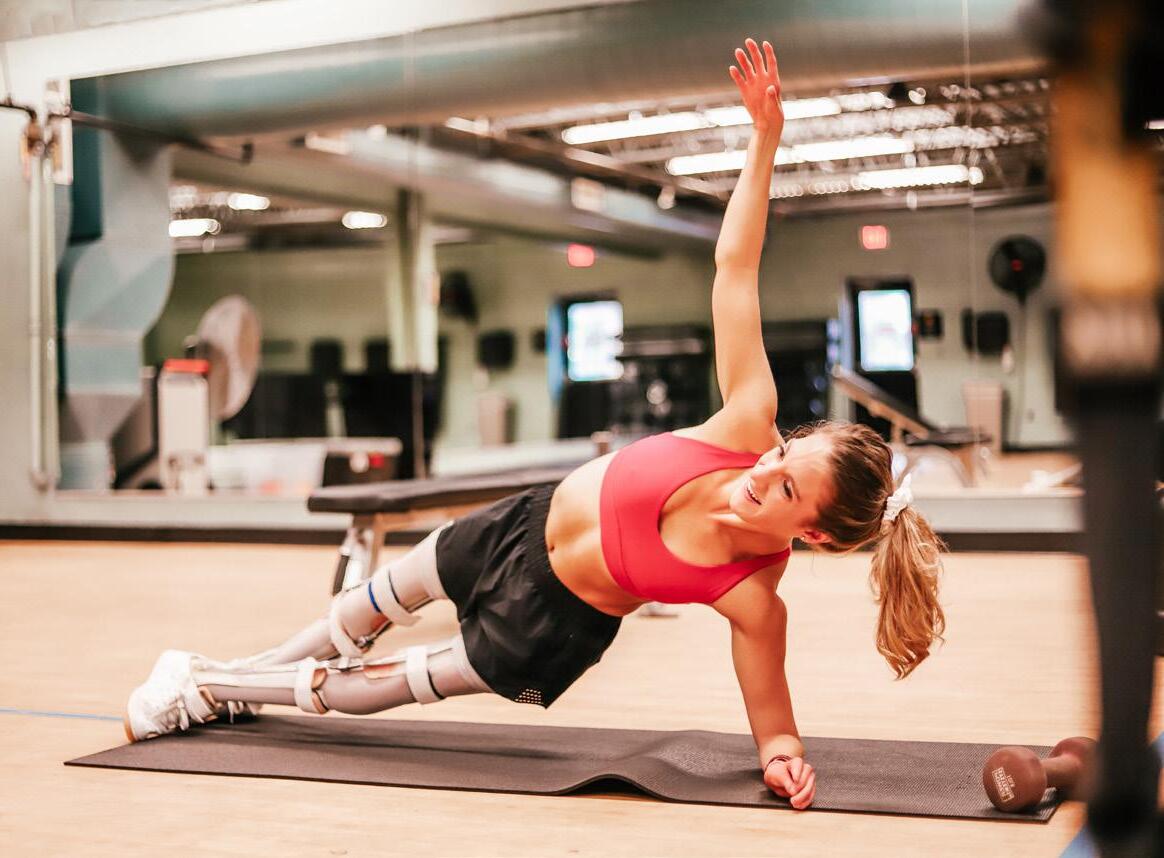
Adapt, Move & Gain (AMG) Fitness is a US based non-profit led by Alyssa Gialamas, a Paralympian who competed in both the London and Rio Paralympic Games. Her brilliant website includes free workouts under each program designed for different abilities with instructional videos. Alyssa’s workouts are not just a product of her passion but also of rigorous scientific research. She designs each workout herself, ensuring they are not only effective but also safe for individuals with disabilities.
Alyssa also offers online personal training in set weeks, you can find out more about all of her packages below:
Visit Adapt, Move & Gain (AMG) Fitness’s website

Wheel With Me Adapt Fit is a bespoke app for wheelchair users created by Jesi Stracham & Nikki Walsh. Both Jesi and Nikki were frustrated by the need to try to create workouts for themselves from programmes designed by nondisabled trainers, or worse perhaps, resorting to using programmes designed for the elderly when they were both still young and strong. So, they decided to create a better fitness resource for seated workouts, going on to launch their brilliant and highly rated app which is linked below.
Download the app here
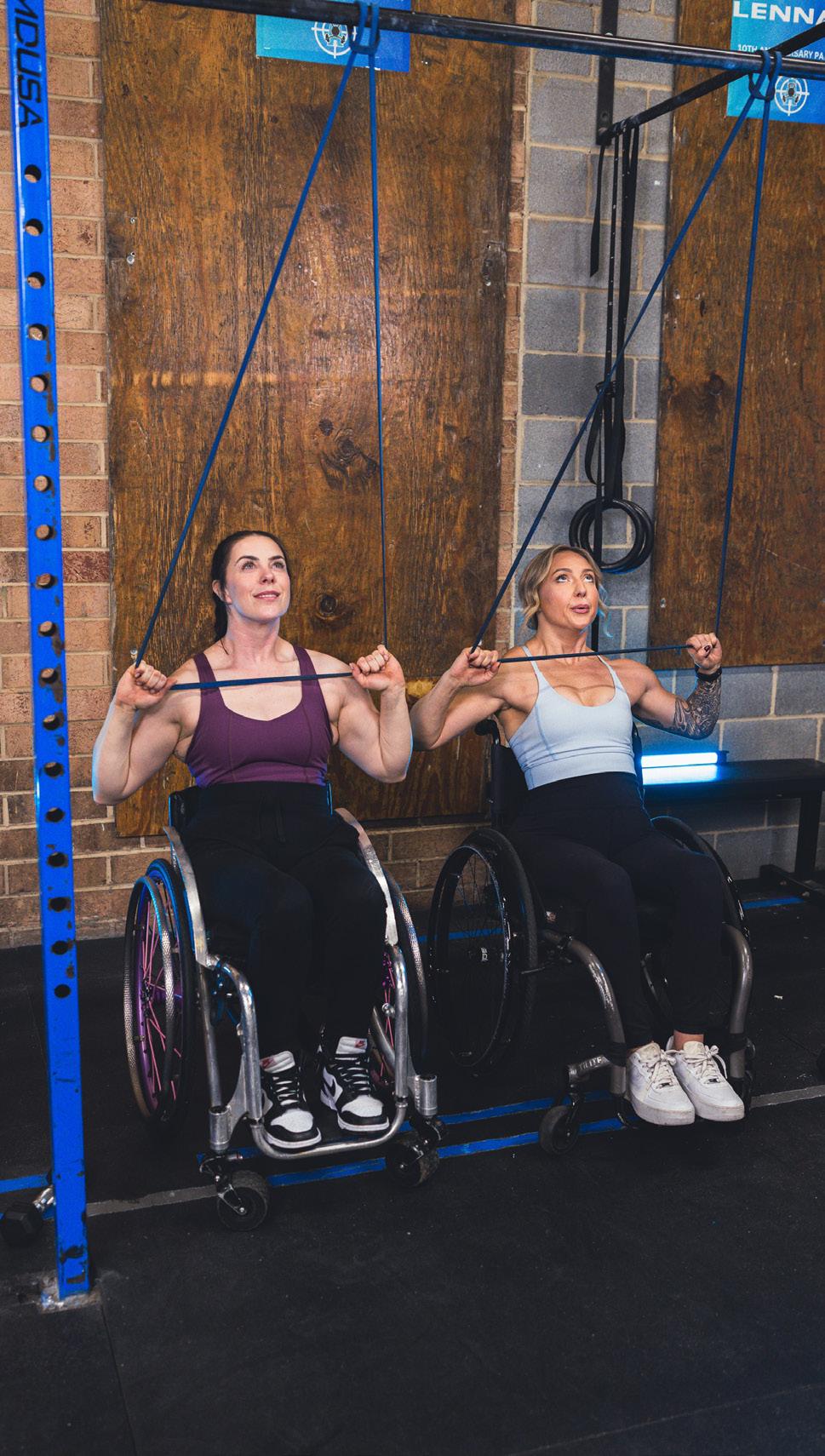

Jesi Stracham has her own brilliant business, called Freedom Longevity and Wellness. A nutrition and mindset coach, with a dedicated focus on the longevity of overall wellness, she offers personal coaching, as she understands that “you can’t outwork a bad diet or mindset when it comes to getting lasting results.”
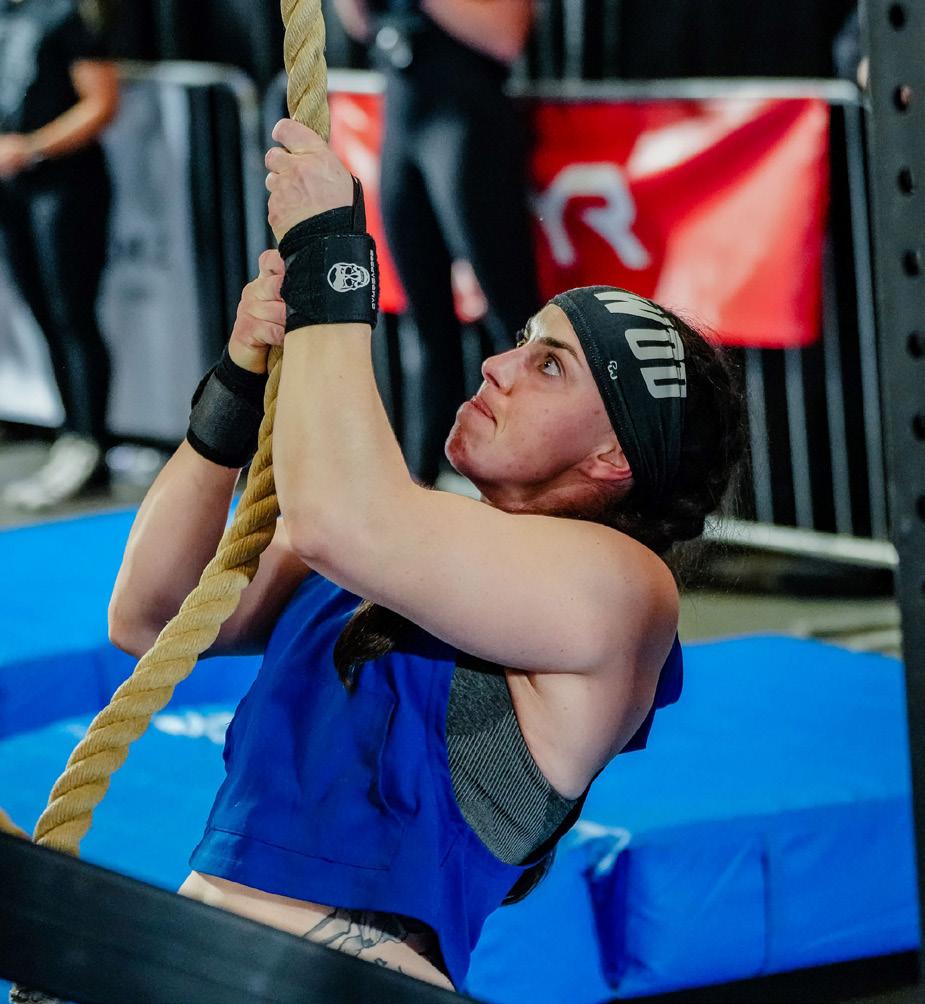

Nikki Walsh also has her own website through which she offers personal training. She explains that before she became paralyzed following an accident, she had always been very active. The road back to fitness and personal training wasn’t always easy, but today she is passionate about ‘helping other wheelchair users learn how to work out in their chairs.’
Nikki delivers training via Zoom, you can see more about her services here:
Visit Nikki Walsh’s website
Visit Jesi Stracham’s website Photograph courtesy of BAW Media
EBee Media is the home of Ella Beaumont, an online fitness influencer and personal trainer in training. Ella combines her passion for fitness with her experience of working in the TV industry to motivate people to keep fit and healthy in engaging, sometimes unexpected and fun ways. During lockdown Ella developed a series of online Wheelchair Workouts which you can watch on her YouTube channel, she also hosts regular online fitness sessions online. You can find out more here:
Visit EBee Media’s website

Adaptive equipment:
As a final note we wanted to briefly touch on equipment. It is worth pointing out that there are not only many everyday household items that you can use to support your exercise program, but also that many ‘off the shelf’ products you can find in any sports shop (or even supermarkets) can also be used. From battered old tins of baked beans through to a set of shiny new dumbbells, if you can lift and hold it, you can use it! Likewise a length of fabric can be used similarly to a resistance band. Often there might not be any need to buy specific adaptive equipment, but there might well be instances where you do need to. For example to enable you to progress to more advanced exercises, or to enable the use of equipment in a modified way, in which case a really great place to start is the Equip Products website:
Visit Equip Products’ website
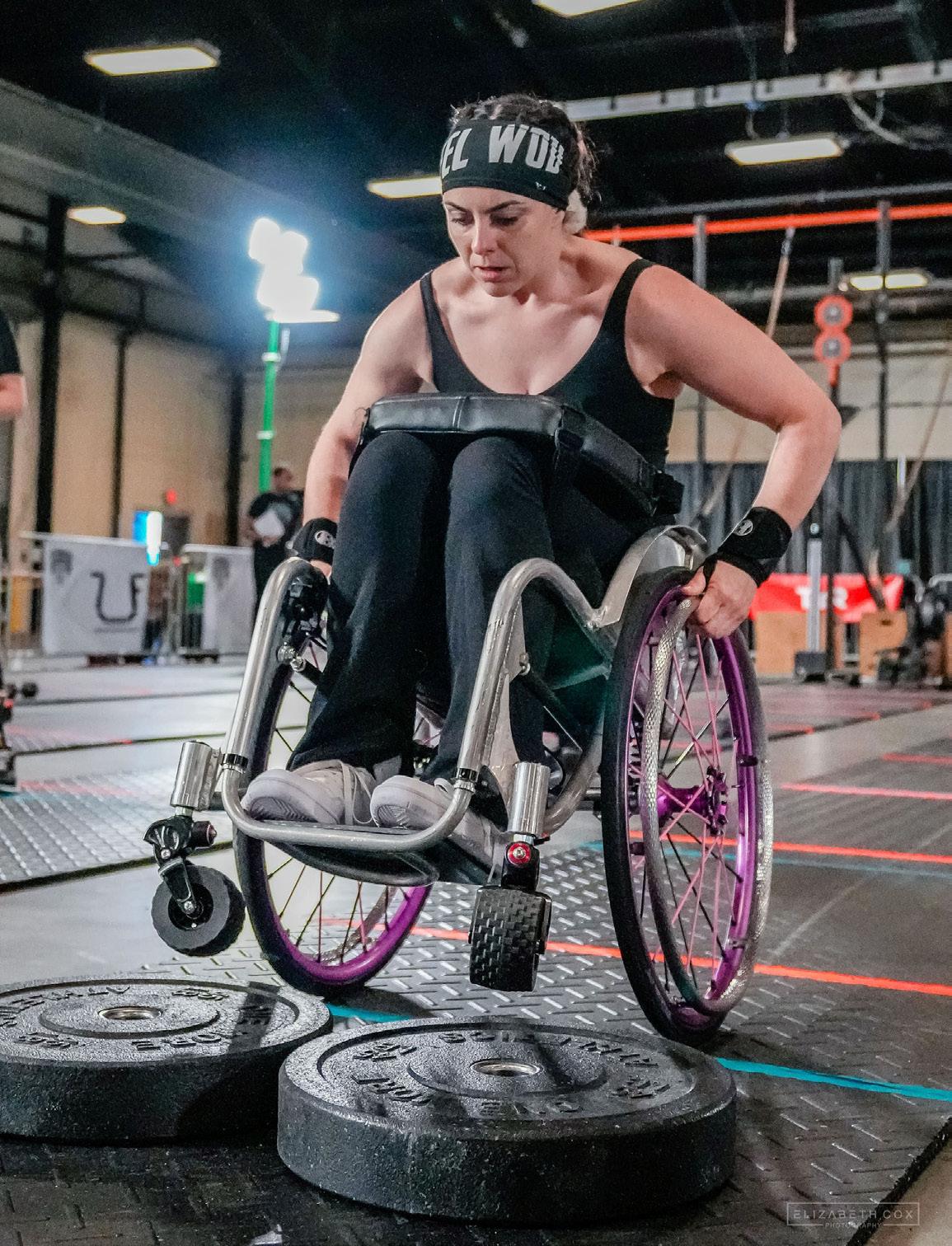

WheelWOD was founded by Kevin Ogar and Chris Stoutenburg, with the aim of creating ‘a space for people with disabilities to show off their fitness’ in the sport of CrossFit, a high-intensity, functional fitness programme. Their website contains a range of information and services, from free videos offering advice on how to adapt benchmark workouts through to paid weekly programmes, alongside individual online programming, and competition programming.
Visit WheelWOD’s website

Grief is difficult for adults, so imagine how much more challenging it is, or can be, for children. When a child loses a loved one, they will often struggle to process their complex emotions without having the life experience and maturity to understand what they are going through. Supporting grieving children requires patience, understanding, and a few key strategies. We have compiled some of the most important ones below:
Open and honest communication and reassurance - Firstly provide a safe space for a child to talk if they want to. Not everyone grieves alike, and it’s the same for children. Let them know that it’s ok to talk about the person who has died. Share memories and stories. Answer their questions honestly, and in an age-appropriate way, avoiding euphemisms about their loved one “going to sleep” or “passing on” as this can cause confusion and sometimes fears that they themselves will go to sleep and not wake up again. Don’t tell a child not to cry, or that they must be THE adult now. Avoid putting them under more stress by adding
a worry that they have to take care of anyone else, or they have to assume responsibility for the wellbeing of their siblings or other family members. Some children will seek to blame themselves for being ‘naughty’ or ‘cheeky’ or other things, trying to find reasons for why they are experiencing this loss. If they are angry sometimes it is important to allow them to be, it is unfair and it is hard, and anger can be a healthy emotion at times. Overall, the reassurance you offer a child now is truly invaluable, make sure they know they are not to blame.
Stay in a routine – Grief can easily isolate children so it’s crucial to keep the child engaged in school and extracurricular activities as much as possible. Routine can bring comfort to a child as it is familiar when life can feel so out of sync. There needs to be open and honest communication channels established with any care or teaching providers about how the young one is doing, ensuring that the support will be wrapped around the child. Arrange play dates with friends and family to avoid any feelings of isolation or loneliness.
Memory activities –
Creating something that a child can turn to such as a memory box is a good way of letting a child express themselves. A memory box
can hold whatever has an attachment between the child and their loved one who has died, such as photographs, perfume, ticket stubs, toys etc, it will likely be a unique and personal thing. Another idea is to create a photo book of images of them together, as it will help and provide a tangible way to remember and express their feelings.
Do something fun –
Set a time to do something fun; trip to the beach or a fun fair for example. Involve the child in what they would like to do, as distractions are healthy and let the child briefly focus on something enjoyable.


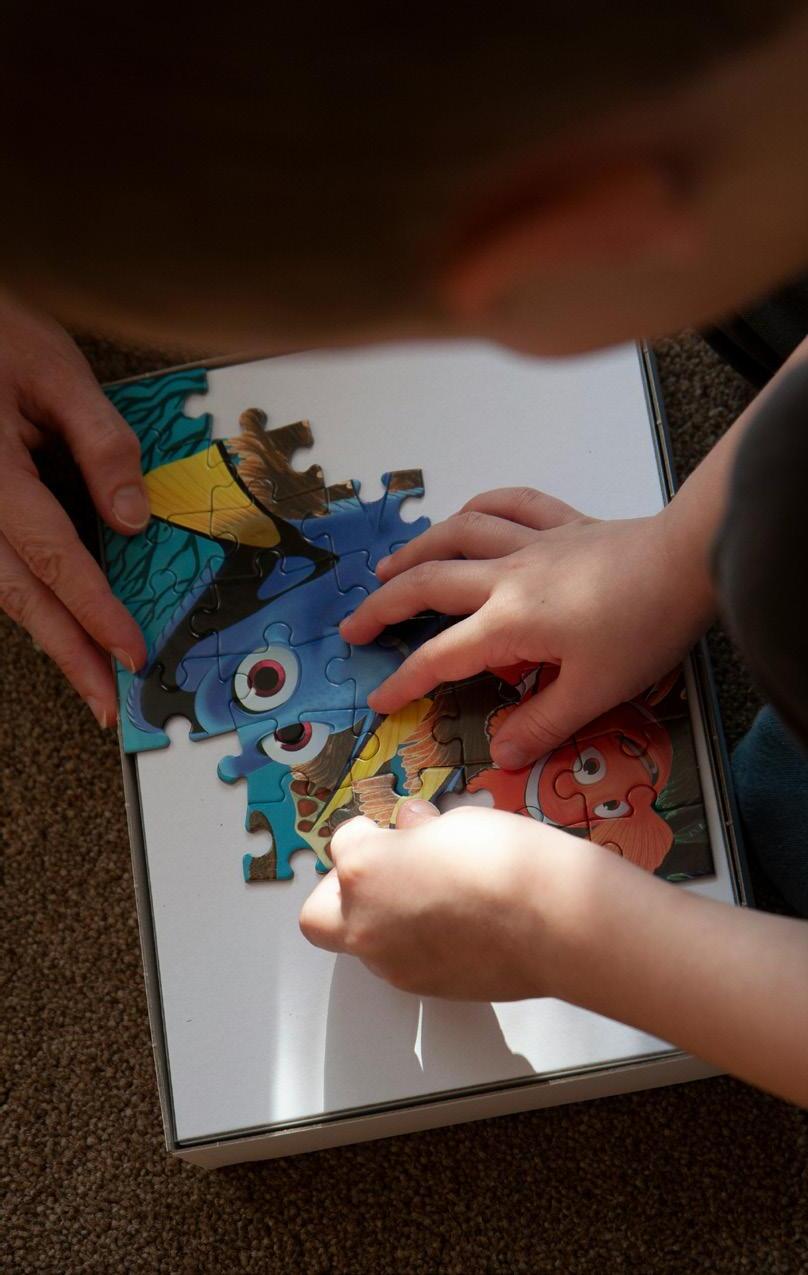
Counselling, help and support – Counselling can be incredibly beneficial for a grieving child, as it provides a safe space for them to discuss their feelings. If they are reluctant to talk maybe look at different types of counselling such as art therapy, play therapy, movement therapy or animal therapy, as these can encourage children to open up by engaging in other activities as they talk. There are also numerous books and resources available to help children understand their grief and feeling. Reach out to support organizations and consult with your GP who can also help with counselling referrals.

Reading - Reading can be so helpful, from reading stories to younger children through to giving older children some books to look through as and when they feel able to. Reading offers a truly unique way to provide insight, comfort and even peace during emotionally difficult times. We have curated a list of some brilliant younger children’s books below, there are some great books for older children out there too, including some with the option to journal as they read. But it is also worth noting that any book has the power to help a child. Indeed, revisiting favourite books or stories can trigger feelings of familiarity, providing emotional comfort and support.
The key is providing patient, compassionate support to help grieving children through an incredibly difficult experience. Your presence and understanding makes a huge difference.


Books that can help






The Magical Wood by Mark Lemon
The Sad Book by Micheal Rosen
The Lonely Tree by Nicholas Halliday
The Invisible String by Patrice Karst
Ida Always by Caron Levis
Death is Stupid by Anastasia
Higginbotham
 Photograph by Mark Zamora, Unsplash
Photograph by Patricia Prudente, Unsplash
Photograph by Mark Zamora, Unsplash
Photograph by Patricia Prudente, Unsplash
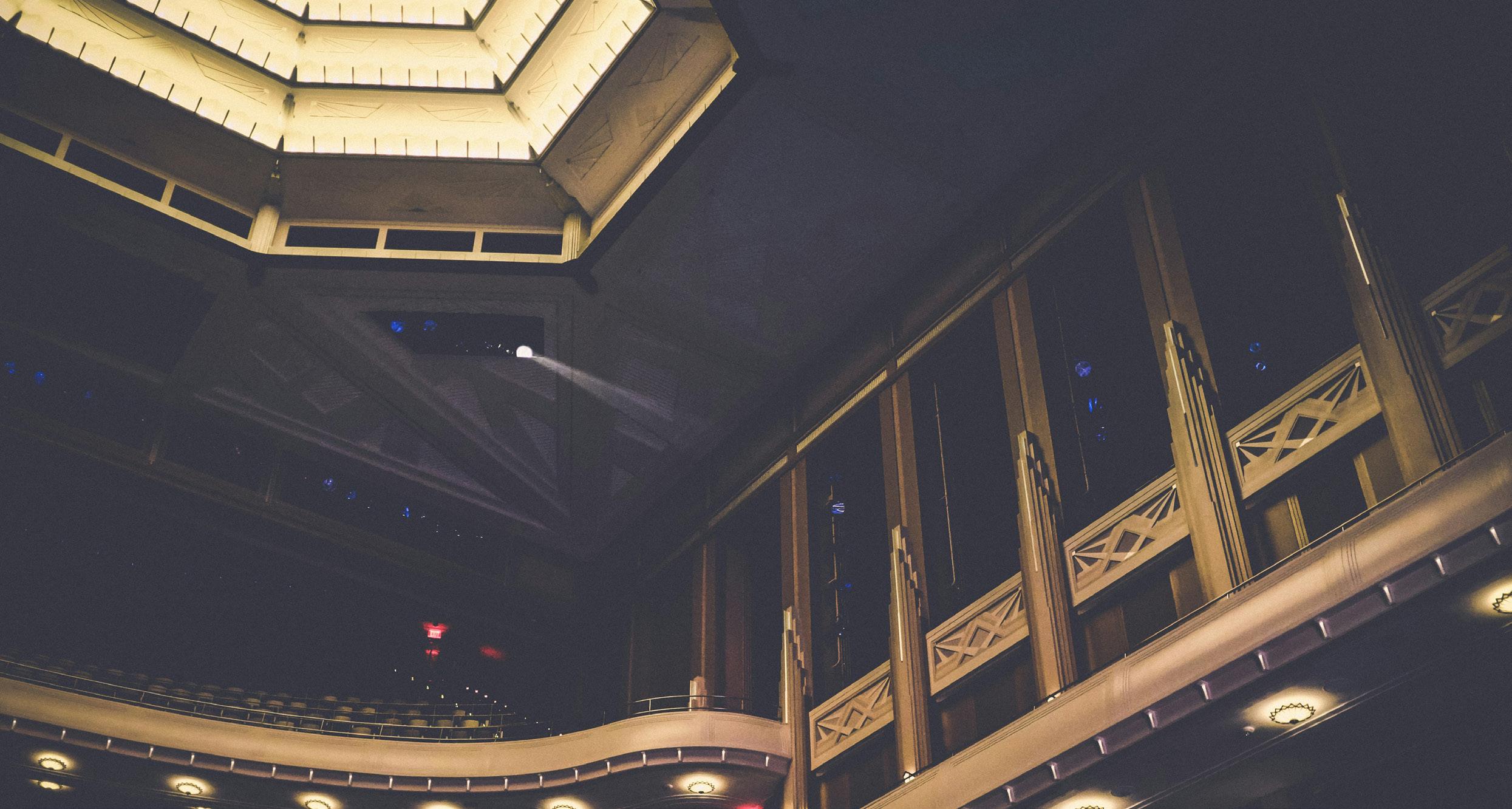
Broadway musicals are the expressions in my life. If someone asks me how do I feel, I will answer them by giving them the title of a Broadway song. When I was a little girl I loved the musical Annie. I remember I watched the film version and got the record. I would spin around as I played it. One song that was my favorite was ‘You’re Never Fully Dressed Without a Smile.’ It gave me a happy feeling, but the irony is that I can’t smile. As I got to know more Broadway musicals, they became my way of telling people how I feel. And sometimes they can reflect different parts of my life.
I was born with Moebius Syndrome. It is a rare neurological disorder. I am not able to smile or have any movement. I also have limb deformities and a slight learning disability. I had a lot of speech and physical therapy as a child. I remember as a little girl wanting to be pretty like Judy Garland. I loved her
films and her singing and dancing, her songs made my soul dance! I was like Violet in the musical Violet, when she sings, ‘All to Pieces.’ Dreaming of being like movie stars and just wanting to be normal. Maybe I could love myself more?
Socially, in high school and adulthood, it has been difficult for me. I never had a social life in high school like going to dances, going to parties or dating. I never really had a group of friends in adulthood. A lot of times I feel like in the song, ‘Where Do We Belong?’ from the musical, Mean Girls. I truly don’t know where I fit in life. I so much want to be included but always feel judged by my challenges, people assume I don’t want to do things, or that my disabilities might be hindering in having fun. Sometimes I feel like the song ‘Alone in the Universe’ from the musical Seussical. People don’t really get to know me or what I think and feel. Because, like in the song
‘I can dream, and I can fly!’ people in society must stop and listen to be a friend.
In some ways my life has mirrored Annie. My father died the year after I graduated high school. My mother died years later from a heart condition. I never had a brother or sister. I had to learn things on my own. Sometimes I had help but there were times help was not available. The song ‘It’s a Hard Knock Life’ in the show

is very relatable. I miss my parents. The holidays can be difficult because it is a reminder that I don’t belong to anybody. However, like Annie, I know there are other people who are alone and feel the same. And that we will find the sun after the grey skies clear.
As I have gotten older, I have become more confident. When I was younger, I was shy and unsure of myself. Because of having a speech impediment and having physical disabilities, I struggled to go out in the world and meet new people. However, now I feel like Maria in The Sound of Music when she sang, ‘I have Confidence’ to long for adventure and ‘Do things I never dare.’ I want to travel and see what’s out there for me. One place I love to go to is New York City to see a Broadway show. I think of the song in Annie titled ‘NYC’ and how it describes the city as “grand” and the feeling of optimising. I know some people might look away and be afraid but that is okay. I know that when someone truly wants to be my friend, they will be patient and try to understand, and will shake my hand. I have learnt that being confident means to accept myself even when others don’t know how to embrace my differences.

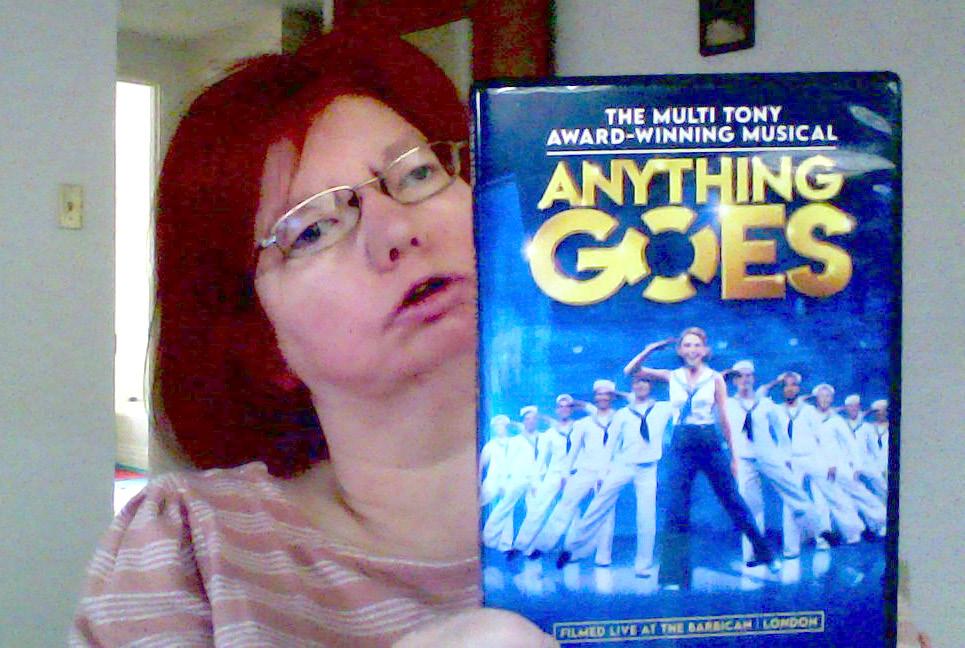
My motto in life is that I want my difference to help other differences. I wrote and illustrated a children’s book many years ago titled, ‘I’m Smiling on the Inside.’ It is about me living with Moebius Syndrome, and what I like to do. It is also a good book to help adults have a basic understanding of Moebius and how to interact with someone with Moebius. I have volunteered with special needs children. Currently, I volunteer with ALSO Youth, a non-profit organization that gives LGBTQ youth a safe place for them to share their feelings and find support and feel loved. They also offer a group for youth with disabilities which I think is awesome. All differences need to feel loved and embraced. The song, ‘Freak Flag’ from Shrek is an anthem that stands out to me when thinking about differences, it is important to have pride and not to feel ashamed. We need to hold our flag high and ‘never take it down.’ Love ourselves, and hopefully society will come to love our differences too.
I must be honest, there are times I get frustrated in my life. Struggling to physically do things can be difficult to accept. I want to be like everyone else, but I also know I have unique challenges. Transportation can be a nightmare, relying on another source when I can’t drive is scary, sometimes the driver does not know where to go or leaves without me knowing they are there. Having a speech impediment can be exasperating; repeating words over and over and people looking at me and saying ‘what did you say?’ can be the most bothersome! Usually, I point at or write down what I’m trying to say, when there is a will there is a way! All these situations can make me feel that life is unbearable at times, but
Photograph contributed by Theresa McMillanthen I think, ‘How Lucky You Are’ from Seussical. Life can be hard, but I have overcome many hurdles and I’m still here. There is a reason for my existence, and I should not fear!
Broadway musicals have been my teachers and comfort me when my life is stressful, they take me ‘Somewhere Over the Rainbow,’ just like Judy Garland sings in The Wizard of Oz. Musicals are magical as they transport us to a journey of selfdiscovery. Sometimes they challenge us to think of new ideas of how to solve a problem. Often, they help us to cope with the reality we live in. There are also deeper meanings in songs,
like the first song I introduced in the article, ‘You’re Never Fully Dressed Without a Smile.’ I believe the “smile” is not about facial expression, but having a positive attitude even though life is not easy. It is how one looks at things. Musicals create a passion in me to open my mind to create new stories and dream like the song, ‘Oh, the things you can think!’ in Seussical. I am a significant person in society, and know that being different is good, even though society can make me feel otherwise. All I can say, like Pinocchio in ‘Freak Flag,’ is that “I’m wood, I’m good. Get used to it!”

Moebius syndrome is a rare neurological disorder characterised by a weakness or a paralysis (palsy) of multiple cranial nerves, most often the facial nerves, which can mean that individuals with Moebius syndrome are unable to smile, frown, easily form their lips or raise the eyebrows, or even close their eyelids. In some cases Moebius syndrome can be associated with intellectual disabilities such as autism, and development delays, although it mainly affects children with typical development and intelligence.
The disorder is present at birth which means it is congenital, the exact cause is unknown although whilst it largely appears to occur randomly in most cases there are some cases of it occurring in families which suggests that there may be a genetic component.
We are delighted when individuals submit their own stories to us. We can give a platform for individuals to have their voices heard through Rarity Life magazine.
We have previously had many great articles written by contributors about a great variety of subjects related to rare diseases, disabilities or cancer.
If you’d like to discuss submitting a story with our editor just email ilmarie@samebutdifferentcic.org.uk and we will get in touch.
Read previous contributions below”
Facing the Future contributed by Katja Taits
Finding a way to be OK contributed by Sarah Land
Nothing can prepare you for a real incurable illness quite like an imaginary one contributed by Ian Marchant
The mental health of parent carers contributed by Anne Dewhurst
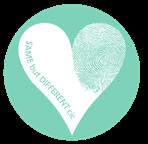


In conversation with the Special Olympics Great Britain
“Even though you have an intellectual disability, there’s so many different ways that you can become a leader”
- Kiera Byland, Chairperson of the Global Athlete Leadership Council for the Special Olympics.
‘Special Olympics is a global movement of people creating a new world of inclusion and community, where every single person is accepted and welcomed, regardless of ability or disability.’
Regular readers of Rarity Life magazine might remember that we interviewed the wonderful Kiera Byland in our eighth edition, shortly before she began her role as the chairperson of the Global Athlete Leadership Congress for the Special Olympics. When Kiera spoke about the Special Olympics her passion and commitment to uphold and further the mission of the organisation were clear. We knew then that we wanted to look at the story behind this incredible global movement in more depth, and to learn more about the Special Olympians whose lives
have been changed by the opportunities sport has given them.
“I focus on telling the athlete’s stories, because there will have been so many challenges for them, and in the story of how much has been overcome we can see just how powerful the impact of sport is.” Tom Rawlings heads up the Communications Team for the Special Olympics GB charity here in Great Britain, who are part of the global Special Olympics International organisation, the largest disability sports organisation in the world.
The movement was begun in the USA back in 1968 by the late Eunice Kennedy Shriver, sister of President John F Kennedy. Eunice was part of a large Irish Catholic family, one of eight siblings.
It was her experiences of how her sister Rosemary,
who had an intellectual disability, was treated that led her to found what would go on to become the global Special Olympics movement.
Eunice started by founding Camp Shriver in 1962, a relatively simple back yard summer camp at her farm in Maryland, which provided people with disabilities the opportunity to participate in sports and other activities. Just six years later the first International Summer Games were held in Chicago.
Today the global movement Special Olympics reaches 5.7 million athletes across 200 countries, honouring its continued mission to ‘inspire real change by raising awareness of intellectual disability, ending discrimination, and building an inclusive world for all.’
What truly sets the Special Olympics movement apart is the principle of being accessible to everyone, with different programmes and projects designed to ensure this guiding principle can continue to be met. The definition of sport in the Cambridge Dictionary is ‘a game, competition, or activity needing physical effort and skill that is played or done according to rules, for enjoyment and/or as a job.’ Yet when we think
of sport we often tend to think that it is, or must be, played with a high level of skill, requiring a good level of not only fitness but also mobility.
The Special Olympics Motor Activity Training Programme (MATP) however, a truly innovative and unique programme, has been created and designed especially for athletes with Profound and Multiple Learning Difficulties (PMLD) or complex needs. MATP is a global initiative, delivered within both education and community settings, to athletes who would be ‘unable to participate in official Special Olympics sport competitions because of their skill and/or functional abilities.’ It is designed for athletes of all ages, focusing on the abilities an individual might have, or be able to achieve, thereby ‘enabling them to work and showcase motor skills and sporting achievements that are relevant to them.’
In the UK a dedicated team from Special Olympics GB are working hard to embed MATP within both education and community settings, Tom explains that the team “provides staff training and then support multiple schools and community settings to actually deliver and to host these programmes themselves.”


Case study: Eddie B
The school Eddie B attends is a special school and SEN College for pupils aged 2-19 in Cheshire, and in 2023 it introduced the MATP programme in the PMLD classes. After working hard throughout the year, the Key Stage 2 (ages 7-11) PMLD class were able to showcase their individual events to their proud parents during the annual summer sports day. Eddie, age 8, delighted his parents with his rolling skills, kicking a big, heavy blue foam roller from in front of his wheelchair. The feeling of pride and accomplishment that he felt when everyone clapped was absolutely self-evident to see! Other events that his classmates took part in that day included throwing and catching skills, football skills, and skittle skills.
Photograph by Alex BraunThe main focus of the programme is on training and participation, in addition, it seeks to develop some of the ‘core motor skills that are linked to Special Olympics official sports and places an emphasis on achieving an athlete’s personal best.’ In this way, the setting, once trained, can use the MATP programme to provide ‘genuine opportunities for training and competition for individuals with PMLD and complex needs [that] are realistic and tailored to the individual.’
For those individuals who want to take part in more formal sports training and athletic competition the Special Olympics
infrastructure provides a range of both summer and winter sports across the year. Tom explains, “we offer 27 sports in Great Britain, and there are other sports around the world that are offered as well within the Special Olympics programme.” The sports offered include athletics, aquatics, badminton, basketball, cricket, cycling, football, gymnastics and judo through to ice skating, skiing and powerlifting. Special Olympics GB works in close partnership with disability sports organisations, National Governing Bodies and other linked charities to be able to provide as many sporting opportunities as possible around the
country. “We partner with organisations using a process called accreditation. Accreditation means that the club or organisation has met a certain criteria, and offers a fun, safe environment.”
To be part of Special Olympics GB, all clubs must go through an annual accreditation process to ensure that they continue to meet and maintain the standards and guidelines that are set by Special Olympics GB, this way they can continue to uphold quality, safety, and consistency across all the offered programmes. In addition, both the club and any individual athletes that train there can participate

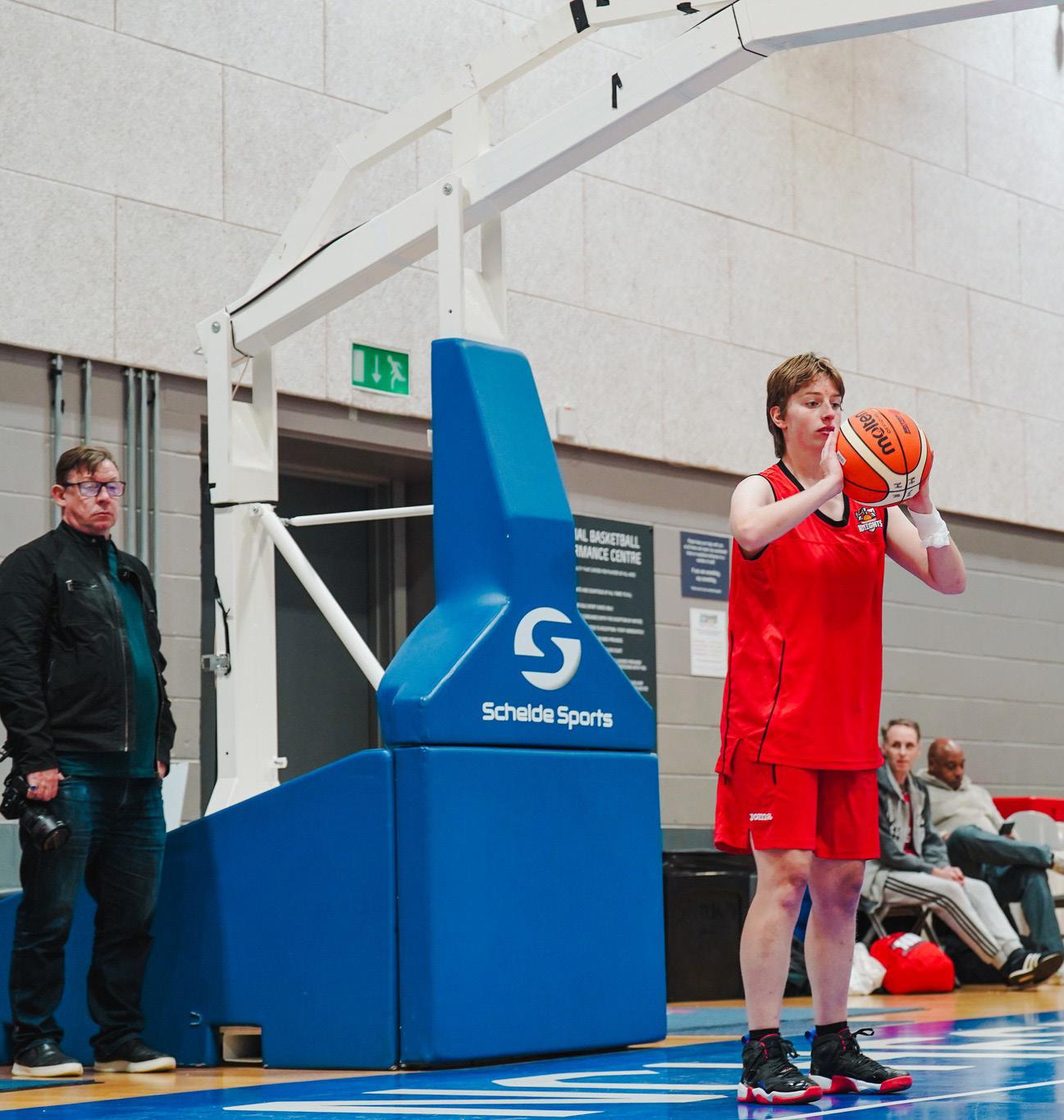
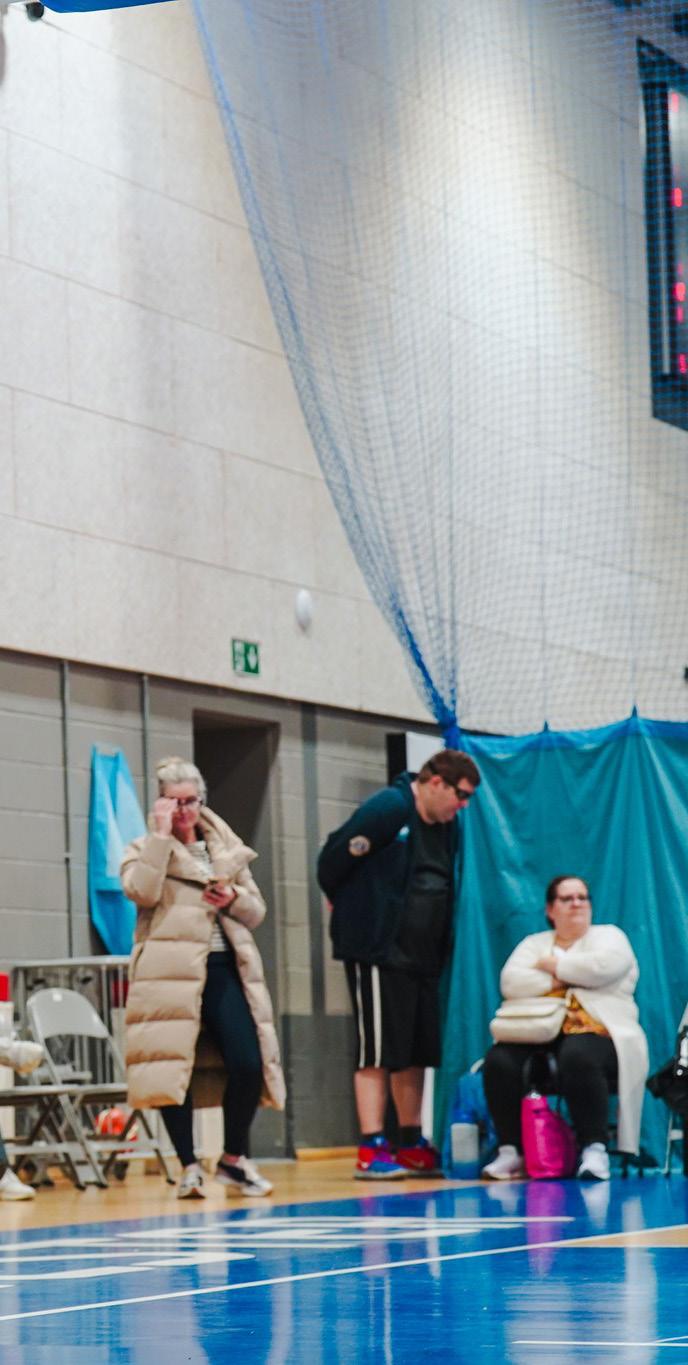
in Special Olympics GB competitions and events both at home and abroad. It is this competition pathway, that was designed to nurture and progress athletes from local competitions through to accessing elite level competitions, which provides athletes with the opportunities they need to progress to the top in their chosen fields. Tom explains that often “a myth that we have to dispel is that we’re not just focused on elite competition and sporting performances, success and medals. It’s hugely important for our athletes, but our work goes beyond this to change lives.”
In the UK there is effectively a four year cycle of major Special Olympic events, the World Summer Games, the National Summer Games, the World Winter Games and a National Winter Games. Clubs and coaches select their own squads to compete at the National Games. To be selected to go to the World Games an athlete must first be nominated by their coach or club. They must also meet the Special Olympics GB selection criteria, including being able to demonstrate a number of skills to confirm that they can take part. Tom clarifies; “our selection for our World Games squads isn’t based on speed, distance or ability. It is based on things like leadership skills, commitment to going to training each week, or each day, whichever it may be. Life goals, for example, have they had an opportunity like this before? We also consider how the individual might react to being overseas without family for the first time. So, it’s a full range of criteria that ultimately decides how big the impact of being selected will be on the athlete.”
As part of their strategic plan, ‘Inclusion in Action,’ Special Olympics GB will be launching several new participation programmes for their accredited clubs and organisations. The
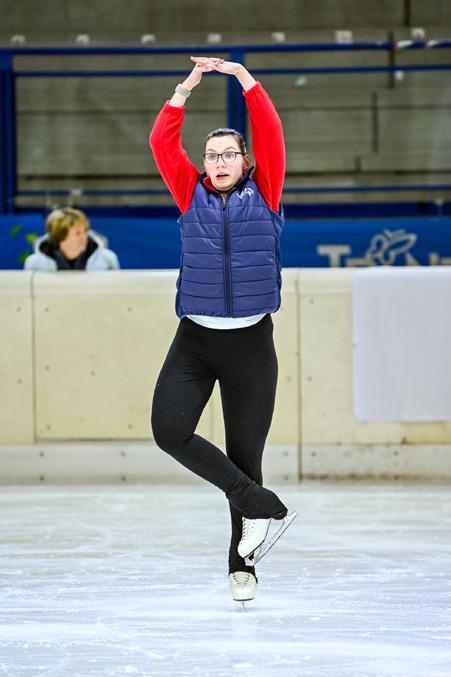 Photographs
Photographs

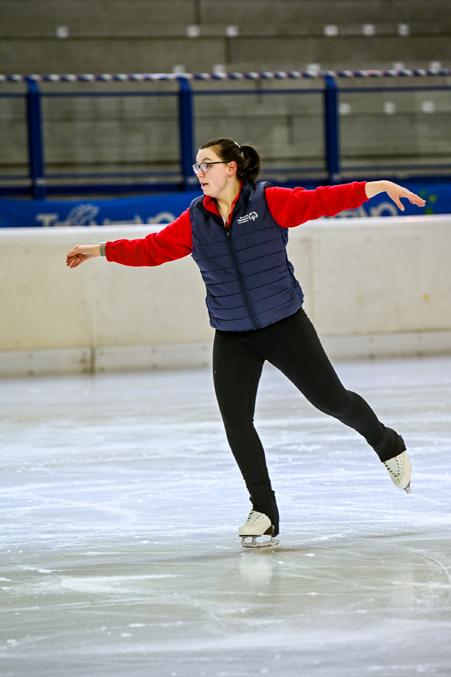
by
Case Jeremy Nakostudy:
Stephanie GottOne athlete who was recently selected, and competed at the inaugural Special Olympics GB National Winter Games which took place in Italy in January 2024, is Stephanie Gott. Stephanie’s first few weeks of life were incredibly hard on her, as she had to have open heart surgery, a long and difficult operation for such a tiny baby to endure. She then suffered a stroke, resulting in learning difficulties and right sided hemiplegia. Later she experienced bullying at school, but after discovering ice skating, a sport she both loved and excelled at, it changed everything for her. “It’s changed my life forever. I was bullied at school because I was different, people used to take the mick out of my arms and my legs. We went ice skating one weekend, I was clumsy like Bambi, then for my 14th birthday I got lessons, and ever since I’ve not been off. I’m on the ice for three hours each day, I feel free as a butterfly!”
Today, through her hard work and love for ice skating she has overcome all the hurdles life has placed in front of her. A proud Special Olympic, and inclusive skater, ice skater Stephanie has won multiple medals thanks to her passion and commitment to her sport.

plan details that ‘these programmes will include; Fitness, Healthy Athletes, Young Athletes, Impact and Evaluation programmes, as well as Unified Sports.’
The Unified Sports events will bring people with and without intellectual disabilities together to play in the same team, and were designed to build more inclusive and supportive communities around the regions and clubs working with special olympic athletes.
Above all, the belief that the very act of participating in ‘any sporting activity, training and competition is important to help people with intellectual disabilities become physically active, develop sporting skills and more importantly build confidence and friendships’ is what lies at the heart of the global Special Olympics movement.
As Tom concludes, “We are focused on how we change lives, and providing regular sporting opportunities is the first part of doing that. Then, if there’s a competition pathway that people with intellectual disabilities want to feature within, it can be the catalyst that gives the athlete the confidence to develop their employability skills, to live independently. These are just some of the success stories that we see, that have resulted in the biggest transformation. Employment and independent living, which would not have been possible without developing skill sets through sport.”
Photograph by Jeremy Nako
The language we use might both change and develop over time and within the context of different countries and cultures around the world. But for the purposes of this feature we are using the term ‘Intellectual Disability’ as per the definition on the Special Olympics GB website. To summarise, ‘Intellectual disabilities (ID) or learning disabilities is a term used when a person has certain limitations in cognitive functioning and skills, including communication, social and self-care skills.’
The website further clarifies that ‘the majority of people with intellectual disabilities may also have other health conditions, including, physical, sensory and psychological, which means that many people competing in Special Olympics GB, will have additional disabilities as well as intellectual disabilities.’
For more detailed information: Visit the Special Olympics GB website
With thanks to Jeremy Nako for use of some of his photographs:
Photograph by Jeremy NakoBetween Two Kingdoms, What Almost Dying Taught Me About Living by Suleika Jaouad , published by Penguin books.
“I needed to believe that when your life has become a cage, you can loosen the bars and reclaim your freedom.”
In our last edition of Rarity Life magazine, we included a link to a Goodreads list of ‘Books You Need To Read If You Have Cancer’ in our ‘Cancer Care Gift Guide’ feature, so I decided to choose one of the suggested books as my next read. As the saying goes, we are not supposed to judge a book by its cover, but I did. Sitting at number 15 on the list it was the cover that drew me to this book because in truth it looked more like a travel book than a ‘cancer book.’ In many ways, it is that not


least because Suleika Jaouad, the author, takes us on her road trip in the second part of the book. It goes far deeper than that however, as the reader we accompany her as she travels through her often devastating and difficult cancer journey, and we continue to travel with her as she seeks to find out who she is, and what her life might be once her cancer is in remission.
Jaouad was just twentytwo when she was diagnosed with leukaemia, spending the next four years undergoing gruelling treatments and often spending weeks on end confined to her bed in isolation. She begins to write a blog, and it is through this that her life is truly forever changed, her words offering her a connection to the world in many incredible, and often unexpected ways. Writing helps her not only survive her treatment and the grief and loss she experiences along the way but also helps her to navigate her early twenties and the road to becoming the woman she is today. More than anything this book is the story of self-discovery, and of learning to live with the cards you have been dealt on your terms.
Visit Suleika Jaouad’s website
American Symphony, starring Jon Batiste, directed and produced by Matthew Heineman and distributed by Netflix.
“It’s playing the thing that we all know is unfolding, whether we want to accept it or not. It’s there always. We just need to harness it. Be open to it.”
It is worth noting that it might seem that American Symphony represents somewhat of a departure from the genre of films or TV shows we typically review. A biographical documentary film, American Symphony explores a year in the life of musician Jon Batiste, and was written, shot, and edited by Matthew Heineman. However, the film explores not only Batiste’s incredible musical talent and his impressive career, it also document’s his wife’s struggle with leukaemia. Batiste’s wife is none other than Suleika Jaouad, the author of ‘Between Two Kingdoms, What Almost Dying Taught Me About Living’ reviewed above. It is profoundly moving to watch a film that continues to tell Jaouad’s story, albeit interwoven with a year in her husband’s life.
Released in 2023, the actual filming took place in 2021, a time when the world was still dealing with the recurrent restrictions of the COVID-19 pandemic. It feels initially jarring to see rehearsal rooms and packed audiences in which everyone is wearing face masks, but when it intersects with scenes shot in the hospital whilst Jaouad undergoes treatment it brings with it the stark realisation that those living with cancer, or who are in any way immunocompromised, have long lived in a world of masks, gowns, gloves and extended periods of isolation. The original premise of
the film was for it to be a music documentary about Batiste and his groundbreaking, crossgenre music, following his creative journey as he wrote, collaborated and performed his ‘American Symphony’ at Carnegie Hall. But life, both in the form of the global pandemic and Jaouad’s relapse changed everything. Instead, we see two shared lives that are sharply contrasted, in the week that Batiste learnt he had
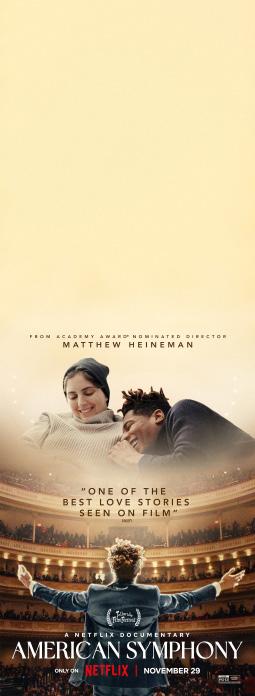
received 11 Grammy nominations Jaouad learns that her cancer has returned. The English sculptor Henry Moore once said that “to be an artist is to believe in life.” This beautiful film shows how deeply Batiste and Jaouad believe in life, despite living with the very real possibility of her death, it is their love story that truly sets this film apart.
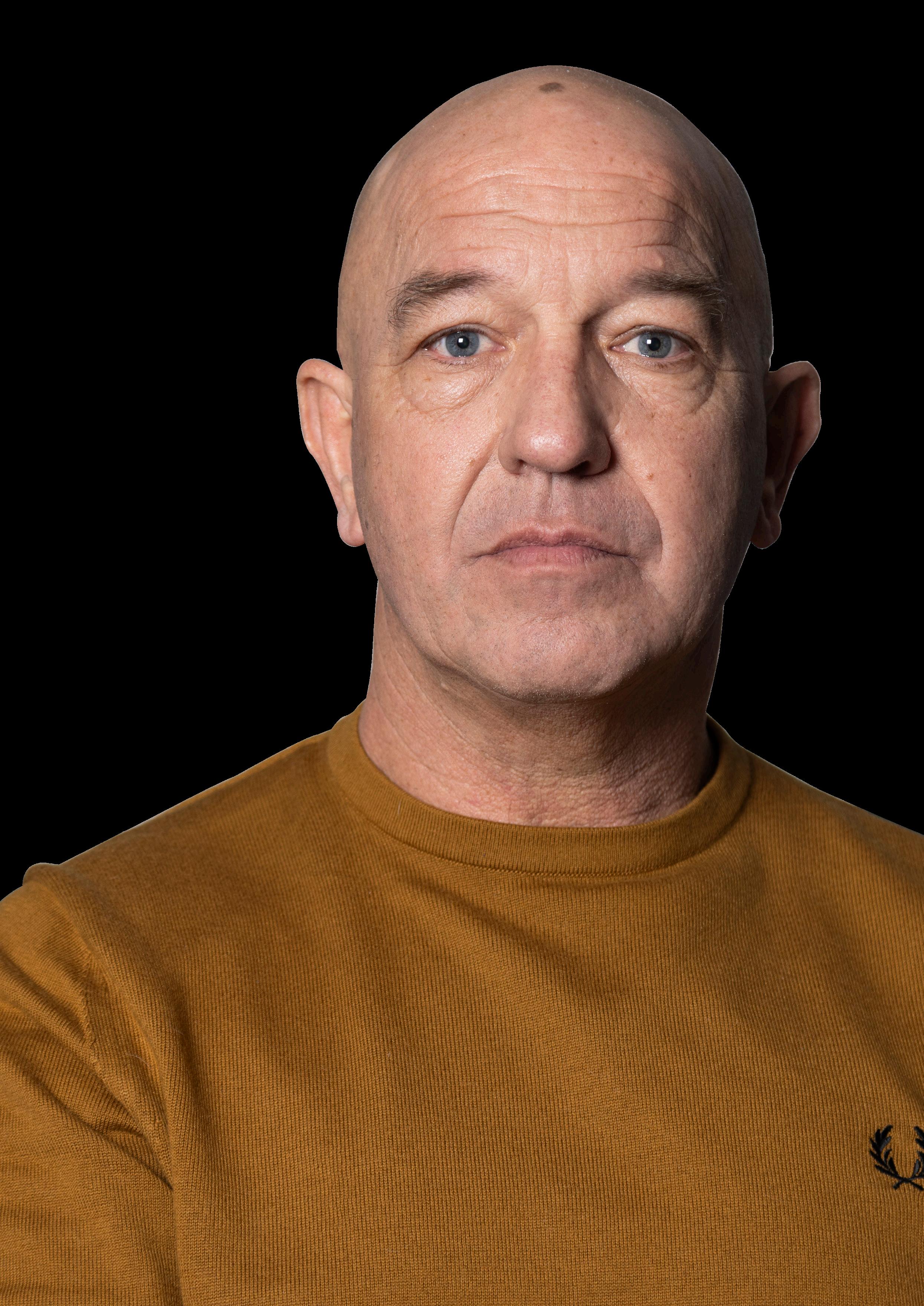
In conversation with Loz Harrison
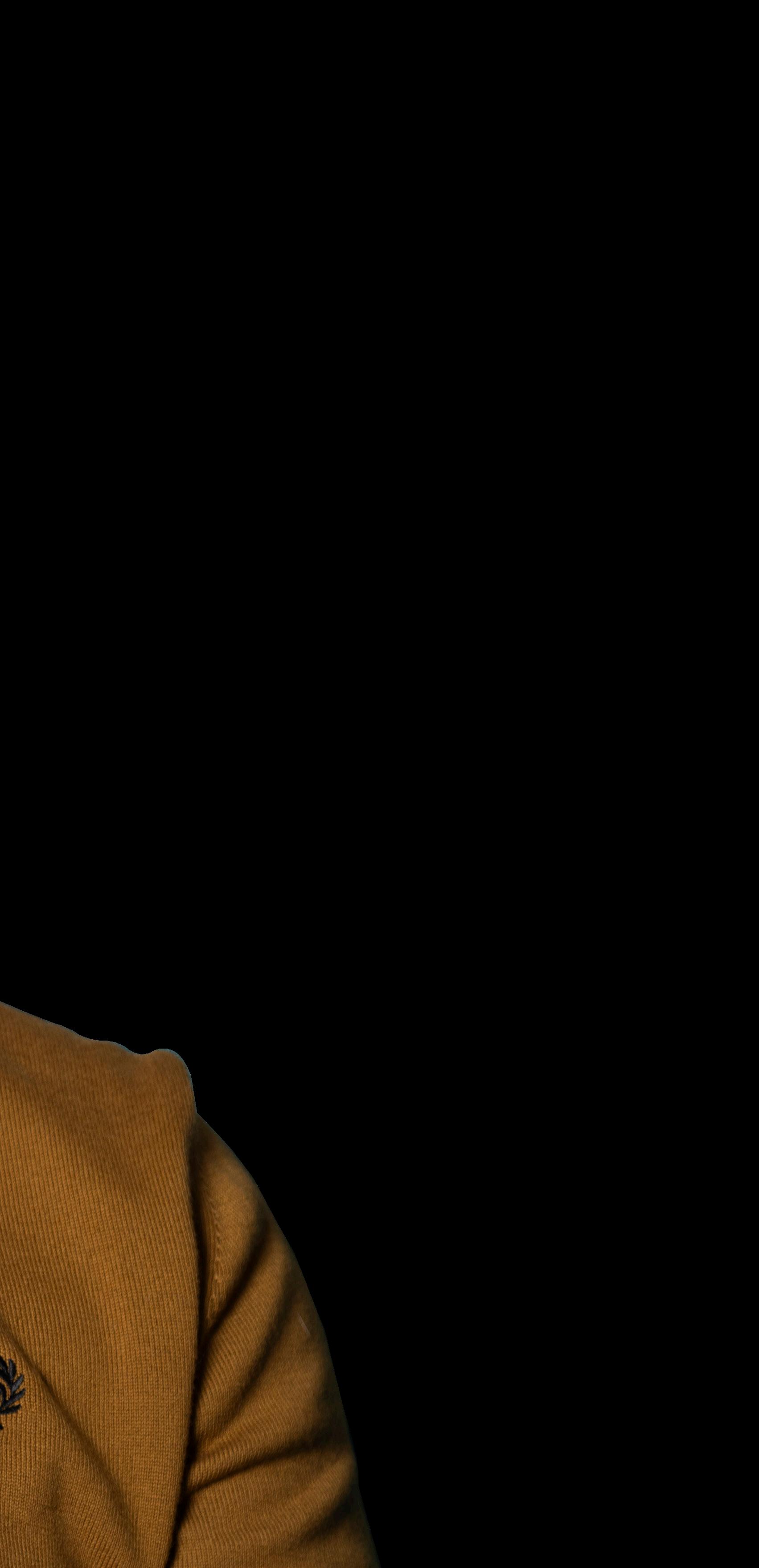
“‘Then this is where the fight starts. Don’t flannel anything, just tell me as it is, whatever you want me to do, I’ll do. But I want you to keep me alive.’ We have a great rapport, and he’s still my consultant now. He’s a good man! I recall him saying, ‘if you’re going to have cancer, this is the best one to have.’ I just said I’d rather I didn’t have any at all. But we’ve got what we’ve got. If there’s a fight to be done, this is where it starts. I’ve always been very positive.”
Loz was worried about how his cancer diagnosis would affect his family, specifically his children. “I told my friends and family virtually all at the same time because I didn’t want them to hear it from somebody else. What was annoying is that people hear you have leukaemia and believe you are going to die. I’d have to explain that it’s not always the case. There’s a fight on my hands, yes, but I’m not going to die.”
Like any parent, he wanted to protect his children and chose not to tell his eldest son initially. It was three years before they told him “I chose not to tell Tom because I wanted him to see that everything was okay. I hid it from him. Our personal friends would come up to me and ask about my treatments and I would cut them short. I’d have to phone them up and say listen, I haven’t told Tom. I found that very difficult.” When Tom was in his 4th year in high school Loz decided the time was right to tell him, he didn’t want to leave it longer as he was worried it would affect his upcoming exams in the next year. “If he failed them, I would be gutted. I told him, and there were a lot of tears shed. But I said to him that I’ve been so well, he’d not seen a difference in three years. It was a massive relief.”
CML is invisible, and yet Loz has been receiving treatment since his diagnosis 14 years ago. The treatments have changed as time has gone on and he has been on his last set of drugs for the last three “People think that I’ve been cured

for several years, and are very shocked when I tell them I am having treatments, and find out that I still have leukaemia. They usually tell me it’s because I am so good with my positive attitude.”
For the most part, he has stayed positive throughout his cancer journey but there have been times when he has struggled with his mental health and he is careful to manage it. “I’ve had a friend of mine who took his life, I always remember him. So that’s why I’ve always thought positive, you know, try to never go down those roads, because I know men who have done that. I have cycling, I’ll be out on the road for hours and hours, and that gives me peace of mind and keeps me fit. I think that’s what helped me get through
it. But I’ve had a couple of low spots. These last couple of years I’ve had more problems with my joints, and I’ve not been able to get on the bike, which has really, really cheesed me off because I love cycling, and it gives me peace of mind and it’s good for my well-being, so I’ve struggled more with this these last couple of years.”
Having his family, friends and medical team around him, offering emotional and practical support as he needs it has been invaluable. Indeed, this overwhelming support has inspired and driven Loz to raise huge amounts of money for charity, by taking on some cycling events over amazing distances.
“When we came back from the first bike ride, from Cardiff Castle to Flint Castle, my family
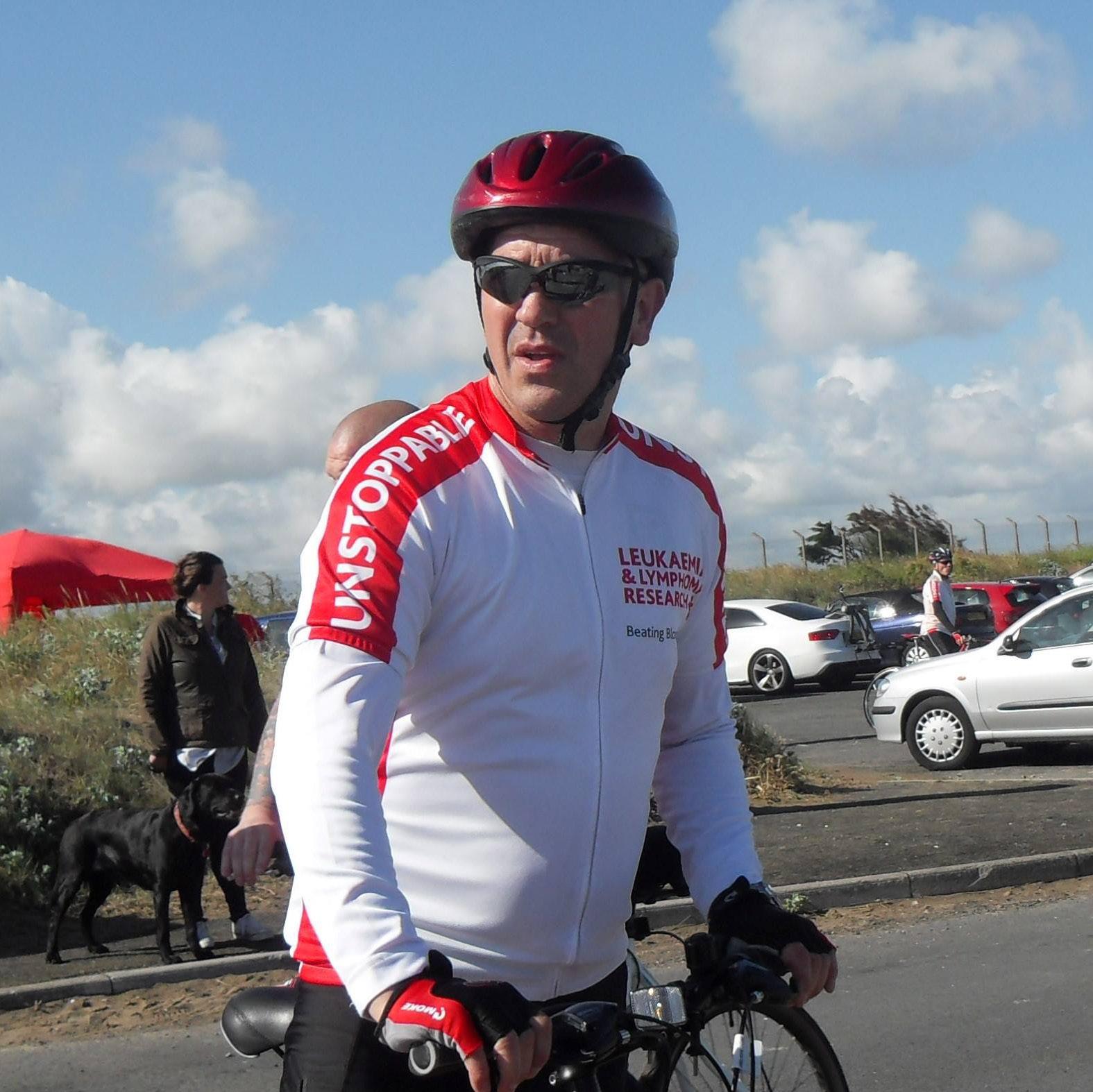
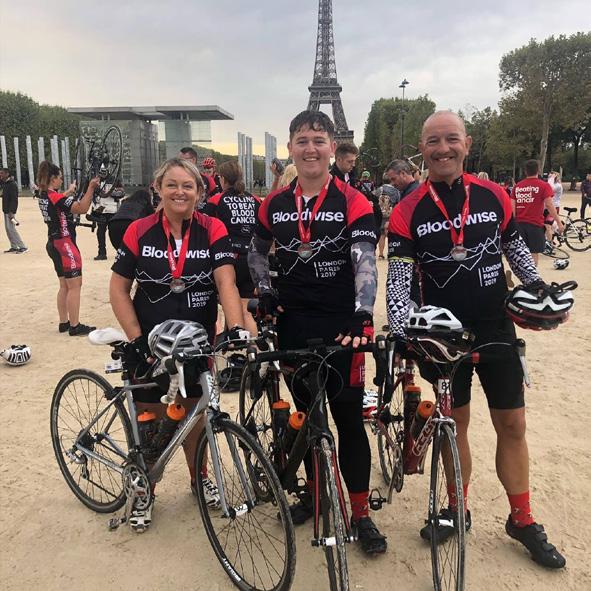
and friends were on the green waiting for us. It was a very emotional moment for me. It was the first event that I’d done, and I didn’t think I’d be able to do it with my fitness. But I have some very close friends, friends who have followed me with the cycling and have been very, very supportive. We are still best friends now.”
Not only is he raising money, he is also raising awareness, which is incredibly important to him, because he wants to show people that a diagnosis like his is not a death sentence and that there can be, or is, plenty of hope and a future after such a diagnosis.
“I’m a great believer in showing people that it’s not all gloom and doom. One lad phoned me up to tell me that he had been diagnosed with CML, because he knew I had too and that I’d survived. I said to him ‘you know what I’m about, you know what I’ve done, so you know, it’s not a death sentence.
Photograph courtesy of Laurence HarrisonKeep yourself fit, not only your body but your mind too.’ I’ve given a bit of positivity to him, and hopefully to others.”
Having support from other patients has helped to drive him on, and finding a community of blood cancer patients at fundraising events always inspires Loz. “I’ve met some brilliant, brilliant people on the bike rides. One guy, Simon, I met on the London to Paris ride, he’s like me and very positive. We bounce off each other. I think that the connection with other people with the same condition is really important. When I did the first blood cancer ride in 2016, I made so many friends. Listening to stories that are so very, very similar to mine gave me a lot of comfort, it’s helpful knowing that you’re not the only one. Everyone helped each other and stuck together. It’s very important to have a chat with someone who’s gone through what you’ve been through and to get that experience.”

Today he is more aware of the impact that the time he spent away from his family had when he was doing his fundraising and charity work. “I didn’t see the effect on my family time, that is something that I do regret.” He will always be a fundraiser, but is acknowledging that he needs to balance it out more with his family life. He has already achieved so much, and now with his joint pain meaning that he can’t cycle, Loz is looking at other avenues to raise funds and awareness, such as a scooter rally on his Lambretta…
“It’s important that money is raised to fund more groundbreaking treatments. There are 137 different types of blood cancer, and the charity Blood Cancer UK are investing over £500 million towards research and treatments. Every little helps them reach their goal.” Over the years Loz has raised a truly amazing amount through his fundraising efforts, £230,000! But he won’t stop there, as he explains, “I’ve always wanted to raise a quarter of a million, so we’ll see how we get on for the rest of it. I’ve always said it’s a team, it’s not just me. It’s everyone who’s helped through the years, incredible amounts… it’s amazing.”
Leukaemia is the cancer of the body’s bloodforming tissues, including the bone marrow and the lymphatic system. Leukaemia occurs when the body makes some abnormal blood cells, which behave differently from healthy blood cells. There are many types of leukaemia, one of the ways in which the types are categorised is acute (faster growing) or chronic (slower growing).
Chronic Myeloid Leukaemia (CML) is a type of blood cancer which indicates slow growing development of myeloid white blood cells, which affects the blood cells in the bone marrow.
For more information and support contact:
Blood Cancer UK


A sunkissed adventure to the jewel of the Mediterranean
The UK has long held ties with Malta. It has a strong naval history and was the happy home of Queen Elizabeth II and the Duke of Edinburgh during their early married years; they returned to the island repeatedly including celebrating their 60th anniversary there. So, what is the draw of this gem? It could be the glorious weather and low rainfall that entices many, its long history, the fresh food and drink or simply its beauty. The island is small and easy to get around, public transport is efficient, step-free and reliable, there are reliable taxi firms and car hire is also a great option. Additionally, there are plenty of restaurants and bars! One thing’s for sure: a trip to Malta is one to be made!
Beach Day - Summer holidays abroad paint a mind’s eye picture of warm sun, warm sea and golden sandy beaches. Of course, Malta is no exception. Many beaches here have wheelchair access across the sands via walkways, accessible toilets and parking and offer Floating Wheelchairs for use in the sea. These beaches include the beautiful sandy beach at Ghadira Bay, Mellieha and Pretty Bay, Birżebbuġa. So, whether you visit for an hour or a full day, you can find your relaxation and zen here!

The Tarxien Temples - Malta has been inhabited since pre 5000 BC and The Tarxien Temples are a UNESCO World Heritage Site, an early complex that stands the tests of time dating back to Malta’s earliest inhabitants. The complex was constructed between 3600 and 2500 BC making it older than the Egyptian pyramids and Stonehenge. They were discovered in 1913 and have been studied and excavated ever since. Easy access around the site caters for step-free access, with wheelchair ramps in place. Some areas are quite narrow, but the site has its own smaller wheelchairs if needed.
Find out more
A Guided Day Trip - There are plenty of hills in Malta, some stairs and high kerbs too, so knowing what to avoid is helpful. We recommend booking an accessible tour that can take you to amazing places. This tour Valletta & The Three Cities | Disabled Accessible Travel takes in sights such as St John’s Cathedral, the Museum of Archaeology and the old Naval yard. It is a private tour and includes accessible transportation from and to your hotel.
Find out more
Barraka Gardens - Experience the breathtaking island views from the easily accessible Upper Barraka Gardens. The gardens are built on top of a bastion, at the highest point of Valletta. It was once the training grounds for ancient Italian Knights, built in 1661. These colonnaded gardens in Valletta now offer a panoramic view of the harbour and beyond that offer tranquillity. A lift from the harbour area provides easy access to the upper gardens, where you can witness the age-old tradition of cannon fire salute which happens every day at noon. Admission is free, and an accessible toilet is conveniently located near the main entrance.

There is a wide range of hotels, from allinclusive to boutique hotels and self-catering accommodations to choose from during your trip to Malta. We always recommend contacting them directly to ensure the facilities will be suitable for your needs. We have chosen three of our favourite places to stay on the Island.
The Westin Dragonara Resort was the first hotel in Malta to receive the European Excellence Award for Accessible Tourism. This prestigious accolade was introduced in 2014 by the Malta Tourism Authority. The resort is renowned for its inclusive approach, offering facilities that cater to all guests, from its dining areas to swimming pool. The luxurious accommodation and prime location make it an irresistible destination. Nestled on a private peninsula in the popular area of St Juliens, the resort offers an enviable waterfront position. The rooms are not only spacious and filled with natural light, but they also exude a calming luxury. The dedicated staff at the Westin Dragonara Resort go above and beyond to ensure your stay is unforgettable.
Hotel Verdi graces the waterfront of Marsamxett Harbour, situated between the peninsulas of Sliema and Valletta. This modern hotel serves as an ideal base for your Maltese adventure, providing easy access to the entire island including a local ferry to Valletta just a short walk away. The hotel is situated along a picturesque promenade offering breathtaking views of the shimmering Mediterranean Sea and over the majestic Valletta. Along this vibrant walkway, you’ll discover a diverse array of restaurants, cafés, and bars. Rooms at Hotel Verdi, designed to a soothing monochromatic theme, provide a tranquil and comfortable retreat, equipped with top-notch amenities. Start your day with a complimentary breakfast and enjoy a delectable Mediterranean menu at the on-site restaurant throughout the day. This hotel truly offers a memorable stay in Malta.
Find out more

DB San Antonio Hotel is an all-inclusive option. Nestled in the vibrant tourist hub of Qawra overlooking the breathtaking St Paul’s Bay, this exquisite hotel, designed in a Moorish style, enjoys a prime location. It’s just a short stroll away from the lively town centre where guests can immerse themselves in the nightlife, entertainment spots, and shopping opportunities. The hotel has great accessibility, with ramps and lifts available throughout the premises. It features three swimming pools: an outdoor pool, an indoor pool, and a rooftop pool. A mobile pool hoist is available upon request for pool access, but it does need to be booked. (Unfortunately, the rooftop pool is not wheelchair accessible.)
Find out more

There certainly is not a shortage of great places to eat in Malta. Varied in taste there is something for everyone from fine dining to quick bites. The seafood especially is great on the island and highly recommended, caught in local waters. There are plenty of local bars, restaurants and cafés so you will never be short of options. We have chosen three of our favourite Maltese eateries.
Rebekah’s Restaurant situated in Mellieha offers Michelin-recommended gastronomy that will not fail to put a smile on your face. Based in a 200-year-old former farmstead Rebekah’s has much on offer from a delicious Mediterranean A la Carte menu to a fulltasting menu. Every dish is expertly put together and will make for a memorable meal. Paired expertly with an extensive wine cellar, this is a must-visit place.
Find out more
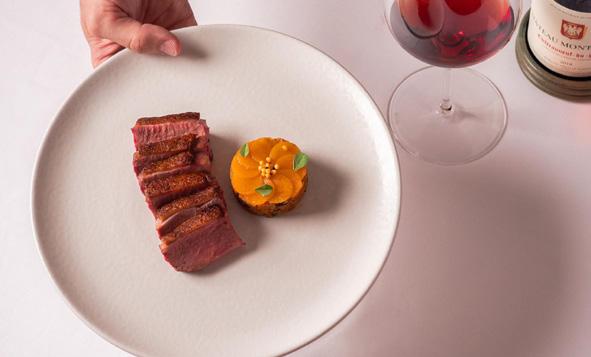
Radici Malta is a relative newcomer to the restaurant scene in Valletta, opened in November 2023, but is already making a name with locals and tourists alike. Open for lunch right through to evening dinner service, it’s the perfect hotspot to head to. This restaurant is a delightful dining experience especially for those who appreciate Italian and Mediterranean cuisine, and with a host of 5* reviews it’s definitely worth a visit!
Find out more
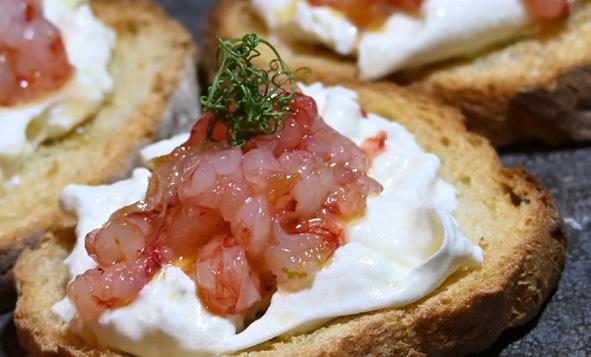
The Tartarun Restaurant in Marsaxlokk is a charming harbourside eatery in a quaint fishing village. This familyrun establishment, managed by the Schiavone family for over a decade, offers a unique dining experience. The Mediterranean flavours are authentic and the warm, family atmosphere enhances the overall dining experience making it one of the best spots on the island. The restaurant is particularly enjoyable during Sunday lunchtimes when the small port comes alive with 7000+ tourists for the local market. Despite the bustling outside, Tartarun remains a serene oasis. The staff are friendly and helpful. We recommend you book in advance to secure a table at this popular spot.
Find out more
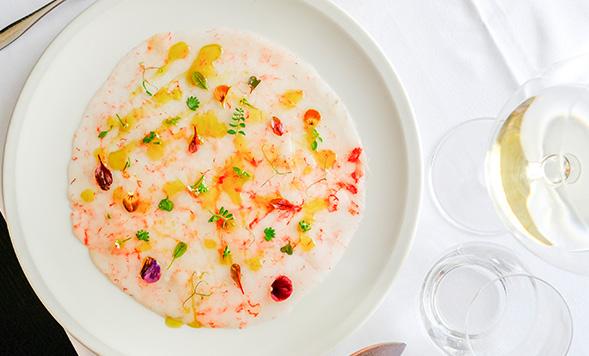

In conversation with Dr Ross Head, Associate Professor and Product Design Manager at the Cerebra Innovation Centre
“The smiles that the surfboards and the paddleboards give to families, and the memories that have been made, mean that they are probably my favourite innovation.”
For our second feature in our new ‘Meet the Professional’ series, we had the brilliant opportunity to speak to Dr Ross Head, Associate Professor and Product Design Manager at the Cerebra Innovation Centre, to find out more about his role.
Ross graduated with first class honours with a Product Design BSc in 2001, and subsequently completed a PhD in Digital Design Methodology in Glass Product Design in Swansea Metropolitan University before becoming a lecturer in Product Design at University of Wales Trinity St. David.
He is also one of the original founding members of The Cerebra Innovation Centre, and has been central in establishing the unit asit is today.
Cerebra is a UK based, national charity with a central mission to ‘improve the lives of children with brain conditions by supporting families through every step of their child’s journey.’ Ross explained that for a number of years the team at Cerebra were “getting phone calls from parents, along the lines of ‘I need a product for my child, but it doesn’t seem to exist.’ Or, ‘I’ve had this amazing idea for my child, but I don’t know how to make it,’ or even, ‘I’ve made this amazing thing and it worked really well for my child, and I just want to be able to share it with other people, can you help?’ Eventually the management team
decided to address the issue. They hired two engineers and two product designers, one of which was me, to work with families on their requests. And really, it just grew from there.”
The Cerebra Innovation Centre (CIC) was officially established in 2004, in partnership with the University of Wales Trinity Saint David (UWTSD). Today a small team of product designers work in close partnership with families to invent, design and then build bespoke products to help disabled children to be better able to explore, discover or navigate the world around them. Over the years the way in which products can both be made, and work, has changed along with the advancements in technology, and as Ross explains this has meant that the skillsets he needs within the team have also changed. “Back then we made everything by
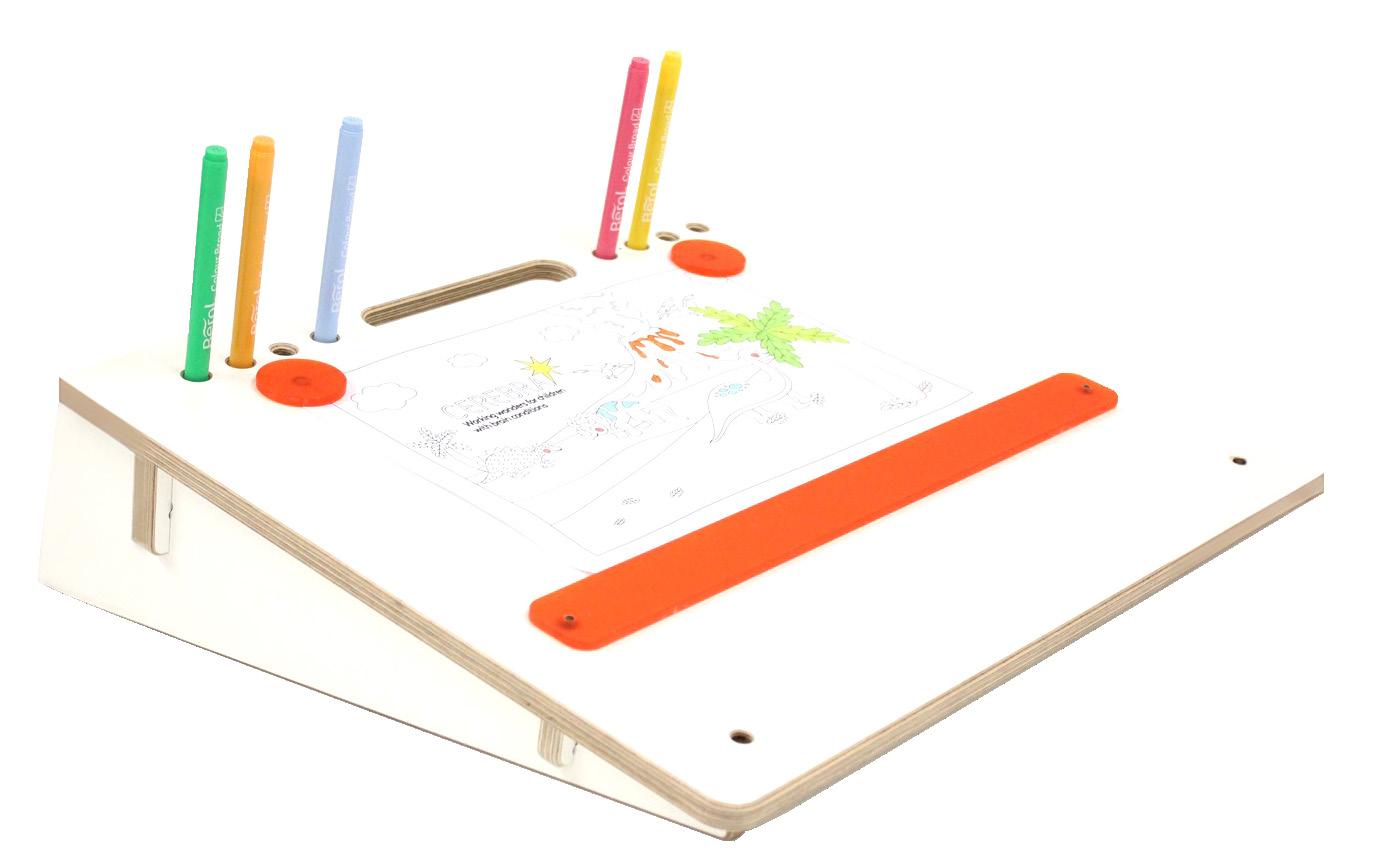
A doodle pad. Photograph courtesy of The Cerebra Innovation Centre (CIC)
hand. As we have embraced emerging technologies, our designer/maker team design on a computer and making it is a combination of machine and traditional hand tools.”
The CIC offices are based in the Alex Design Exchange building in Swansea, which serves as a hub for ‘design education, collaboration, and industry engagement.’ This enables the CIC team to work in close collaboration with the Assistive Technologies Innovation Centre (ATiC), an integrated research centre with access to new technologies such as 3D scanning and printing. “We’ve got a workshop downstairs, where we have a CNC machine, (a programmable machine producing custom-designed parts from a wide range of materials, including metals, plastics, wood, glass, foam and composites). This means that we can design upstairs and cut and create the product downstairs.”
The Cerebra website states that ‘in the UK today there are around half a million children and young people with brain conditions that result in complex medical, educational and social support
“The smiles that the surfboards and the paddleboards give to families, and the memories that have been made, mean that they are probably my favourite innovation”
needs.’ The way in which the CIC team work is still reflective of the way in which it began, with the team working closely with parents to try to provide solutions where there is nothing suitable in broadly available products and/ or equipment. By conducting applied research to successfully design and then manufacture innovative, and bespoke, products and/or pieces of equipment they have been able to design some truly brilliant products over the years, many of which will now be familiar to parents with disabled children.
When a family reach out to the CIC team with a request the team will always do

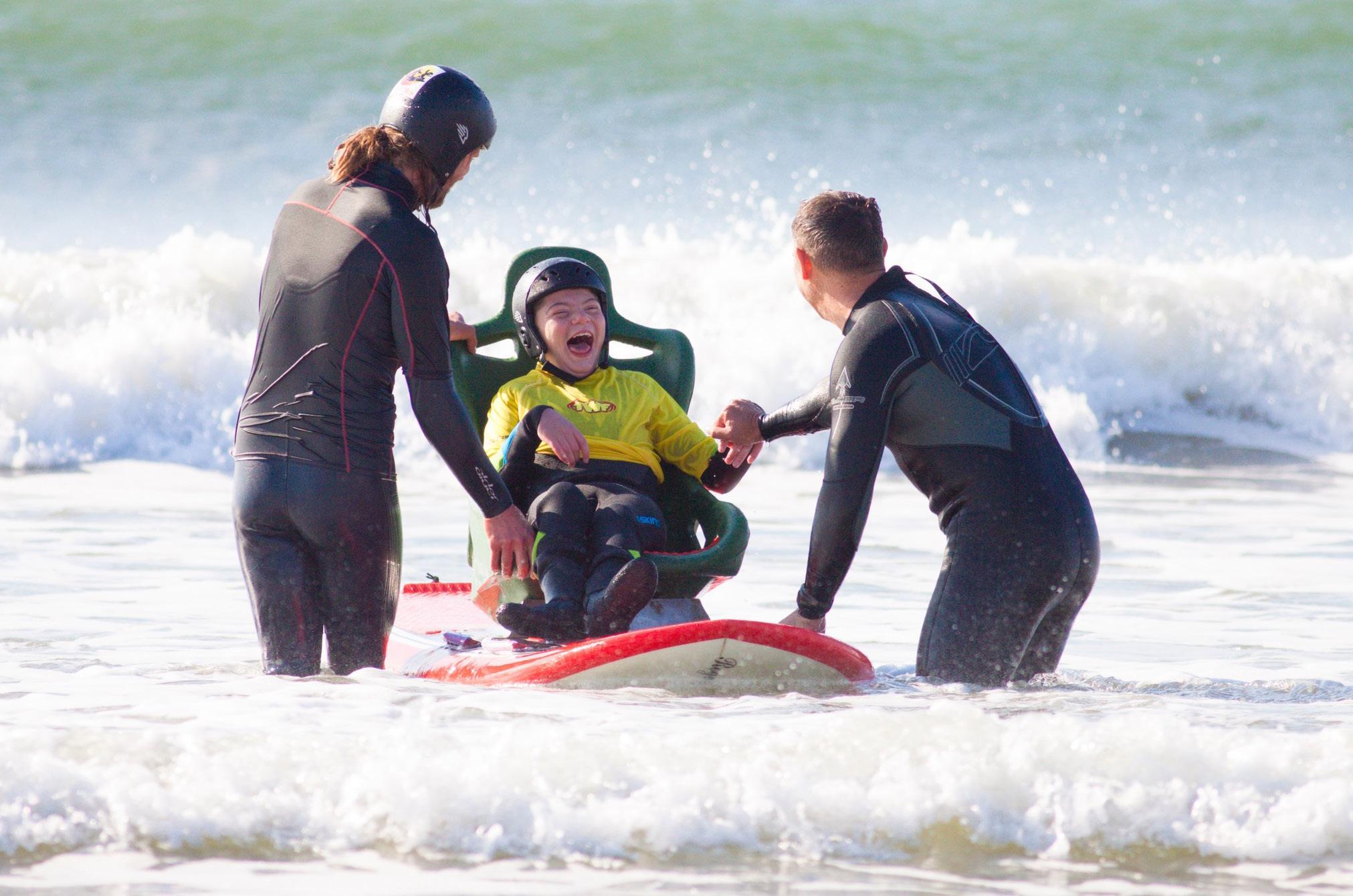
their best to try to meet that request. “We don’t like to say no, so we try to say yes to most things! We break it into a few different categories, and, we will always do a bit of research first, to check if something already exists. If it does, then we have to explain that even if it is expensive it will cost us three times the amount to try to reverse engineer it. Plus, it exists. That’s not what we’re here for. We’re here to solve problems with things that don’t exist.”
Another consideration is the risks that might be associated with the requested solution, although this would not necessarily immediately rule the request out, far
An adaptable surf board.
from it in fact. Ross is passionate in his belief that we all deserve to enjoy difficult challenges, explaining that “if it’s something that is potentially dangerous it doesn’t mean that we won’t do it, as long as the parents know that there’s a risk and we’ve done due diligence and thorough risk assessments.” He goes on to clarify that, “taking part in triathlons, or using surfboards and paddleboards can be dangerous for kids, there is an inherent danger in those activities, but that’s why they’re fun, and that’s why we do them. They’re a challenge, there’s a risk, but when you get it, right, it’s amazing, and you get that incredible buzz like
“They put two engineers and two product designers, one of which was me, in a room and essentially told us that when the phone rang we should answer it, and then work with the family on their request. And really, it just grew from there.”
everybody does from their sports and when it goes wrong, you learn from it and you adapt and you try not to do it again. So we don’t necessarily say no because of risks, because measured risks and contained risks are okay.”
If the request made is related to clinical needs, for example complex toileting issues, the team would have to direct the parents elsewhere as they do not have the appropriate clinical knowledge within the team. Occasionally they might have to cease work on a design. For example if, “having got halfway through, or if on completing a prototype, we just realise that actually, it’s just not working well enough. ” However, as Ross emphasises, this has happened only very, very rarely, and “in most instances, we are able to do something.”
Some of the bespoke products they have designed over the last twenty years which enable participation in both sport and play include a range of triathlon equipment to allow families to take part in triathlon events, running, swimming and cycling with their children alongside all the other participants. A tandem surfboard which allows children to experience the thrills of surfing, a large bouncer for children who love to bounce and have outgrown their traditional baby bouncers, scooters
to enable play, a sledge, as well as some one-off pieces of lightweight and user-friendly mobility equipment. Other products include a portable postural support seat, and a range of products to help learning and IT.
Typically, if a family approach the team with a request the finished product is provided to the family free of charge. However, it is worth noting that the actual cost for the design and manufacture of the individual prototype for a product will often range into the thousands. Ross is always working on ways to secure a continued income source for the centre, and one way in which he has done this is to work on the manufacturing process to allow Cerebra to
sell a number of their smaller, and most commonly requested products directly from their website, including the doodle desk and ruler.
Another, incredibly successful approaches was to allow one of his best prototypes to be further developed, manufactured and marketed by some of the market leaders in paediatric mobility supplies. James Leckey Design, along with its subsidiary Firefly, saw an early prototype of what has gone on to be the absolutely brilliant, and hugely popular GoTo Seat. “Because the original design idea was ours we have a contract with Leckey called a Licensing Agreement. This means that every time they sell a Goto Seat they pay
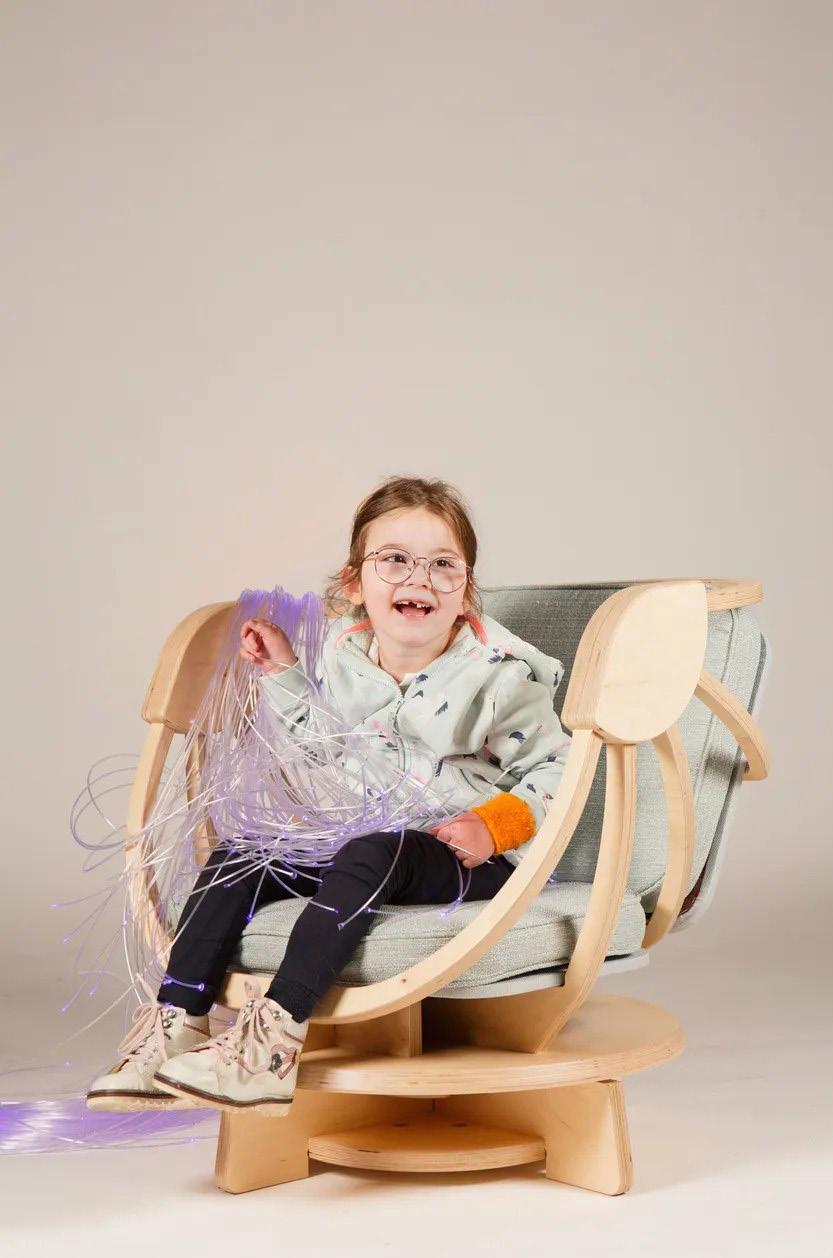 A sensory pod chair.
A sensory pod chair.
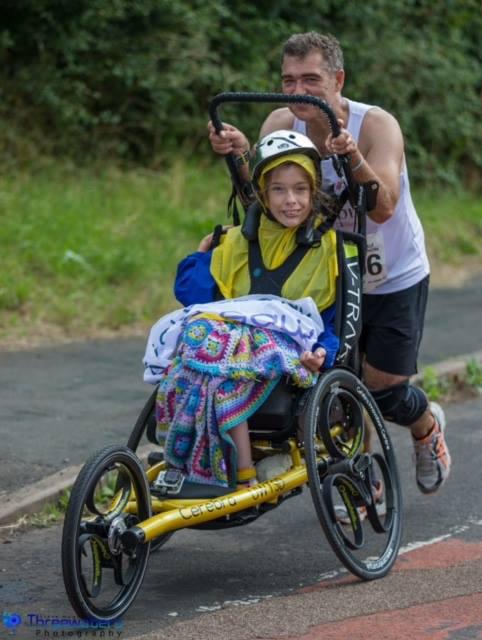

Cerebra a royalty fee to support the work we do, and enable us to help more children and to develop even more innovative products.” To date, well over 30,000 seats have been sold, in addition many supermarket chains have incorporated the seat into their branded shopping trollies, enabling parents to shop more easily with their child. Another fabulous product which Firefly also developed is the easily recognisable, bright orange Scooot, a child friendly mobility aid which gives children the ‘freedom to explore their home, play with friends, chase big brothers and race little sisters without any help.’
Another of the products which the CIC team worked on, and which has become well known in the UK is the equipment used by the team at Surfability UK. The charity was featured in an episode of DIY SOS, when the team undertook one of their ‘big builds’ for the BBCs Children in Need, building the first purpose built, fully adaptive surf centre in the world. Surfability use adapted surfing equipment to make surfing accessible for people with disabilities and learning difficulties. “It’s brilliant that it (adaptive surfing)
Above: Adaptable equipment being used in a Triathlon. Photographs courtesy of The Cerebra Innovation Centre (CIC)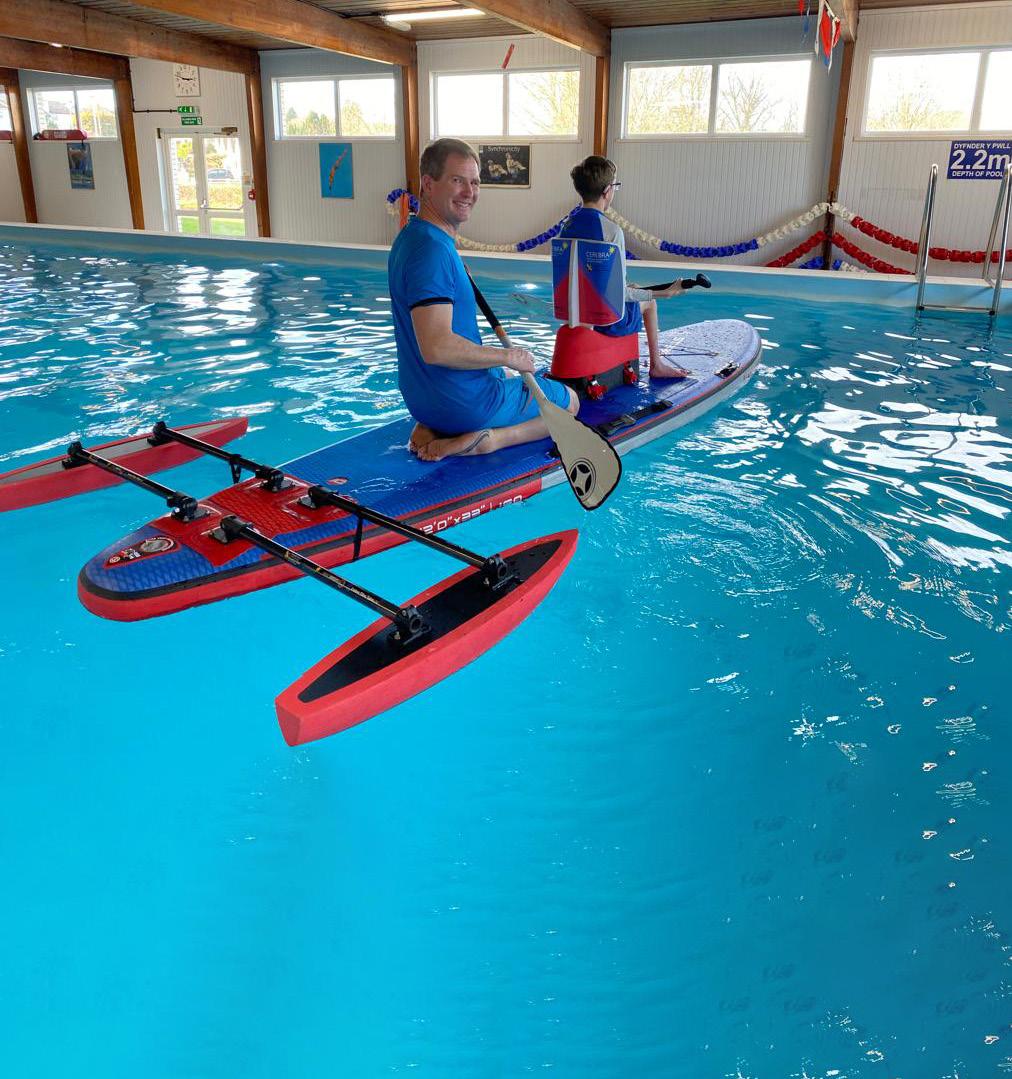
is something that is much more widely known about now. I think the more it is known about, the more it becomes the norm that actually, just because you have a disability, it doesn’t mean you shouldn’t want to access these sports.”
When asked if these products are the ones of which he is most proud Ross answers in two parts. “My favourite project I think has been the triathlon equipment we designed for a girl called Poppy. Because the benefit was more than Poppy, it was more than just her dad, it was the whole community. Everybody that saw it that
day, whether they were taking part or watching the triathlon, you could just see that there was this little spark of inspiration, of thinking ‘crikey, they’re out here doing that, I’m going to get off the sofa and I’m going to do something.’ And the smiles that the surfboards and the paddleboards give to families, and the memories that have been made mean that they are probably my favourite innovation”
The guiding principle behind the work that they do is to listen to families, to work with them, and to carry out the research to design and innovate new
product and equipment. When that helps to make life easier, to enable and support a child to access and to explore their world then that is what makes Ross and his team the most proud. “So yes the GoTo Seat and the Scooot are I think the proudest, because of the amount of help that they have given to so many children. They are definitely my proudest honour.”
Find out more Visit Cerebra’s website
Learn more about The Cerebra Innovation Centre here
Paddle board testing. Photograph courtesy of The Cerebra Innovation Centre (CIC)Embracing Wholeness:
In conversation with Rachel Barker, nature-based Health Facilitator and Yogi
Amidst the serene landscape of the Peak District National Park nestles a sanctuary where the transformative power of yoga thrives under the guidance of Rachel, a dedicated yogi whose journey into the spiritual discipline began in the bustling city of Leeds. Her narrative, rich with experience and wisdom, offers a vivid testament to the life-altering potential of yoga.
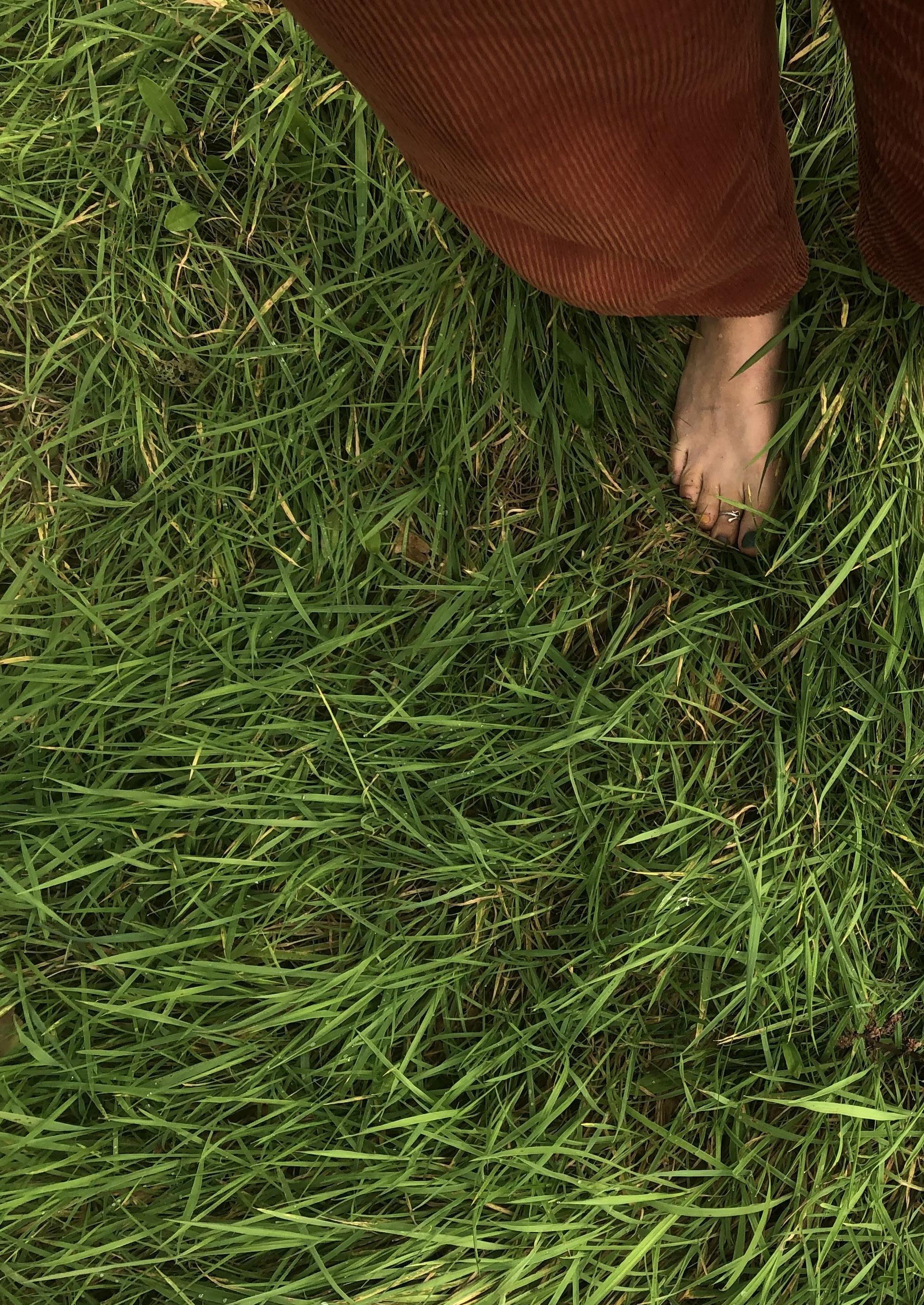
“I was intrigued,” Rachel recalls about her initial encounter with yoga, prompted by a friend’s enthusiasm. The curiosity soon morphed into a profound engagement when she relocated to Stockport, discovering an Iyengar yoga studio down her street. “I loved that you could go to this practice and someone was guiding me to come back into understanding how my body works, how my body moves,” she explains.
The true depth of yoga, for Rachel, lies beyond the physical postures. “I think we live in a world where we are in our mind quite a lot...something like 90-95% of our thoughts are repetitive.” Yoga is about the integration of mind, body, breath and spirit, facilitating a unique harmony that fosters peace and resilience against the relentless pace of modern life. “It’s such a beautiful marrying of the mind and the body and exploring our relationship with our breath and our life force,” she shares. This philosophy is particularly resonant in her teachings, which emphasise accessibility and community, ensuring that yoga’s benefits extend to all, regardless of physical limitations or experience. “I’ve been to so many practices
where they ask you to do things and they’re just not right for my body.” The ancient practice of yoga should be about being in tune with your body, helping you feel calmer and more alive. “I want to bring these practices, that support me to live more at ease and feel more well in my life, to people who might think ‘yoga is not for me’.”
Rachel didn’t originally plan to become a teacher but, after 18 months training, she felt that “practicing yoga had changed my life in some beautiful ways.” Her path was influenced significantly by her mentor in Manchester, who encouraged a more integrated approach to training. “He suggested I did an integrated
training where I still lived my life here,” she mentions, underscoring the importance of incorporating yoga into day-to-day life, rather than isolating it as a retreat from reality.
The therapeutic aspect of Rachel’s practices extends to chair yoga classes, designed to be even more accessible and for people with reduced mobility. “For her to come down onto the ground and come back up to standing is difficult,” she explains about one of her students, emphasizing the adaptability of yoga to meet individual needs without compromising the essence of the practice. “I don’t ever want anyone to come to my classes and feel they can’t take part. I want those people to feel like ‘I’m strong in my body,

I’m safe in my body and I’m able to do these practices and benefit from them.’”
Beyond the mat, Rachel works as a Nature-based Health Facilitator, through her company Rise and Wild. The company ethos is deeply embedded in the philosophy that human beings are an integral part of nature, often forgotten in the
“I don’t ever want anyone to come to my classes and feel they can’t take part.”
hustle of modern life. She supports individuals through various programs and retreat days that emphasise experiential learning about nature, not through identification or naming of species, but by recognising our intrinsic connection to the outdoors.
She articulates, “It’s not about coming outside and learning about what birds are what birds, or what trees are what trees... It’s about ultimately learning and remembering that we are nature.” Her work involves guiding
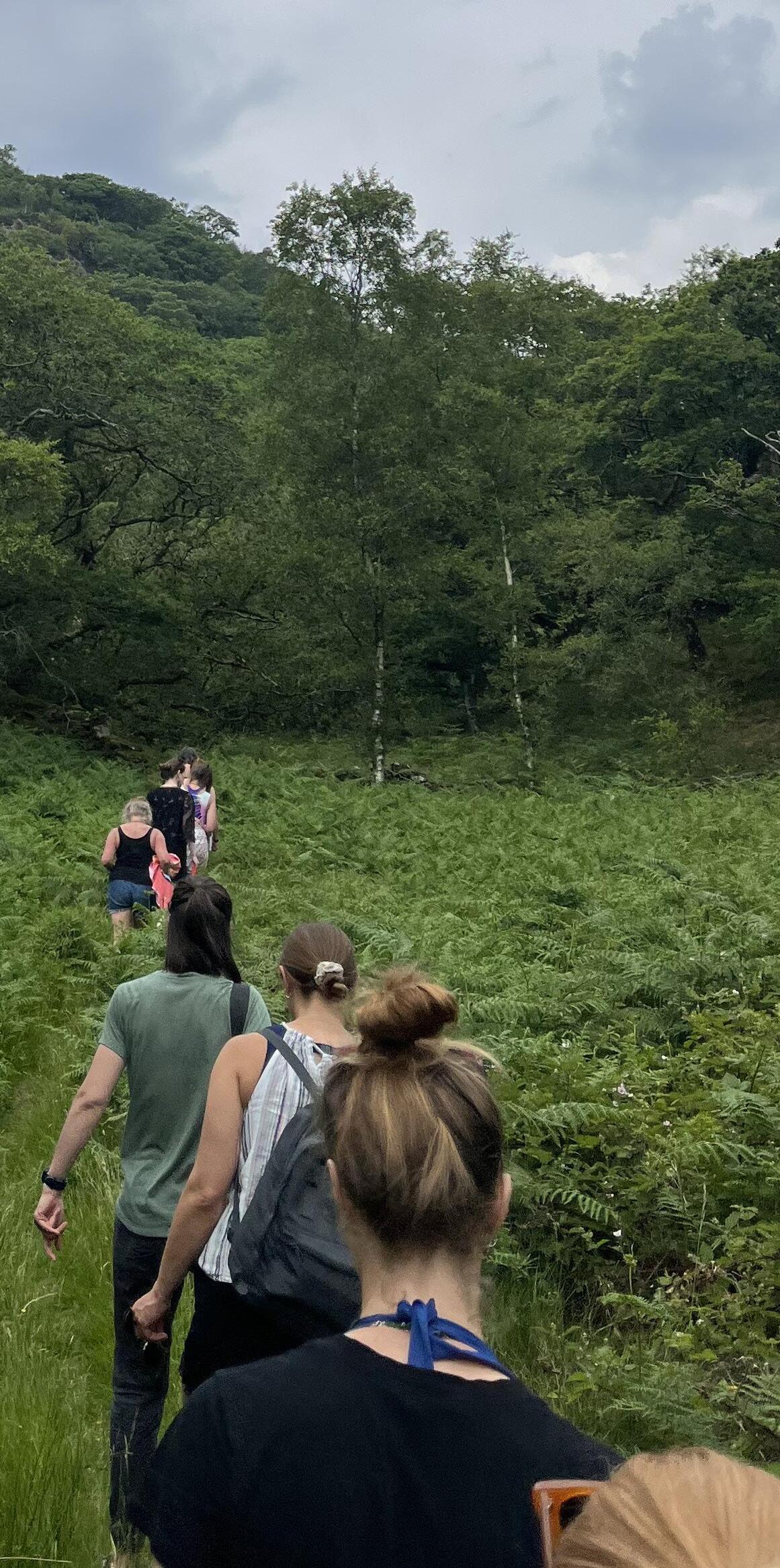
“I think we live in a world where we are in our mind quite a lot...something like 90-95% of our thoughts are repetitive.”
people to acknowledge that spending time in nature isn’t just a leisure activity but a vital part of well-being, offering significant psychological and physical benefits. Rachel’s programs often attract individuals who may be housebound or have limited access to natural spaces, helping them to find ways to connect with the natural world from their own living spaces.
Moreover, Rachel’s approach is therapeutic and rooted in accessibility, ensuring that everyone, regardless of physical ability or health status, can participate and benefit from her sessions. She discusses the ‘green care’ model, which is an addition to traditional health care, involving collaborations with conservation charities to foster this deep, restorative connection with nature. Her sessions are described as healing journeys, helping participants feel they are a part of something larger than themselves, reducing feelings of isolation, and
enhancing their overall sense of community and belonging. Through her work Rachel not only facilitates physical activities in nature, but also instils a deep respect and responsibility towards environmental conservation and personal health.
There is growing recognition of accessible practices and green care programs. These initiatives, Rachel notes, are crucial in fostering a more inclusive and health-oriented society. They are about redefining wellness and accessibility, and could inspire any reader seeking to embark on their own journey of self-discovery and healing through yoga and reconnecting with nature.

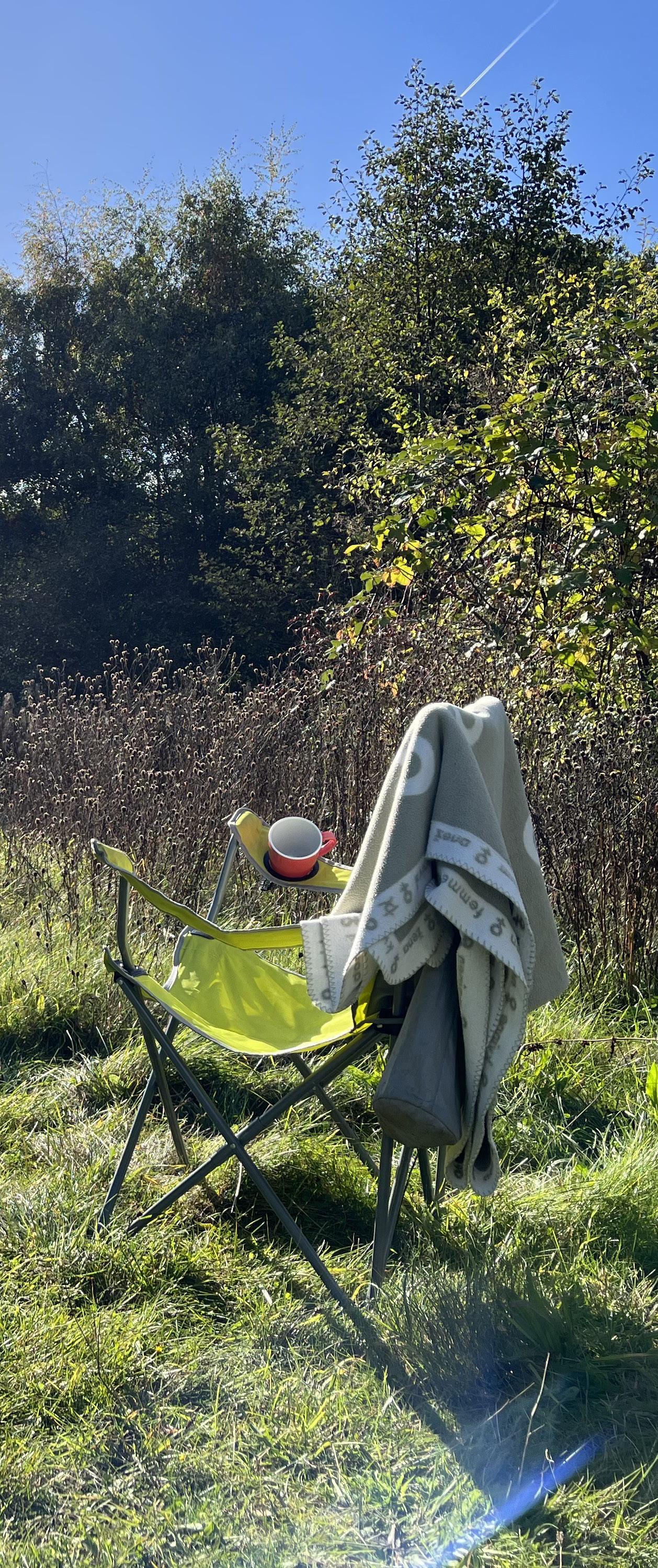
Rise and Wild: Yoga, Nature and Wellbeing
• Yoga teacher guiding inclusive classes, workshops and retreats
• Accredited Nature and Health facilitator, creating experiences for people to reconnect with nature and nurture their wellbeing
• NatureWell trainer & community-focused practitioner
Learn more
SMA Europe’s 4th Scientific International Congress on Spinal Muscular Atrophy
In March 2024, SMA Europe hosted its 4th Scientific International Congress on Spinal Muscular Atrophy (SMA) in Ghent, Belgium, which brought together attendees from 6 continents. The congress served as a beacon of hope and unity for the global SMA community, its significance reaching far beyond geographical boundaries and touching the lives of SMA patients, families, clinicians, researchers, advocates and other stakeholders worldwide. The congress provided a unique opportunity for the SMA community to come together, share knowledge and experiences, foster collaboration, and advance efforts to improve the lives of those living with SMA.
We spoke with three dedicated SMA advocates who attended the 4th Scientific International Congress on SMA, as well as the inaugural Global SMAdvocacy event about both their personal SMA journeys and their hopes for the upcoming events. Although their lives might be different they each share a common goal - to improve awareness, access, care and research for SMA.
Yasemin is Vice President of SMA Europe. “What is special about SMA Europe is that we’re all extremely passionate patient advocates, we all come from different countries. Everyone is extremely motivated to fight for the same cause, and they all bring their expertise and

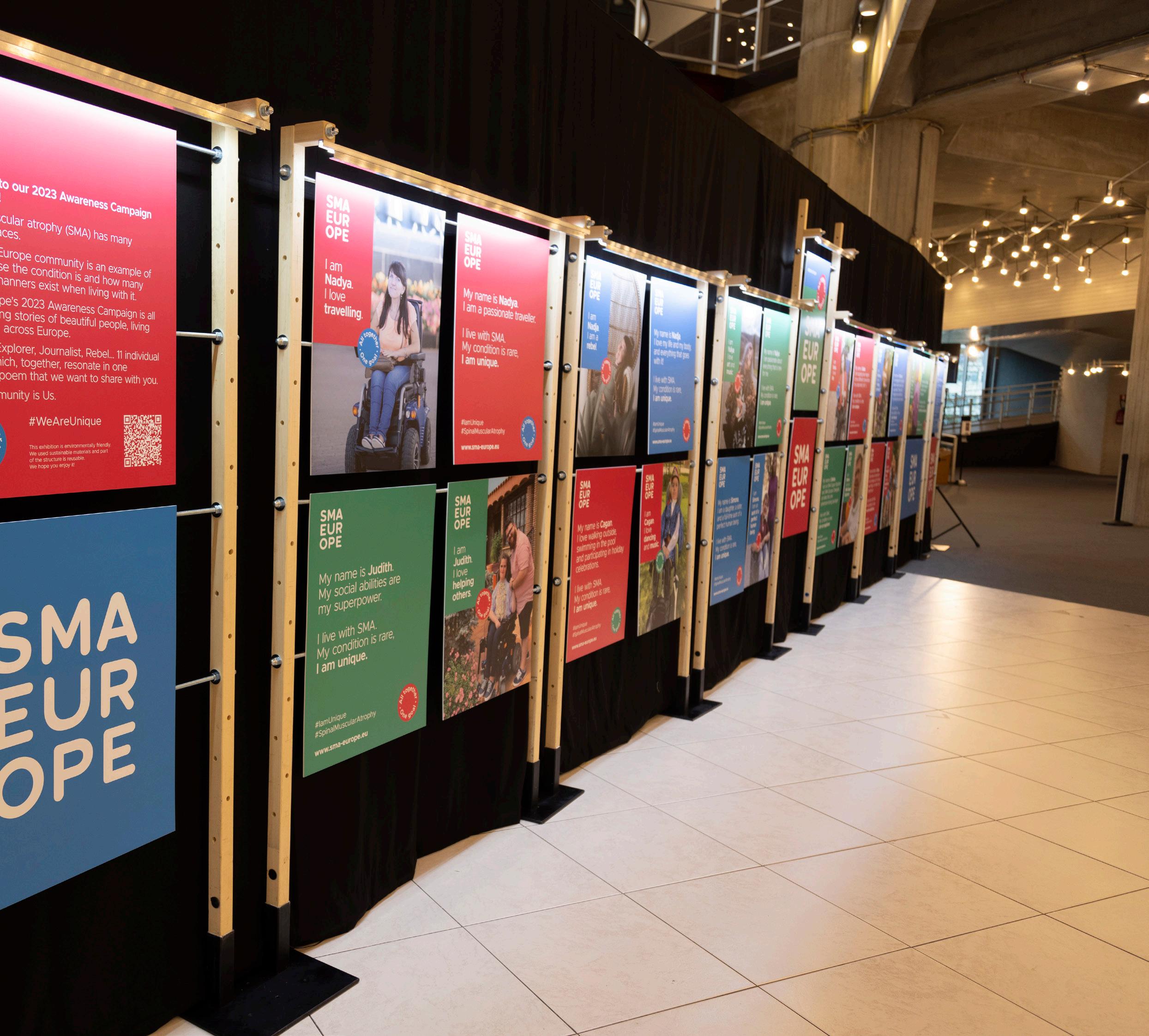
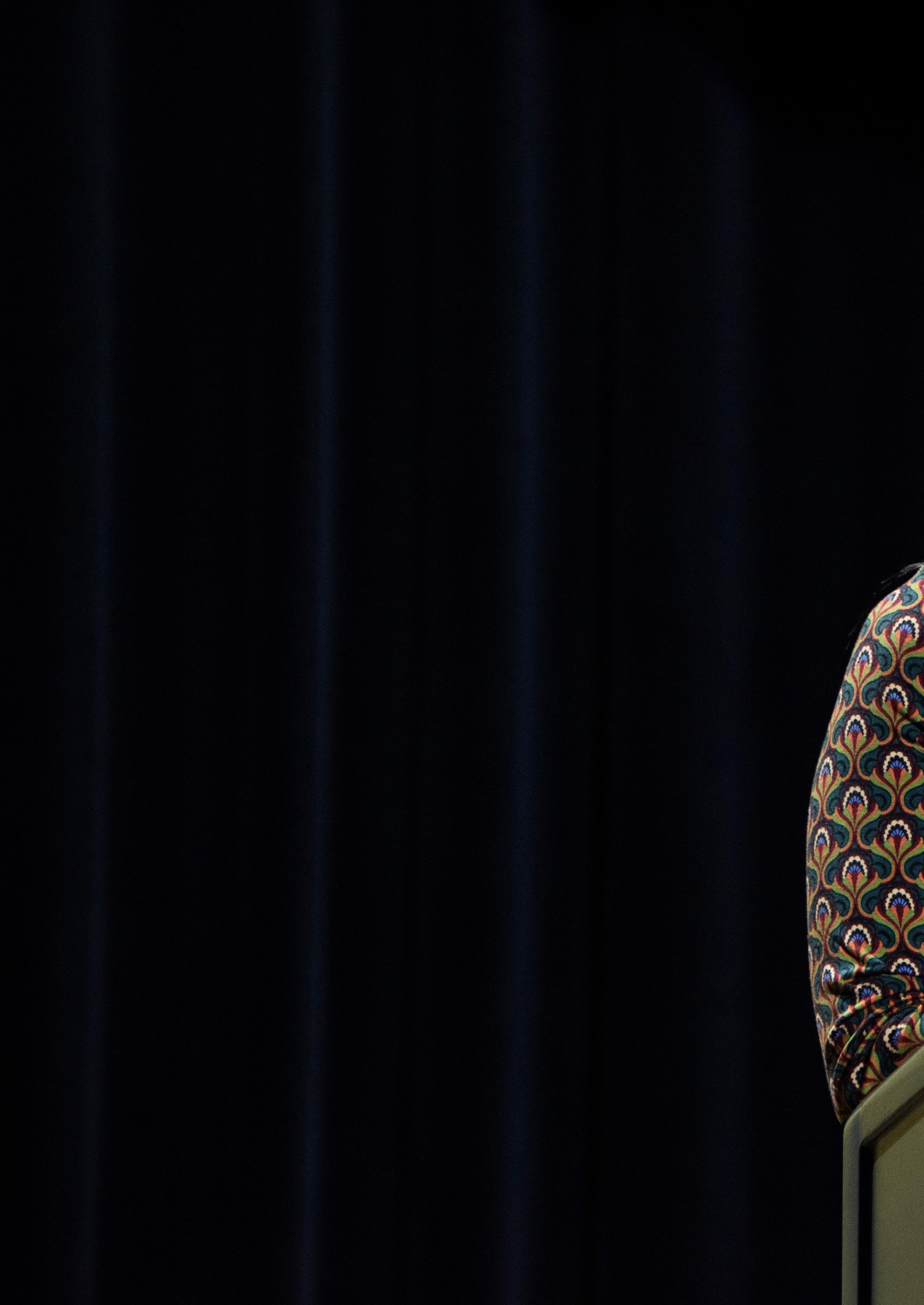
their own experiences. This makes us unique, we have this wealth of knowledge within our organisation. We are an extremely strong organisation. To me, SMA Europe means empowerment. It means bringing people together from all over the world to elevate the patient’s voice. I think we are going to achieve great things for the SMA community.”
Yasemin’s SMA journey began back when her son was diagnosed nine years ago, when he was just one month old, and they had been seen at the hospital for some tests. A neurologist with over thirty years of experience expressed ‘concern that their son had SMA type 1’ but that she was still waiting for the results to come back. “The first thing that I asked the neurologist was, are there any clinical trials for him? Is there anything that we can try? Maybe try a new treatment or something?”
The concern for the neurologist was that Yasemin’s son was only one month old and they didn’t expect him to live much longer than six months. The young family swung between the fear of losing him and the hope that there would be a clinical trial to join. “It was a very turbulent time. Weeks passed before we got the confirmation that he had SMA, but that he could start a trial as well.”
The clinical trial was an important step for them, and the improvements to his health had a huge
impact on their son. “For us, the trial meant the difference between life and death. I think without that my son would not be alive today. He was doing extremely well when on the trial and the treatment he was receiving was a true miracle. He was almost sitting up by himself which for a type 1 child is rare.”
Just before his fourth birthday he was hospitalised, he needed intensive care and was intubated. It was a difficult time for the family and Yasemin had to battle to get the doctors to listen. “That was the time when I thought I need to be a patient advocate, his treating doctors had given up on him. They decided to move him to a different hospital where they found a pulmonary doctor who listened to them and agreed to try to help.” Eventually, they were able to take him home. “Our son is full of life. The doctors who did not want to give my son the tracheostomy told us that he would never be able to speak, but he has proven the opposite; he is literally talking all day. I think he is a very happy child, he knows his limits.”
This period was a turning point for Yasemin, and she knew that she needed to challenge the way people view disability and the clinical way the quality of life is viewed. “There is so much that SMA patients can do, some are living full lives. I met someone online, similar to my son, who also couldn’t move a finger. He had a tracheostomy and a
ventilator, but he did these incredible road trips with his personal assistants to places like Iran, Kazakhstan, Turkmenistan, and Russia. The things he did were so amazing, and they were things that I, with my functioning body, did not dare to do. This empowered me to fight for our son.”
“I don’t know what it is like to live with SMA. If someone tells me that an individuals quality of life is going to be low with a ventilator, who am I to say any different?
But, if a person who is living that life tells me that life is beautiful, meaningful and worth it, then they are the only ones who can tell us what is good or not.”
Today the importance of having patient organisations like SMA Europe cannot be underestimated in terms of peer support, advocacy and having somewhere to turn for patients, families and supporters.
“It’s only through patient organisations that
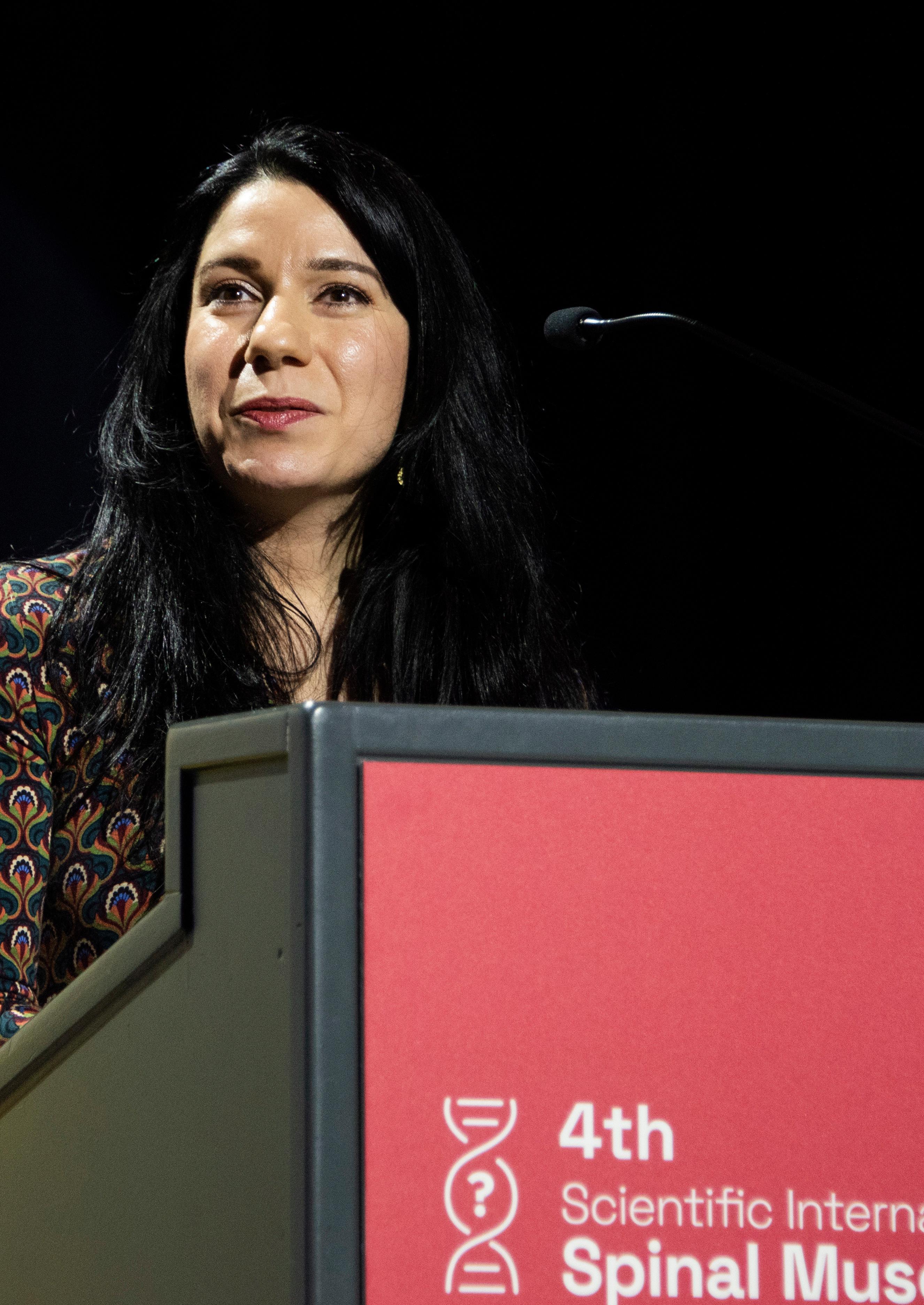

we can collectively elevate the patient’s voice. Once we all come together, that’s how we grow strong and how we can really make a change.”
At the inaugural Global SMAdvocacy event everyone will have a voice, and the hope for Yasmin is that collectively they can achieve much together.
“It’s going to be the first time that so many patient advocates from all over the world are going to meet. We know that there are certain things that we can only achieve together, and I hope that we will become closer as an SMA family. That collectively we can become extra motivated to join forces, working together to reach our goals. We know things work differently in different countries, but in the end, by working together, I think we can reach these goals.”
“The treatments that we have today have completely changed the course of the disease for the people who can access them. SMA does not have to be a death sentence, it does not have to be a progressive disease. While we are extremely lucky that we have these treatments, it does not mean that we are there yet. We need research. It’s important for us that we keep researchers in the field of SMA. It’s also why we are organising this 4th Scientific International Congress on SMA to bring the researchers, clinicians, pharmaceutical companies and the different stakeholders together.
Because I believe that it is only by coming together, by talking to each other face to face, by brainstorming together, by being creative together, that it is only then that we will be able to progress.”
Progress is something that Alpana, a founder and director of patient advocacy at the brilliant Cure SMA Foundation of India, wants for her son, and for all the children in India where healthcare isn’t as accessible for many.
“My eleven-year-old son was diagnosed with SMA type 2. We had decided to get some tests for him as he was missing milestones. We got the SMA suggestion from one of my brotherin-law’s friends who is a neurologist. It came back as positive and our world came crashing down as a result. My family has a medical background and knew the diagnosis and prognosis of this disease, they told me I needed to be strong for my child. For almost a year, I used to cry and drench my pillows with tears, I went through a very dark phase.”
The support of her family made the difference to Alpana and with the encouragement of her brother she attended her very first SMA Conference in Washington DC. This was a real turning point for her. “Seeing individuals with SMA doing well, with a better quality of life, was a real contrast to what I knew. It was the hope I got then that was the most important thing.”
Inspired, she returned home and set up a Facebook page, hoping to connect with other people from her own country. From those first tentative steps on Facebook ten years ago she, along with other mothers, has helped to build Cure SMA Foundation of India into a vibrant organisation, that has achieved a huge amount for the SMA community nationally. For Alpana attending both the 4th Scientific International Congress on SMA, as well as the inaugural Global SMAdvocacy event, offers many benefits; including the unique opportunity to be in a room full of like-minded people to brainstorm and talk. “This is truly a global advocacy event covering so much. Reimbursement for treatment is one topic, for example, where we can learn from seeing how other low and middleincome countries have achieved that. We can take this knowledge back to India and it can have a huge impact for us.”
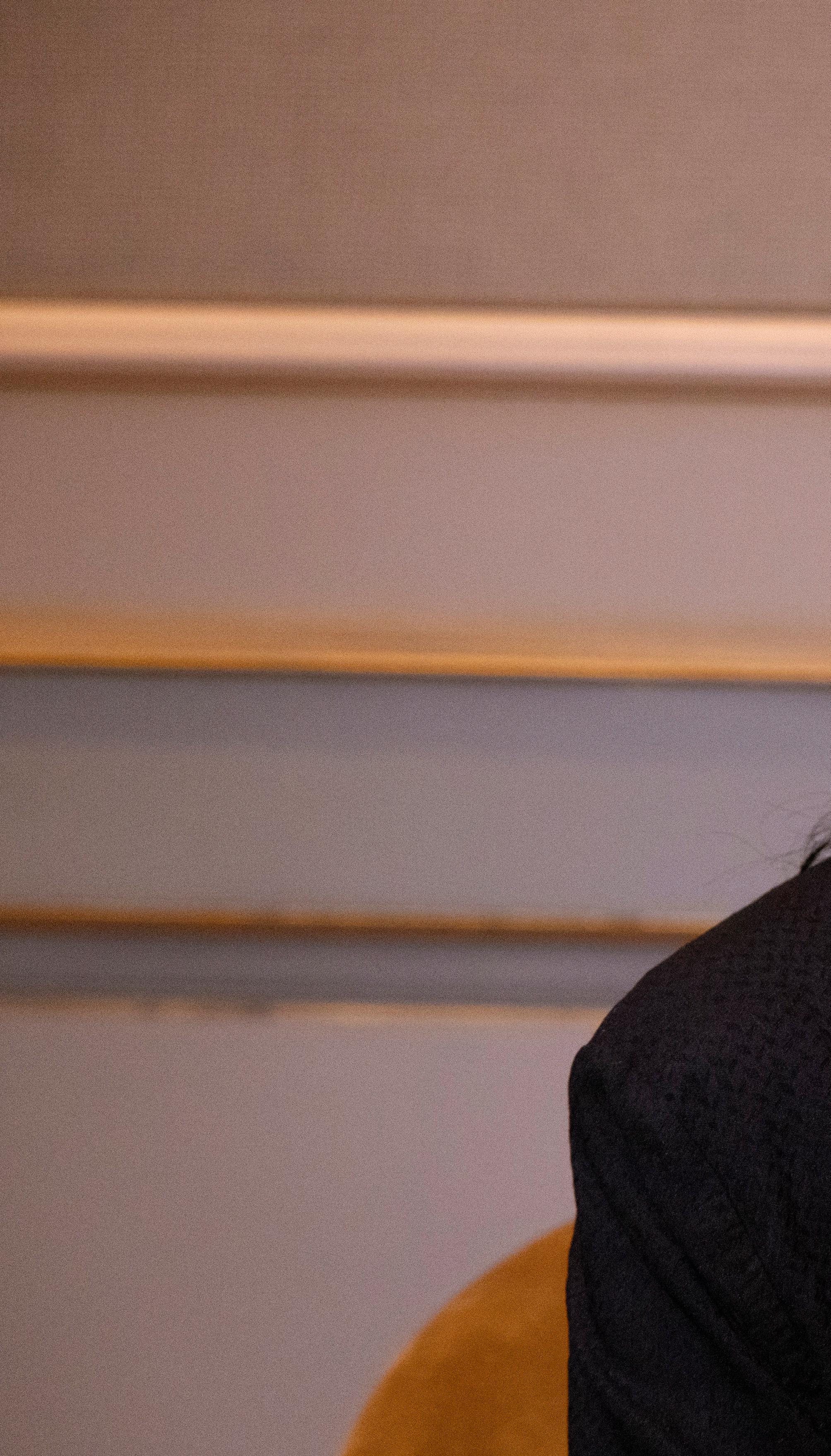
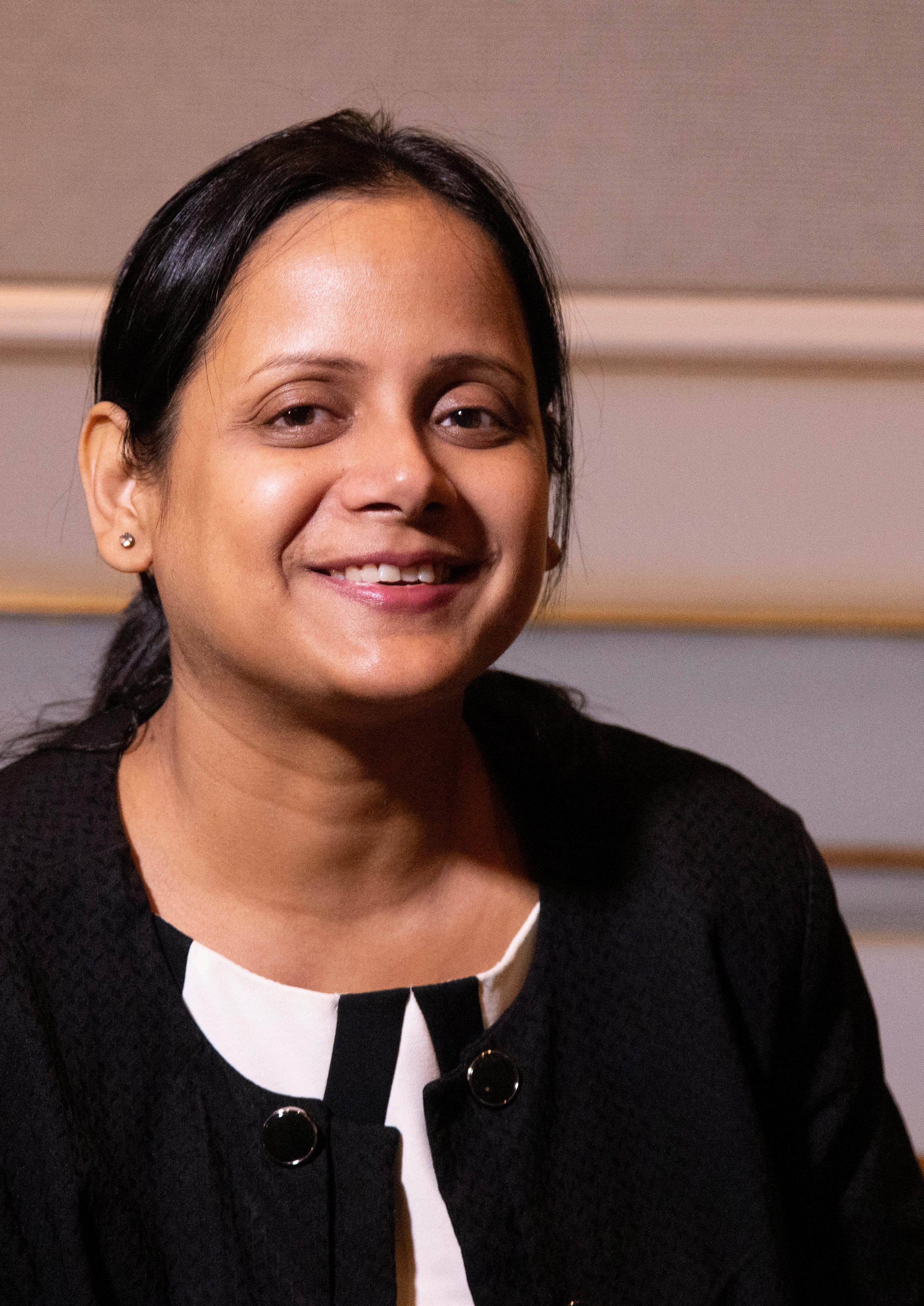

Without events like the regular Scientific International Congresses on SMA, things may have been different for Alpana “I would not be here talking about all these things had the SMA community not been there. It is the community that has come together and given all of us strength. There’s hope that things can be done. When I see an individual with SMA who’s a lawyer, or an engineer, I know there is hope for my son to do something similar.”
Moumita, another founder of Cure SMA Foundation of India, was excited to attend the congress alongside Alpana. Her experiences caring for her thirteenyear-old daughter with SMA brought the need for a community into her life also. “Like (some) other children with SMA, she initially met her milestones, and was crawling until she had a fever, after which she stopped crawling. Eventually, after visiting different health care centres

someone mentioned that it may be a genetic condition. At that time in India genetic tests were not very common. We went to another city for the genetic testing and we got the report with the diagnosis, and the information that SMA was not curable, and that she may not live long.”
“The neurologist told me that she would live for two or three years. I felt numb. My only focus was my daughter, her quality of life and what I, as a mother, could do. I was not ready to give up. I thought ‘she may not live long but I will do my best to give her the life that a child should get.’” This determination has driven Moumita onwards, fighting for awareness, inclusivity and more treatments for SMA.
“I was introduced to a doctor who was trained in the UK, at Great Ormand Street Hospital, one of the biggest centres for neuromuscular disorders. She gave me hope, she taught me that it’s not important how long she lives for, it is important what quality of life she’s living.” The communication between doctors in India and the UK helped Moumita and her family immeasurably. “Slowly our community was created, and, after meeting Alpana and the others on social media, I felt like I was not alone. I had someone ask questions about our child. That is the beauty of a community, that we have someone to guide us through.”
Today her daughter is doing well, and her family have helped build her confidence and zest for life. “She is very confident, very lively and she has a lot of hope. She wants to study biology, she wants to be a class teacher, she has high hopes of living fully and we have the hope to help her to achieve her hopes and dreams.”
There’s still much progress to be made in India, but the national SMA community has achieved a great deal already. “Initially we had no treatment for this very progressive condition for our daughter, but thankfully we got free access to treatment when she was eleven years old. However it’s temporary as we don’t know if we will get reimbursement, so access could stop. Treatment access is very important for the stability of the condition.”
“Accessibility is also a barrier. Awareness has increased, but we are a developing country with a huge population and so we have a lot of financial constraints. The Government is trying to make things more accessible, and we’re being vocal about improvements for our children, so I believe things will move fast.”
For Moumita, the inaugural Global SMAdvocacy event is one of community and mutual interests. It is so important for advocacy that global ideas, technologies, treatments and research are shared to help provide better outcomes worldwide for SMA patients.
“Ten years back the concept of advocacy was almost not there. But since we started and had exposure to other international organisations, we learned the importance of advocacy in terms of improvement of infrastructure, access to treatment and policy changes. When we meet people from different countries, from different political, and economic situations, we get ideas about how to advocate in our own countries for faster accessibility and availability of treatment.”
“India is more in line with the European medical protocols, so when we take back ideas from Europe to our country it’s more acceptable to the medical community. The medical community then has the strength to advocate to the policymakers. When we started the organisation, there was nothing for the SMA community in India, and today we have eight to nine centres that SMA patients can access. We have been able to influence the policymakers so that at least one treatment is approved in India and they’re focusing on research, which is a big achievement.”
The inaugural Global SMAdvocacy event is aimed at being a platform for the exchange of knowledge and ideas, fostering collaboration and innovation in the pursuit of a cure for SMA. Bringing people together to create a unique environment of shared understanding and common purpose, it is truly a testament to the power
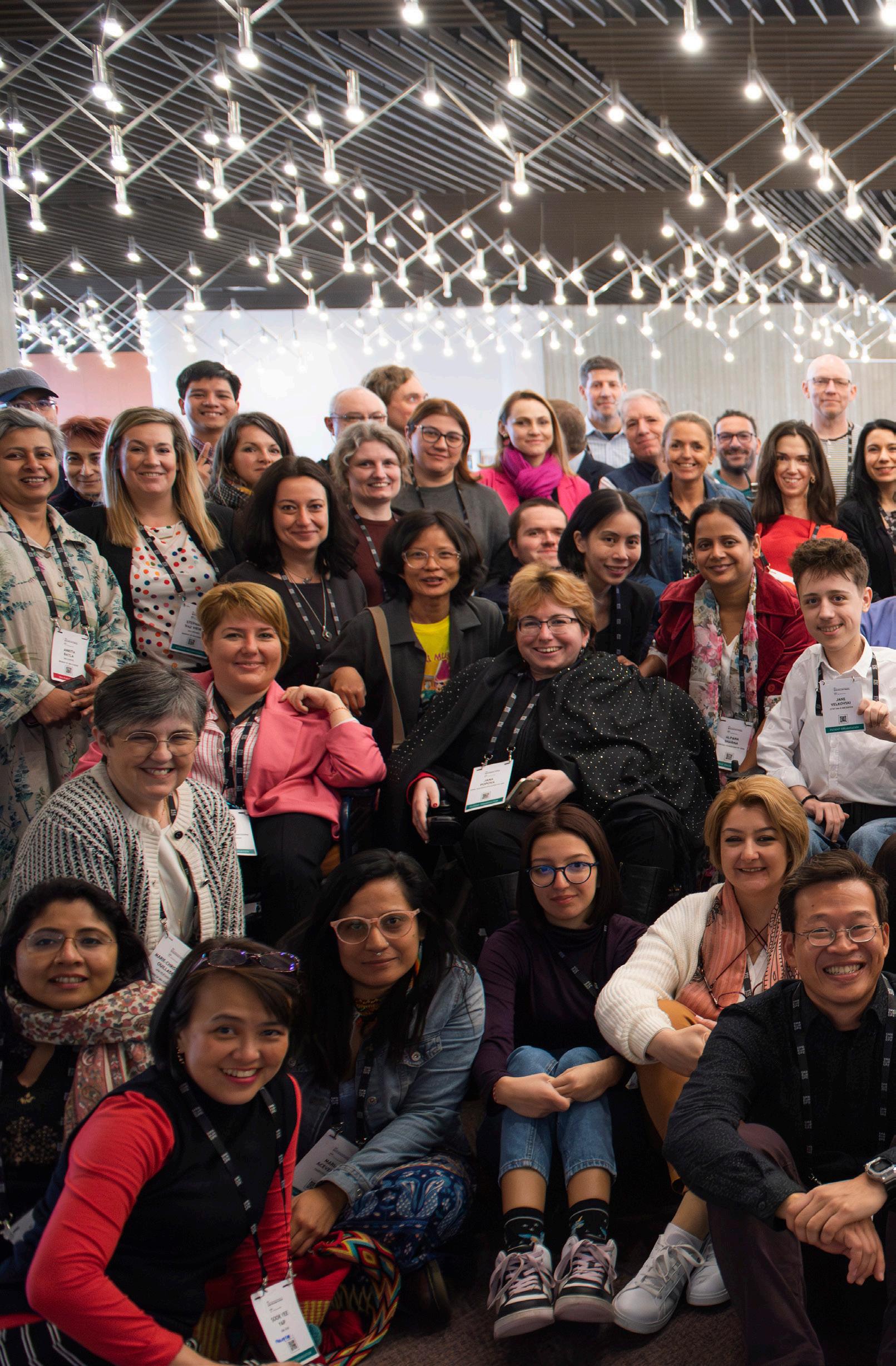
of collective action. Despite the diverse backgrounds and circumstances of the participants, they are united in their fight against SMA. They are not just a community; they are a family. Each member, whether a patient, a caregiver, or a supporter, contributes to the strength and resilience of this family.
SMA Europe’s 4th Scientific Congress on SMA too serves as a symbol of hope, unity, and determination. It embodies the positivity and common goals of the global SMA family, highlighting the power of collaboration in the fight against SMA. It is a reminder that together, they are stronger, and together, they can make a difference.
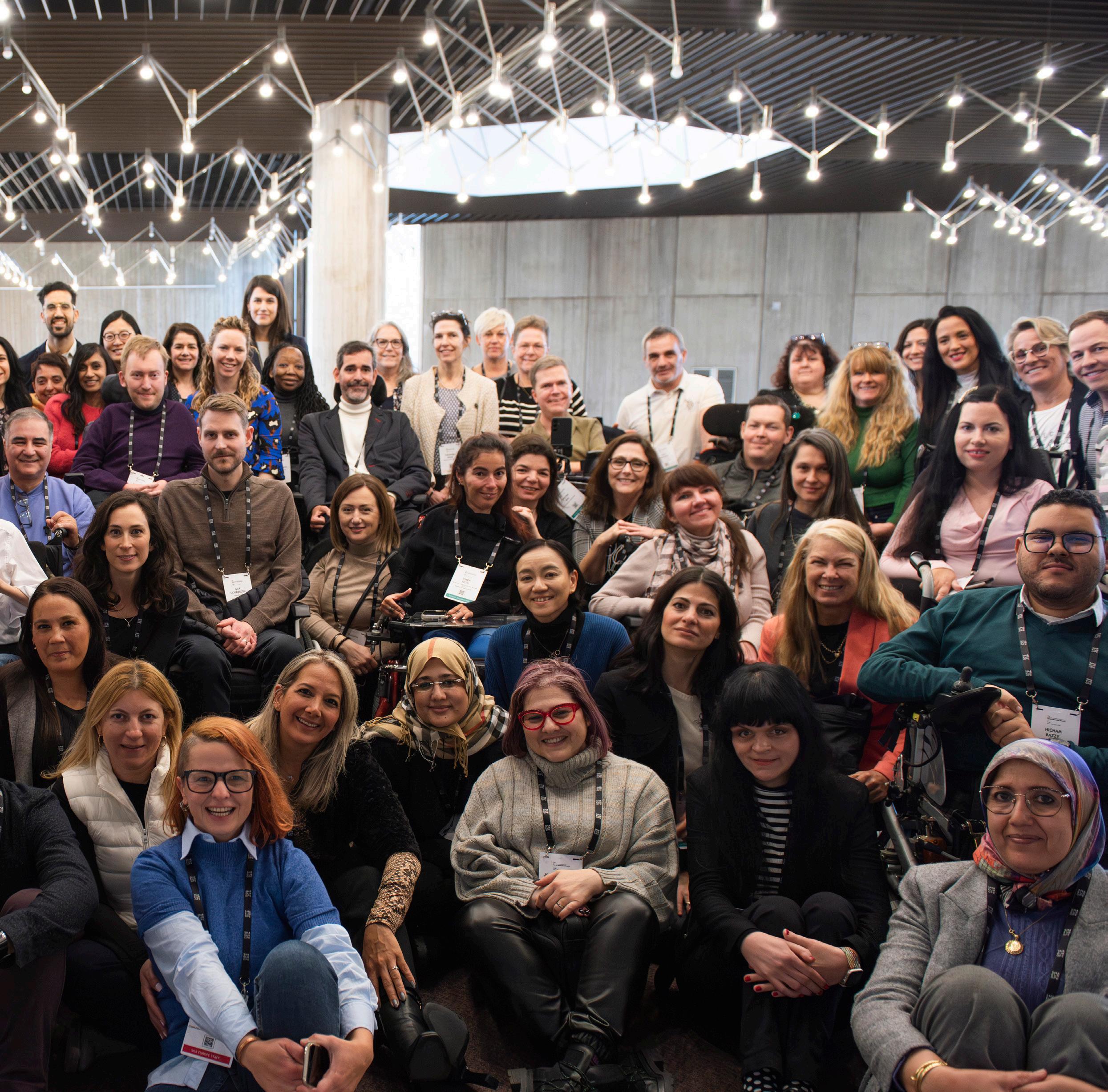
SMA is a rare genetic and progressive neuromuscular condition occurring in approximately 1 in 6,000 to 10,000 live births.
Characterised by degeneration of nerve cells in the spinal cord (motoneurons), SMA leads to progressive muscle weakness and atrophy. SMA has many About SMA
faces. SMA is characterised by a wide spectrum of how severely children and adults are affected. The symptoms vary from person to person. SMA may affect daily activities such as breathing, eating, hugging, grabbing, nodding, sitting and walking.
* Information based on the ‘About SMA’ section of the SMA Europe website.
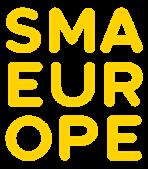
When we think of summer days we often think of long, lazy and warm afternoons, of the half remembered days of our childhoods, but those days can pass by all too soon. Sometimes having a few exciting plans to look forward to can help you and your loved ones make the most of the good weather. Gathered here are a few ideas for accessible day trips in all areas of the UK. We hope they inspire you to try something new!
The Emerald Isle brims with rural beauty; if you’re wanting to get even more up close and personal with nature this summer, Gosford Forest Park is an ideal hotspot. With a variety of accessible pathways, sensory gardens, and wheelchair friendly nature trails, it’s guaranteed to please any outdoorsy folk.
Learn more
If you know a young person who’s keen on adventuring, Belfast Activity Centre is another great option. This centre offers training and support for young people with disabilities through its engaging and unique adventure learning activities.
Learn more
If the arts are more your focus, why not take a trip into space? Armagh’s Planetarium offers something for every astronomy enthusiast, the building is fully accessible, and the centre houses both sensory and immersive suites. As a bonus, its theatre shows engaging films both in a ‘chilled’ (quiet and low volume) format and a ‘relaxed’ (talking and moving allowed) format.
Learn more
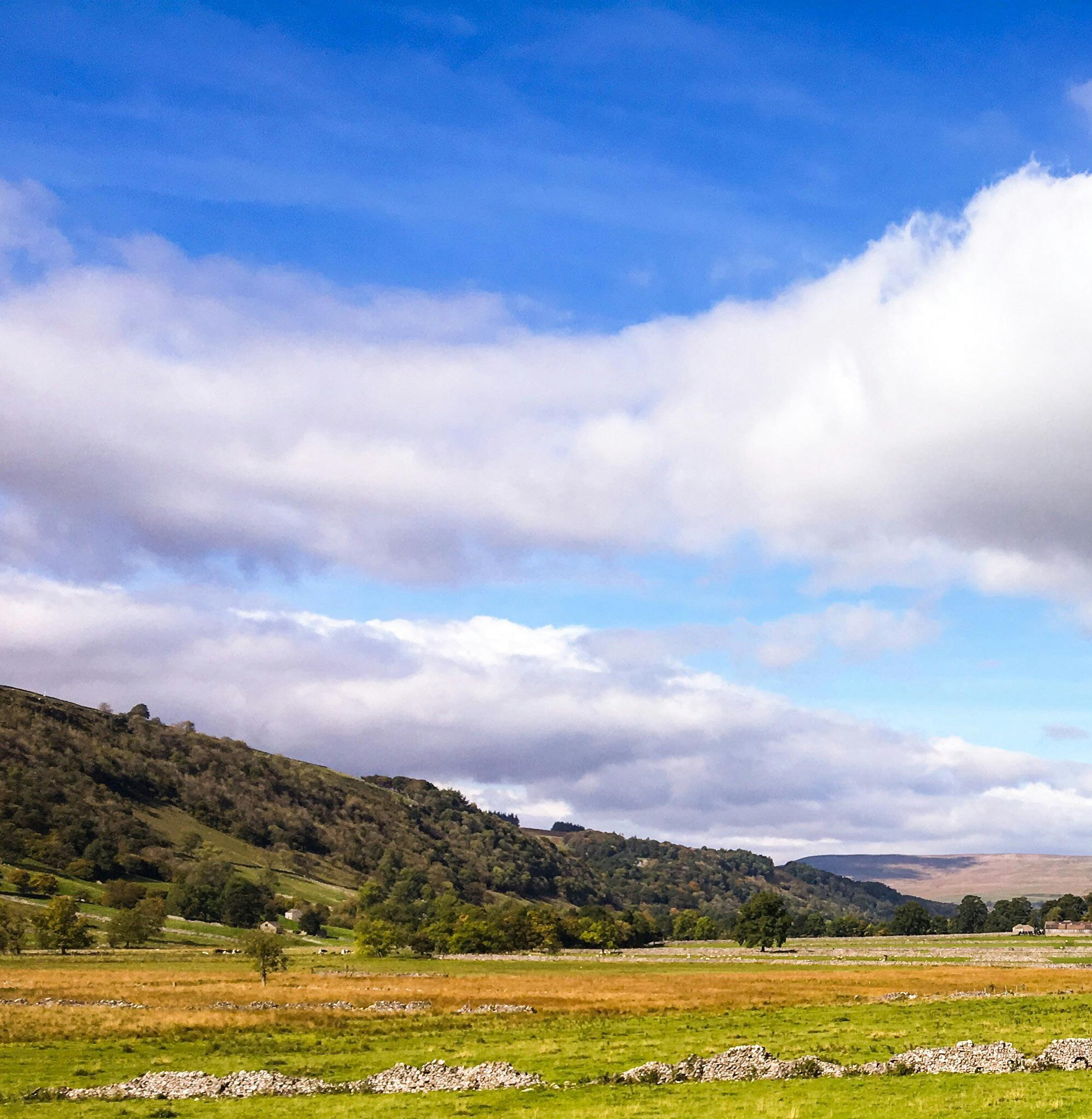
If you seek a traditional museum experience, Belfast’s W5 aims to inspire curious minds with its science and natural world exhibitions. With quiet rooms, full building accessibility, sensory and immersive suites, and the provision of JAM cards, it promises to be both educational and inclusive.
Learn more
Beaches in England are a mixed bag, even more so if you’re looking for an area that’s inclusive. Bournemouth though, prides itself on being an ideal destination. The Land Train service, which is wheelchair accessible and assistant dog friendly, and the Cliff Lift, both operate between 29th March and 29th September and offer scenic rides along stunning coastal hotspots. Beach wheelchairs are also widely accessible in the Bournemouth area!
Learn more
If the beach is not for you, why not try looking for a Miles Without Stiles walk? The Miles Without Stiles initiative was created to provide walking routes for varying levels of ability and access needs in National Parks around the UK. Participating National Parks will have a searchable section on their website where they list their Miles Without Stiles routes, just visit the National Park’s website to see if they’re involved.
If you’re up North, we recommend trailing around the Yorkshire Dales, which should be buzzing with summer wildlife. Their walks labelled ‘for all’ mean no stiles, a gradient of no more than 1:10 and smooth surfaces for those with limited mobility and/ or impaired vision.
Learn more
Last but by no means least, The Eden Project might just prove to be your perfect summer day trip! Based in Cornwall, this unique indoor rainforest centre allows free entry for carers and personal assistants, provides manual and powered wheelchairs, offers braille guidebooks, and has a sensory highlights guide on their website.
Learn more

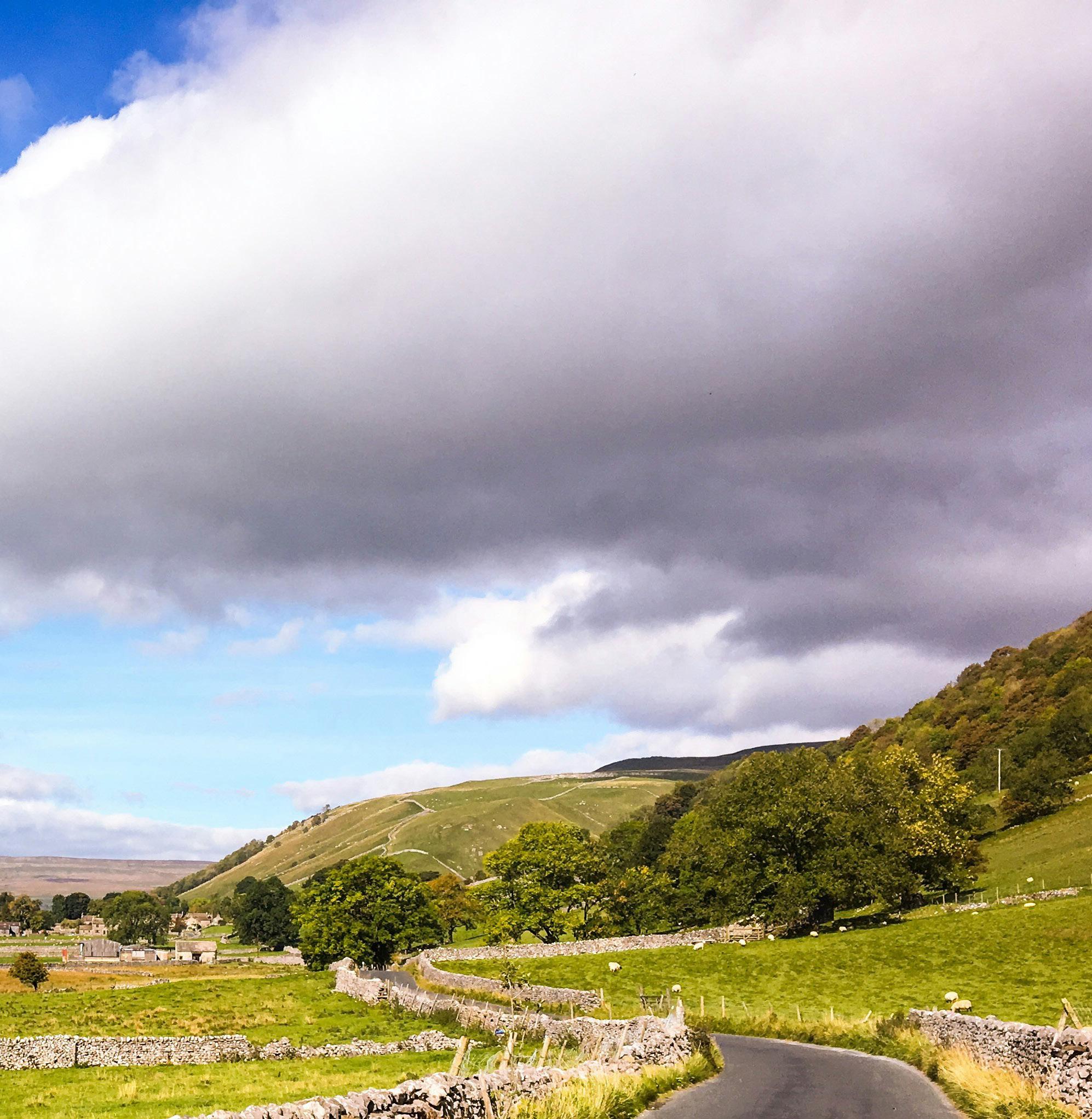 Photograph by Gary Butterfield, Unsplash
Photograph by Gary Butterfield, Unsplash
Nothing encapsulates summer like water sports. Surfability Wales offers something for everyone with their inclusive approach to surfing summer waves, with adaptive, uniquely designed surfing equipment.
Learn more
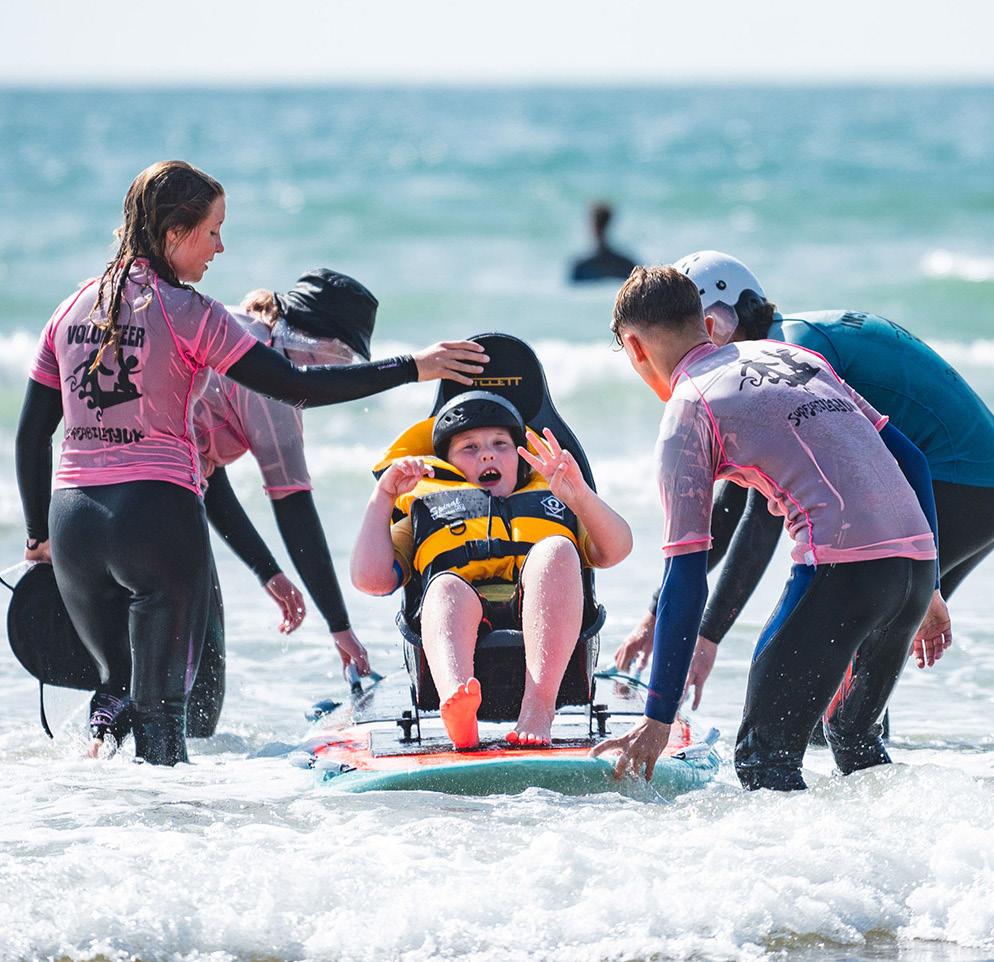
Photograph courtesy of Surfability, www.surfabilityukcic.org
If water isn’t your thing, why not take a wild Welsh horseback ride? Riding for the Disabled Associations’ Centres specially trained ponies allow riding with one hand and provide mounting blocks to assist getting on and off the horses. Those looking for a longer stay can book in a holiday at the Clwyd Special Riding Centre which collaborates with RDA groups to bring the freedom of horse riding to everyone.
Learn more
If solid ground is more your style, Conwy’s nature reserve offers stunning scenery and an accessible path around a picturesque lake -
a tamer but equally beautiful opportunity to see Wales outdoors in the sun.
Learn more

Wales also boasts a large number of inclusive theatre establishments such as Swansea Grand Theatre and Sherman Cymru However, we have chosen to spotlight The Hafren . Its hearing sound system, audio description and BSL interpreted performances, captioned and relaxed performances and dementia friendly screenings truly mean there is something for everybody. Early access entry and cooperation with the Hynt scheme (which covers all theatres in Wales) helps those with additional needs access theatre.
Learn more
Looking to scale the Scottish Highlands and Borders? Scotland’s legendary wilderness comes to life during the summer season. Access Mhor Cairngorms is a wonderful place to start; this company delivers outdoor activities for all abilities in Scotland’s well-renowned national park. If you’re up for a Munroe or simply want to tour some Lochs, we recommend looking into their various offers.
Learn more
Alternatively, there’s the Braemar Highland Games Centre which also offers a unique day out: hearing loops are available at the information desk, and the site is accessible to all.
Learn more
Inverness , Nessie’s home territory, is our Scottish urban highlight for this summer, being a particularly accessible destination. The city has plenty to entertain all ages, offering a botanic garden, Fort George , The Highlanders’ Museum , Merkinch Local Nature Reserve and the Culloden battlefield site , ensuring those with a nose for heritage are bound to be well satisfied.
Learn more
Into bird watching? The Sea Bird Centre on the Scottish border takes the weather dependent activity of birdwatching and holds an umbrella over it. The centre allows free admission for carers, provides hearing loops, and has a BSL speaking team member. If you’re interested in animals (particularly birds), this is sure to be a unique day out.
Learn more
The Scottish borders also host a fair share of epic castles, Abbotsford in Melrose and Floors Castle in Kelso are two historical sites which embody all the rich, romantic history Scotland has to offer.
Learn more about Abbotsford
Learn more about Floors Castle
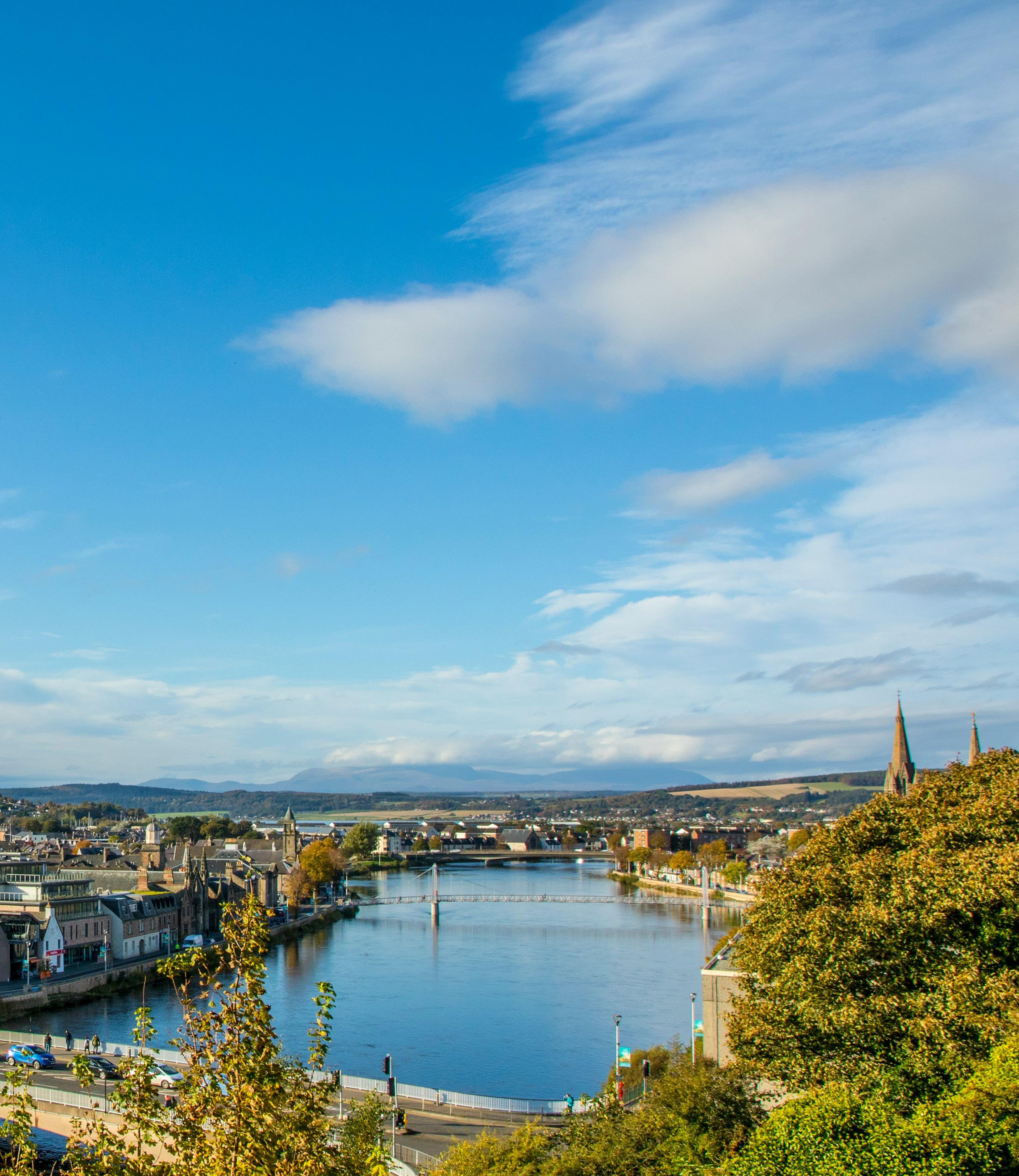
Whether you end up going on a well-deserved day trip or on a longer trip home or abroad, we wish you happy holidaying and hope you make some wonderful memories this year.
Photograph by Robin Canfield, UnsplashPlease share a little background about why you set up Therapy Stars?
I qualified as a physiotherapist back in 2002 and knew from the start that I wanted to work with children. I was lucky enough to be offered a community paediatric physiotherapy job in January 2004 and continued to work in NHS in Cheshire for over 10 years. I mainly spent that time working in special schools, but also worked across community services.
As much as I loved my work, as time went on, I could see that I was spending less time actually offering ‘hands-on’ physiotherapy and instead I was chasing equipment, fighting fires and having to work out how to spread

resources. My job satisfaction was slowly decreasing, and I was getting really frustrated.
So, having spoken to as many friends, colleagues and acquaintances that I could about moving into private practice, I could see that there was a real need for paediatric physiotherapy across the area that I lived in. Initially I took some associate work with another company, which was run by an amazingly supportive physiotherapist, and this gave me the confidence and cushion I needed to be able to build my own business from scratch. In 2014 Therapy Stars was created and I left the NHS!
I started off being based from home and offering home/school visits across Cheshire, Shropshire and North Wales. This involved LOTS of travelling! In January 2019 I then opened a clinic, which had always been the long-term plan, and I now employ 1 full and 2 part time paediatric physiotherapists, as well as 2 client care coordinators (who double up as assistants) and 4 associate physios!
What advice would you offer a family who are beginning to think that their loved one might need an assessment and/or treatment?
I would always say that if you think you or your family member needs advice and possible physiotherapy, do reach out and find a physiotherapist to help. Don’t “watch and wait,” which is a phrase that seems to be used far too frequently these days. At the very least, a physiotherapist should be able to signpost you to other professionals and/or services if they feel that they are not actually the best person to help.
Your first stop should still be to see if you can get a referral to your local NHS services from your GP (or possibly Health Visitor if for a child). Some surgeries now have physiotherapists based in their service where you can selfrefer for an assessment (usually for adults), so it is worth asking whether this might be suitable. Make sure you ask about waiting list times!
If waiting list times are long, I would recommend looking for
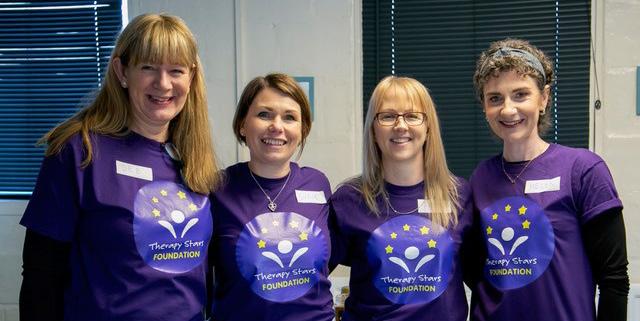
a private physiotherapist in your area. You can search a database via the Physiotherapy Union, CSP:
Search here
This allows you to use filters to find someone suitable nearby that offers the speciality that you need.
For children, we would always advise that early intervention is key. If you have concerns about your baby or child’s development or movement, a physiotherapy assessment is your best solution. We always give ideas and advice as part of that initial appointment, so parents feel they have something to be going away to put into practice afterwards, as well as recommendations for further sessions if needed. Often parental concerns can be dismissed – but we feel that a parent’s instinct should be listened to.
Therapy Stars turned 10 this year, what do you have planned for the next 10 years?
We are so proud that Therapy Stars has just celebrated our 10th Birthday! In that time we have expanded, opened a clinic base and developed what we offer to include Intensive Physiotherapy and Hydrotherapy (as well as navigating a pandemic!)
Over the next 10 years I would like to be able to continue to explore new and exciting techniques, methods and equipment within physiotherapy. We now use Whole Body Vibration and Electrical Stimulation for many clients. I would also like to introduce
other therapies such as Speech Therapy and Occupational Therapy so that we can offer a more rounded service.
What achievement are you most proud of?
In January 2023 I launched a new charity –Therapy Stars Foundation (TSF). The purpose of the charity is to offer therapy grants to local families so that they can access private therapy for their child. This could include physio, speech and language therapy, hydrotherapy, music therapy and counselling for families living across North & Mid Wales, Cheshire and Shropshire.
Although I had been running a private physiotherapy business for some time, it did not sit well with me that there are many families who just cannot access some therapy services due to financial restraints. The Covid pandemic compounded the issues around dwindling resources within the NHS so waiting lists grew longer, but also, many valuable therapy methods are just not available as part of NHS offerings. So I came up with the idea of TSF.
It has been far more work than I EVER anticipated, but so far we have been able to award 18 therapy grants in 18 months – which I am incredibly proud of! I am also so thankful for the amazing support of my friends (several of
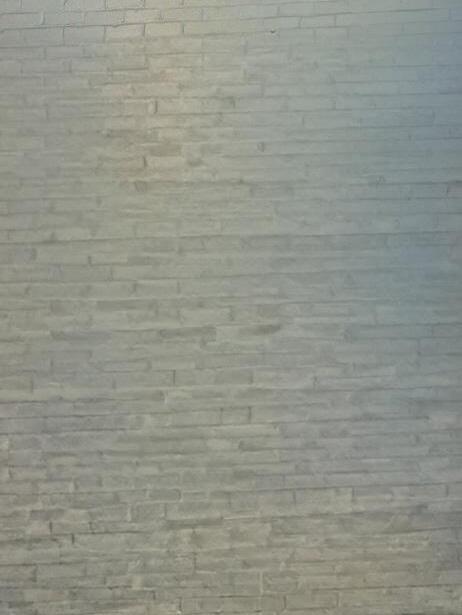
whom have been roped into being Trustees!), my family, our local community and our Therapy Stars clients who have supported us along the way.
What do you do for you/in your free time?
I love watching sport – I am a huge Wrexham FC fan and have been since childhood when my Dad dragged me along with him and my brother. I even did my physiotherapy work experience at the club twice and had visions of being their physio one day - until I got to university and realised that I have very little patience with adults who have injuries!
I also support Manchester Thunder netball team and we go to watch them play live as much as we can. Unfortunately I no longer play netball myself, but my daughter does.
I love watching musical theatre and live music – I can often be found at our local theatres and try to get down to London at least once a year. I also enjoy reading and watching murder mysteries and crime dramas.
Find out more
Visit Therapy Stars’ website
Visit Therapy Stars Foundation’s website
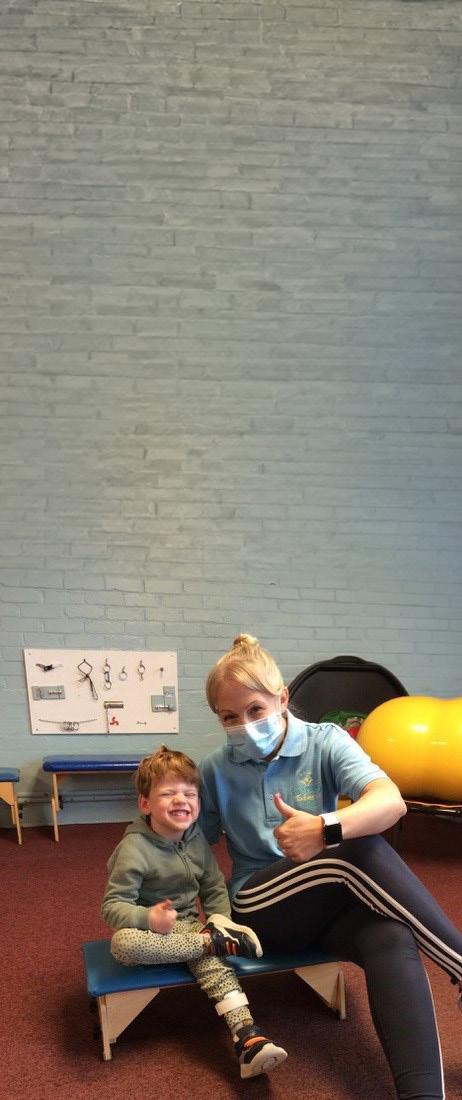

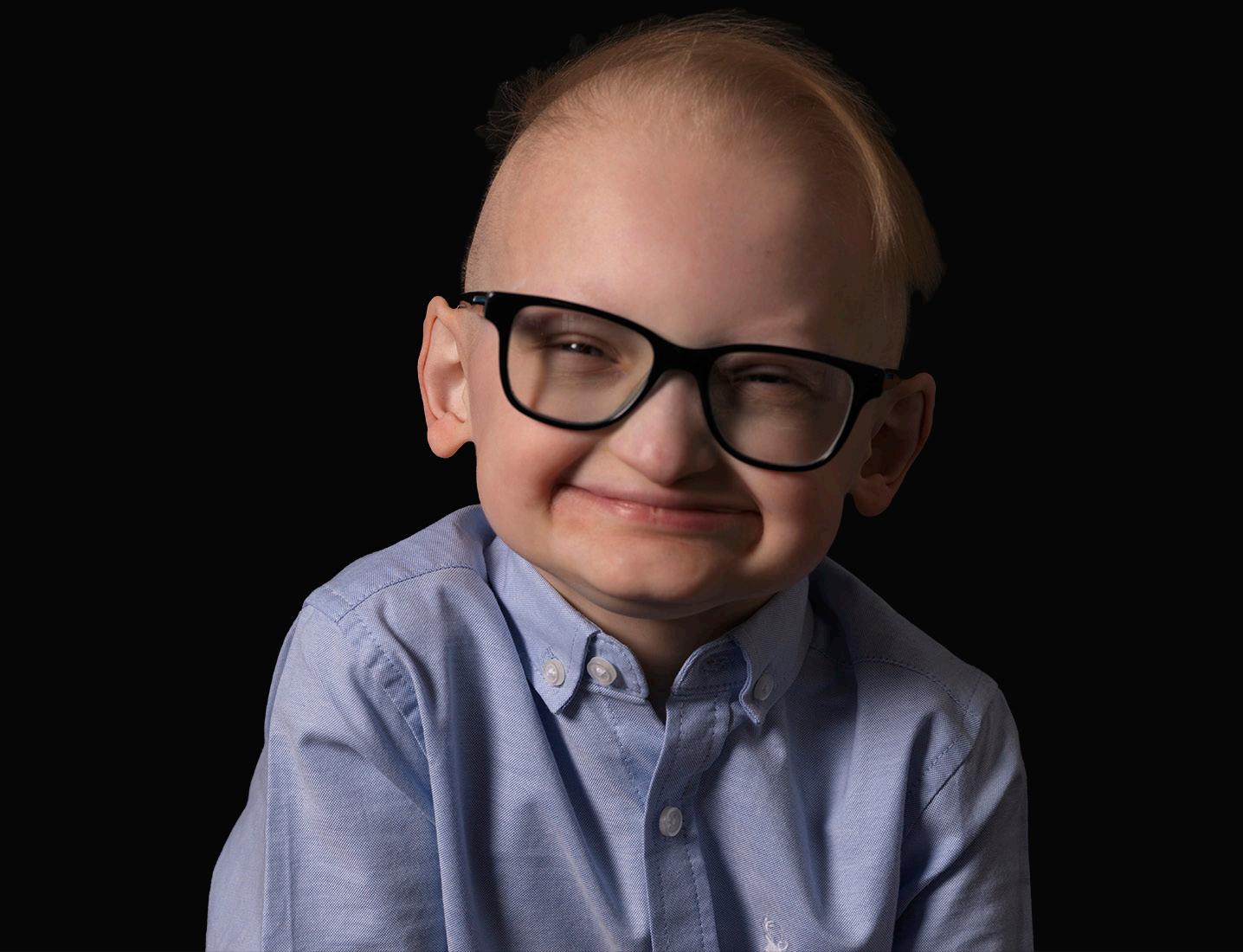
At Same but Different, we strive to make a positive difference to the lives of those affected by rare diseases. Through our Rare Navigator service, we offer emotional and practical support and information to individuals, their families and all involved in their care, from the point of diagnosis and beyond.
At Same but Different, we strive to make a positive difference to the lives of those affected by rare diseases. Through our Rare Navigator service, we offer emotional and practical support and information to individuals, their families and all involved in their care, from the point of diagnosis and beyond.
Our individualised support and advocacy service aims to ensure that each family is able to access the level of support they require to meet their needs. Our team can help you to access beneficial services and equipment, and can provide helpful information, tools and resources that encourage understanding of rare diseases and how it may affect your family.
Our individualised support and advocacy service aims to ensure that each family is able to access the level of support they require to meet their needs. Our team can help you to access beneficial services and equipment, and can provide helpful information, tools and resources that encourage understanding of rare diseases and how it may affect your family.
We work closely with national and local health and social care providers to ensure that our families are informed and have access to optimum care, treatment and services that can assist daily life and increase opportunities for independence and social interaction.
Our support area of North Wales will be expanded for the time-being and if we can't help you, we will put you in touch with our colleagues in disease specific support organisations. Katy Parry has a personal and professional understanding of the complexities and difficulties that families face and can support you in navigating your way through your rare disease journey. Some of the ways she supports families include:
Our support area of North Wales will be expanded for the time-being and if we can’t help you, we will put you in touch with our colleagues in disease specific support organisations. Katy Parry has a personal and professional understanding of the complexities and difficulties that families face and can support you in navigating your way through your rare disease journey. Some of the ways she supports families include:
•Home visits (whenever necessary)
• Home visits (whenever necessary)
•Supporting families to understand the choices of care that may be available
• Supporting families to understand the choices of care that may be available
• Helping families to access their local healthcare services
•Helping families to access their local healthcare services
We work closely with national and local health and social care providers to ensure that our families are informed and have access to optimum care, treatment and services that can assist daily life and increase opportunities for independence and social interaction.
For more information, please contact us on enquiries@samebutdifferentcic.org.uk or call 01352 757007
For more information, please contact us on enquiries@samebutdifferentcic.org.uk or call 01352 757007
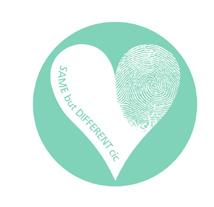
•Liaising with local health and social care teams, which may include your Occupational Therapist, Speech and Language Therapist or Social Worker
• Liaising with local health and social care teams, which may include your Occupational Therapist, Speech and Language Therapist or Social Worker
•Working with schools and teaching staff to provide information to support children in attending and achieving at school
• Working with schools and teaching staff to provide information to support children in attending and achieving at school
•Accompanying individuals and families to clinic appointments or meetings.
• Accompanying individuals and families to clinic appointments or meetings.
Same but Different cic, The Old Chapel, 91 Wrexham Street, Mold CH7 1HQ www.samebutdifferentcic.org.uk
 Photograph by Ceridwen Hughes
Photograph by Ceridwen Hughes
ADAPTIVE FITNESS
www.youtube.com/@ AdaptToPerform www.amgfitness.org www.apps.apple.com www.jesistracham.com www.nikkiwalsh.com www.ebeemedia.co.uk www.equipproducts.com www.wheelwod.com
BROADWAY SONGS ARE MY SMILE www.moebiussyndrome.org
MEET THE PROFESSIONAL www.cerebra.org.uk
CLARA WOODS - THE STORY BEHIND THE ARTIST www.stroke.org.uk www.childneurologyfoundation.org
DARE TO BE DIFFERENT www.houseoffraser.co.uk www.amazon.co.uk
EMBRACING WHOLENESS: A JOURNEY OF MIND, BODY AND NATURE CONNECTION www.riseandwild.com
LIVING WITH LEUKAEMIA www.bloodcancer.org.uk
MAJESTIC MALTA www.heritagemalta.mt www.disabledaccessibletravel.com
www.marriott.com
www.hotelverdimalta.com www.dbhotelsresorts.com www.rebekahsrestaurant.com www.radicimalta.com www.tartarun.com
ON UNIQUENESS
www.birthmark.org www.helenamaroszek.com
RARELY REFRAMED
www.sturgeweber.org.uk www.birthmark.org www.changingfaces.org.uk www.samebutdifferentcic.org.uk/ rarelyreframed
SUMMER DAYS
www.getactiveabc.com www.belfastactivitycentre.com www.armagh.space www.w5online.co.uk www.bcpcouncil.gov.uk www.yorkshiredales.org.uk www.edenproject.com www.surfabilityukcic.org www.rspb.org.uk www.thehafren.co.uk www.able2adventure.co.uk www.braemargathering.org www.accessable.co.uk www.seabird.org www.scottsabbotsford.com www.floorscastle.com
Supported by:
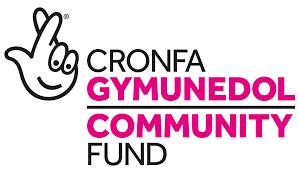

TEARS, ANGER AND HEARTBREAK www.childbereavementuk.org www.winstonswish.org www.griefencounter.org.uk www.childhoodbereavementnetwork.org.uk
THE HOME OF THE MOEBIUS COMMUNITY www.moebiussyndrome.org
THE POWER OF COLLABORATION
www.sma-europe.eu
TRANSFORMING LIVES THROUGH SPORT
www.specialolympicsgb.org.uk www.specialolympics.org www.naksportsimages.co.uk
WE ALL DESERVE TO BE SEEN www.gosh.nhs.uk www.facebook.com/ LoveMeLoveMyFaceFoundation www.treachercollins.org.uk www.penguin.co.uk
WHAT WE’RE INTO www.suleikajaouad.com www.www.jonbatiste.com
5 QUESTIONS WITH www.csp.org.uk www.therapystars.co.uk www.therapystarsfoundation.org.uk

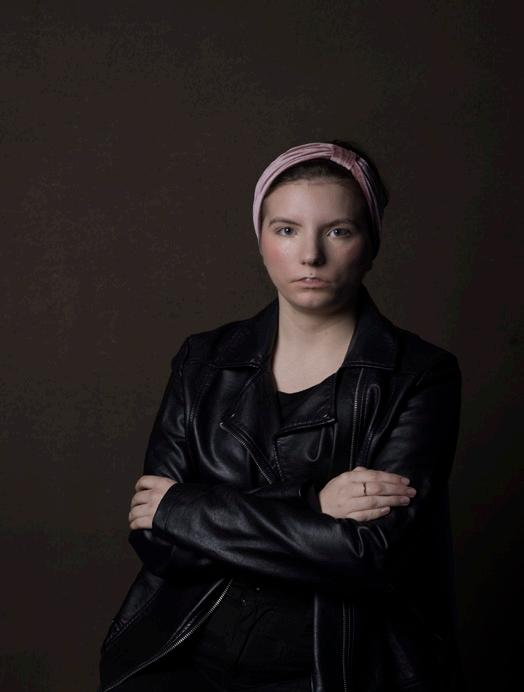
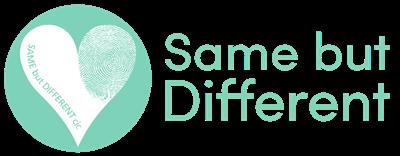

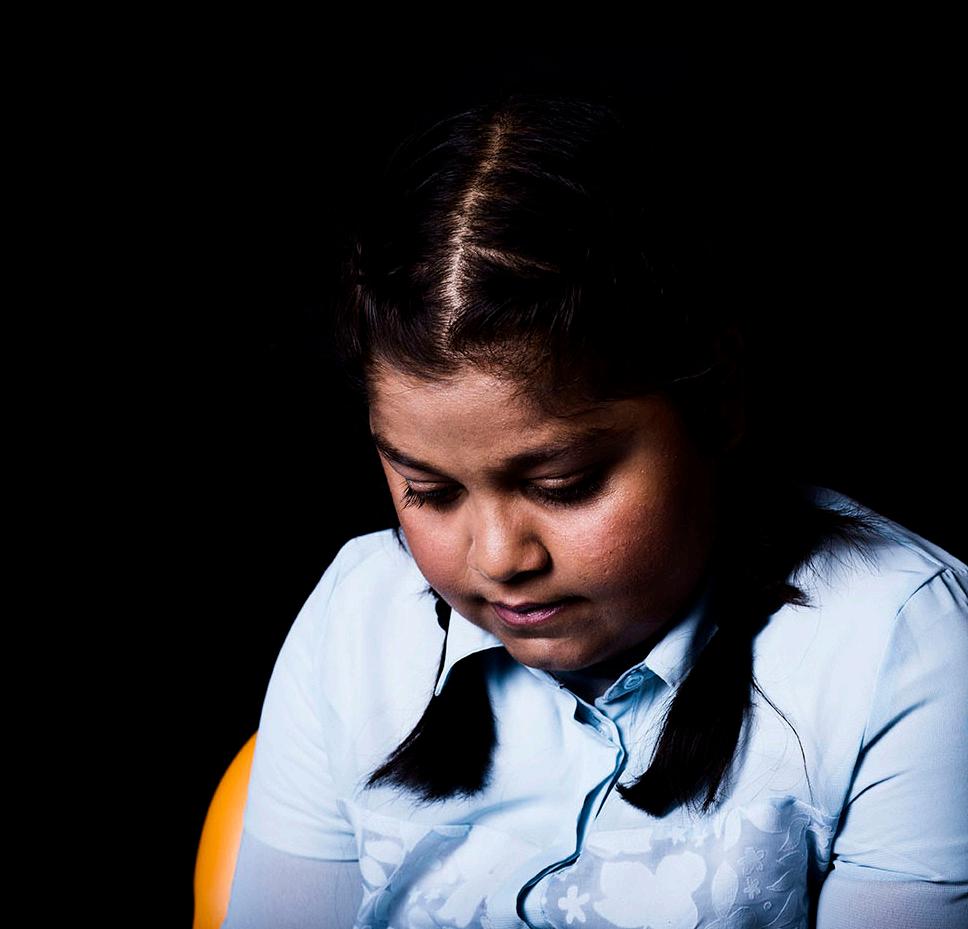
We produce powerful films, strong imagery & compelling narrative; creating a visual storytelling experience that allows you to connect more closely with your audience.
We work with organisations, agencies and publications that love to make an impact. We can join as a creative partner and help shape the creative direction into an impactful photography campaign or film, or we can work to your brief.
Helping you connect to your audience with integrity.
Creativity. Collaboration. Empowerment.
Find out more by visiting: www.sbdcreative.co.uk